
Reporting Category Statements
B.E.S.T. Standards: Mat
hematics
May 2024

Table of Contents
Introduction .................................................................................................................................................................................................................... 4
Additional Resources ...................................................................................................................................................................................................... 5
Grade 3 Mathematics Reporting Category Statements .................................................................................................................................................. 6
Grade 4 Mathematics Reporting Category Statements ................................................................................................................................................ 14
Grade 5 Mathematics Reporting Category Statements ................................................................................................................................................ 20
Grade 6 Mathematics Reporting Category Statements ................................................................................................................................................ 29
Grade 7 Mathematics Reporting Category Statements ................................................................................................................................................ 34
Grade 8 Mathematics Reporting Category Statements ................................................................................................................................................ 39
Algebra 1 Reporting Category Statements .................................................................................................................................................................. 44
Geometry Reporting Category Statements .................................................................................................................................................................. 49

Copyright Statement for This Office of Assessment Publication
Authorization for reproduction of this document is hereby granted to persons acting in an official capacity within the Uniform System of Public K–12
Schools as defined in Section 1000.01(4), Florida Statutes. The copyright notice at the bottom of this page must be included in all copies.
All trademarks and trade names found in this publication are the property of their respective owners and are not associated with the publishers of this
publication.
This publication is provided by the Florida Department of Education to Florida public schools free of charge and is not intended for resale.
Permission is not granted for distribution or reproduction outside of the Uniform System of Public K–12 Schools or for commercial distribution of the
copyrighted materials without written authorization from the Florida Department of Education. Questions regarding use of these copyrighted materials
should be sent by email to Assess[email protected]rg
or by postal mail to the following address:
Bureau of K–12 Student Assessment
Florida Department of Education
325 West Gaines Street
Tallahassee, Florida 32399–0400
Copyright © 2024
State of Florida
Department of State

Introduction
Reporting Category Statements – B.E.S.T. Mathematics Standards 4
Office of Assessment Florida Department of Education
Introduction
Students who participate in one or more of Florida's statewide, standardized assessments in grades 3–10 and/or end-of-course (EOC)
assessments in Algebra 1, Geometry, Civic, U.S. History, and Biology 1 will receive a detailed score report that is unique to computer-adaptive
assessments for each assessment. Each report will contain detailed information about the student’s performance, narratives regarding strengths
and weaknesses, and suggestions as to steps parents/guardians can take to help students progress in their learning. The information in each
report is intended primarily for students and families and is not intended to replace classroom instruction.
The most detailed narrative is provided at the reporting category level. Reporting categories refer to major groupings of content and skills, such
as Reading Informational Text or Reading Prose and Poetry in English Language Arts (ELA); Number Sense and Operations with Whole
Numbers or Algebraic Reasoning in Mathematics; Nature of Science in Science; and Roles, Rights, and Responsibilities in Social Studies;
among others. For each of the reporting categories, three tiers of text have been created based on state academic standards and informed by the
Achievement Level Descriptors (ALDs) that were written by Florida educators. These tiers include Below Expectations, At/Near Expectations
or On Grade Level, and Above Expectations. These reports classify student performance into one of the three tiers based on student responses
to items that measure the benchmarks associated with that reporting category. Individual benchmark codes can be found in a report beneath the
name of the correlated reporting category. Each student’s report is tailored to provide specific information based on which of the three tiers that
each reporting category score falls into. This document provides the complete set of narratives so that stakeholders can see expectation
progressions within a reporting category and, if appropriate, across grades.
Each description included in these reports and the accompanying next steps were drafted by panels of Florida educators and reviewed by larger
Florida educator committees facilitated by EdCount, LLC, and consisting of Florida educators, specialists from the Bureau of Standards and
Instructional Support and other Florida Department of Education personnel.
It is important to keep in mind that a student’s overall score provides the most valid and reliable evidence of what the student knows and can do
with respect to the state academic standards. Due to the relatively small size of each reporting category, neither individual nor combined
reporting category performance should be used to infer overall performance.
For more information on Florida’s statewide, standardized assessments, please see the Statewide Assessments Guide. Please direct questions and
comments about these reports to Assessment@fldoe.org.

Additional Resources
Disclaimer: This document is informational and is not for instructional purposes. The knowledge and skills described do not encompass all that a student is expected to learn in this grade.
Reporting Category Statements – B.E.S.T. Mathematics Standards 5
Office of Assessment Florida Department of Education
Additional Resources
The following resources are available to support understanding of the test design for Florida’s statewide, standardized assessments and the
skills outlined in the state academic standards.
B.E.S.T. Standards Achievement Level Descriptions
Florida’s B.E.S.T. Standards: Mathematics
FAST Mathematics and B.E.S.T. EOC Test Design Summary
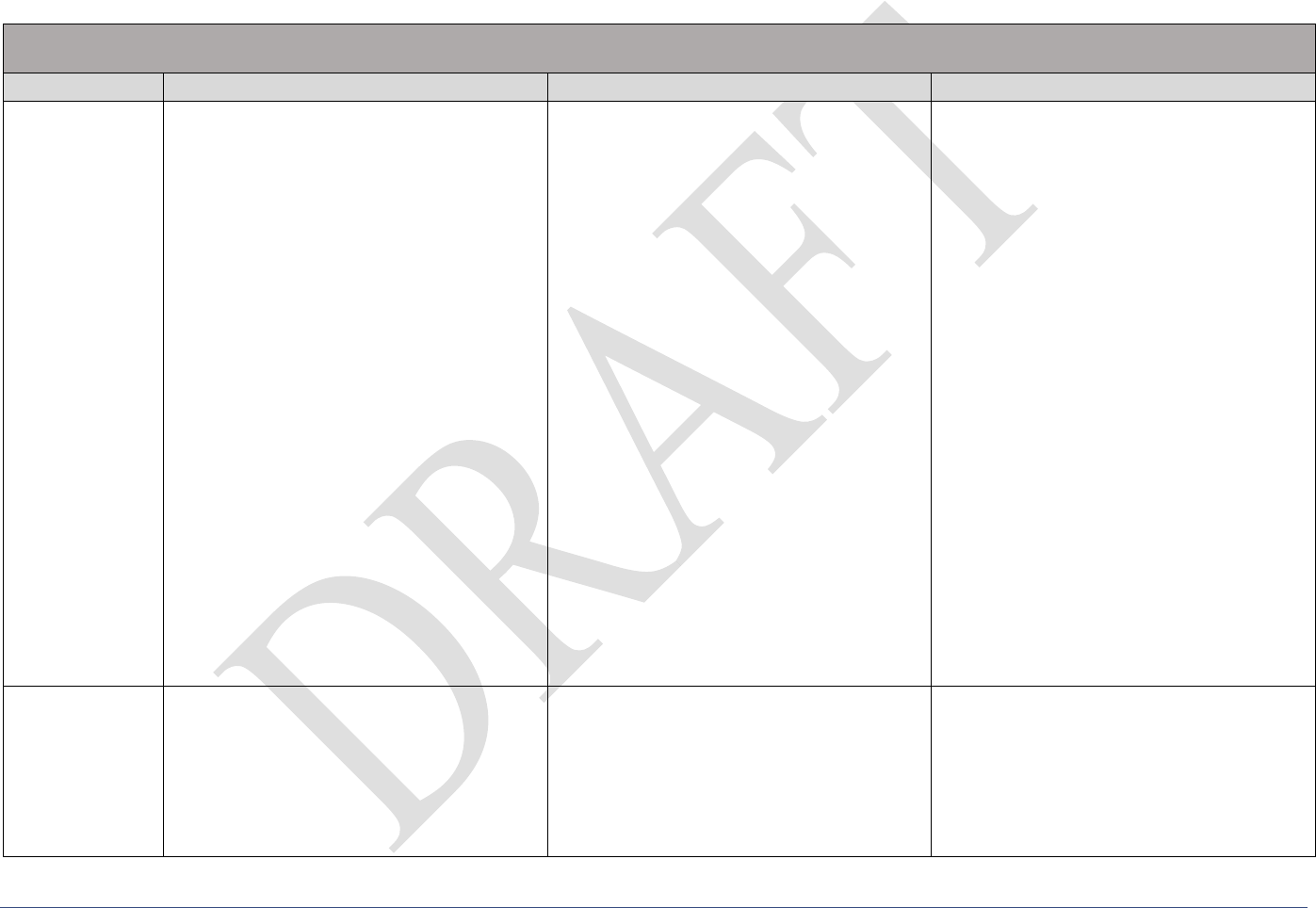
Grade 3 Mathematics Reporting Category Statements
Disclaimer: This document is informational and is not for instructional purposes. The knowledge and skills described do not encompass all that a student is expected to learn in this grade.
Reporting Category Statements – B.E.S.T. Mathematics Standards 6
Office of Assessment Florida Department of Education
Grade 3 Mathematics Reporting Category Statements
Number Sense and Additive Reasoning
See Benchmarks for Excellent Student Thinking 3.NSO.1.1, 3.NSO.1.2, 3.NSO.1.3, 3.NSO.1.4, 3.NSO.2.1, 3.AR.1.2, 3.AR.3.1, 3.AR.3.3
Indicator
Below Expectations
At/Near Expectations
Above Expectations
What These
Results Mean
For example, your learner may be able to:
• Compose and decompose (build and
break apart) four-digit numbers using
objects or drawings.
• Plot and compare numbers up to
10,000 using symbols (<, >, =) and a
number line with labeled intervals of
10s, 100s, or 1000s.
• Solve one-step word problems
involving addition, subtraction, basic
multiplication, and division.
• Identify a numerical pattern (e.g., What
is the rule for the number pattern: 5,
10, 15, 20, 25, . . .?).
• Determine whether a whole number
from 1 to 100 is even or odd.
• Round whole numbers up to 1,000 to
the nearest 10.
For example, your learner may be able to:
• Read and write numbers up to 10,000
using standard and word form.
• Compose and decompose (build and
break apart) four-digit numbers based
on place value.
• Plot whole numbers up to 10,000 on
number lines with different intervals
(50s, 100s, 1,000s).
• Compare numbers up to 10,000 using
symbols (<, >, =).
• Solve one- and two-step problems
involving addition and subtraction and
one-step problems involving
multiplication and division.
• Determine whether a whole number
from 1 to 1,000 is even or odd.
• Round whole numbers up to 1,000 to
the nearest 100.
• Identify numerical patterns (e.g.,
Bailey collects baseball cards every
day. This generates the pattern 4, 8,
12, 16, 20, . . . . What is the rule for
this number pattern?).
For example, your learner may be able to:
• Identify errors in mathematical
problems.
• Read and write numbers up to 10,000
in multiple ways.
• Demonstrate and explain the
composition and decomposition
(building and breaking apart) of
numbers.
• Round numbers up to 1,000 to the
nearest 10 or 100.
• Solve and explain one- and two-step
word problems involving the four
operations.
• Explain whether a whole number from
1 to 1,000 is even or odd.
• Identify, create, and extend numerical
patterns (e.g., Bailey collects 6
baseball cards every day. This
generates the pattern 6, 12, 18, . . . .
How many baseball cards will Bailey
have at the end of the sixth day?).
Next Steps
For example, have your learner:
• Write and read numbers greater than
1,000 when given verbally and in
written form.
• Use manipulatives, such as base-ten
blocks, to build number sense to the
hundreds and thousands in multiple
For example, have your learner:
• Read and write numbers in standard
form, word form, and expanded
notation up to the ten thousands
interchangeably.
For example, have your learner:
• Practice identifying, explaining, and
correcting errors in addition and
subtraction problems to demonstrate
fluency.
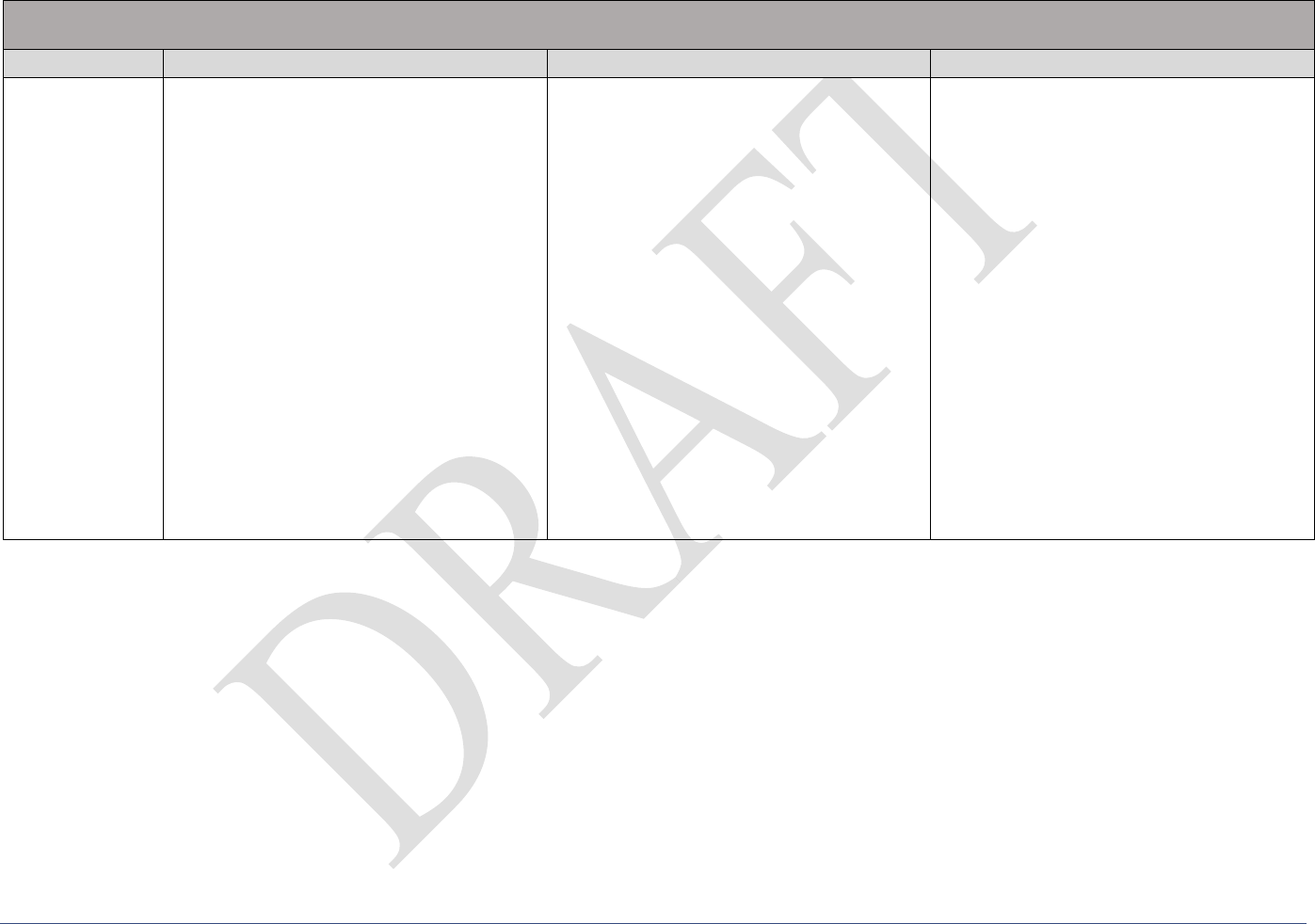
Grade 3 Mathematics Reporting Category Statements
Disclaimer: This document is informational and is not for instructional purposes. The knowledge and skills described do not encompass all that a student is expected to learn in this grade.
Reporting Category Statements – B.E.S.T. Mathematics Standards 7
Office of Assessment Florida Department of Education
Number Sense and Additive Reasoning
See Benchmarks for Excellent Student Thinking 3.NSO.1.1, 3.NSO.1.2, 3.NSO.1.3, 3.NSO.1.4, 3.NSO.2.1, 3.AR.1.2, 3.AR.3.1, 3.AR.3.3
Indicator
Below Expectations
At/Near Expectations
Above Expectations
ways (e.g., 1,034 would be represented
with one thousand block, three tens
rods, and four unit cubes).
• Write three-digit numbers on separate
index cards (e.g., 368, 402). With the
cards, order several from least to
greatest, classify numbers as even or
odd, and practice addition and
subtraction.
• Identify the next number in a pattern
when given a series of numbers.
• Identify the thousands, hundreds, tens,
and ones place in given numbers and
practice rounding numbers to specific
place values (e.g., nearest 10 or 100).
• Identify which digit is in the thousands,
hundreds, tens, and ones place of a
given number.
• Decompose numbers in as many ways
as possible. Then, compare and
contrast the representations generated.
• Plot, order, and compare numbers up to
the ten thousands.
• Use manipulatives, such as base-ten
blocks, to build number sense to the
hundreds and thousands in multiple
ways (e.g., 1,034 would be represented
with ten hundreds and thirty-four
ones).
• Solve and explain word problems that
involve addition, subtraction,
multiplication, and division.
• Practice multiplication by flipping over
two cards of a card deck at a time.
• Read and write numbers in standard
form, word form, and expanded
notation up to one million.
• Solve and explain real-world problems
involving more than one operation.
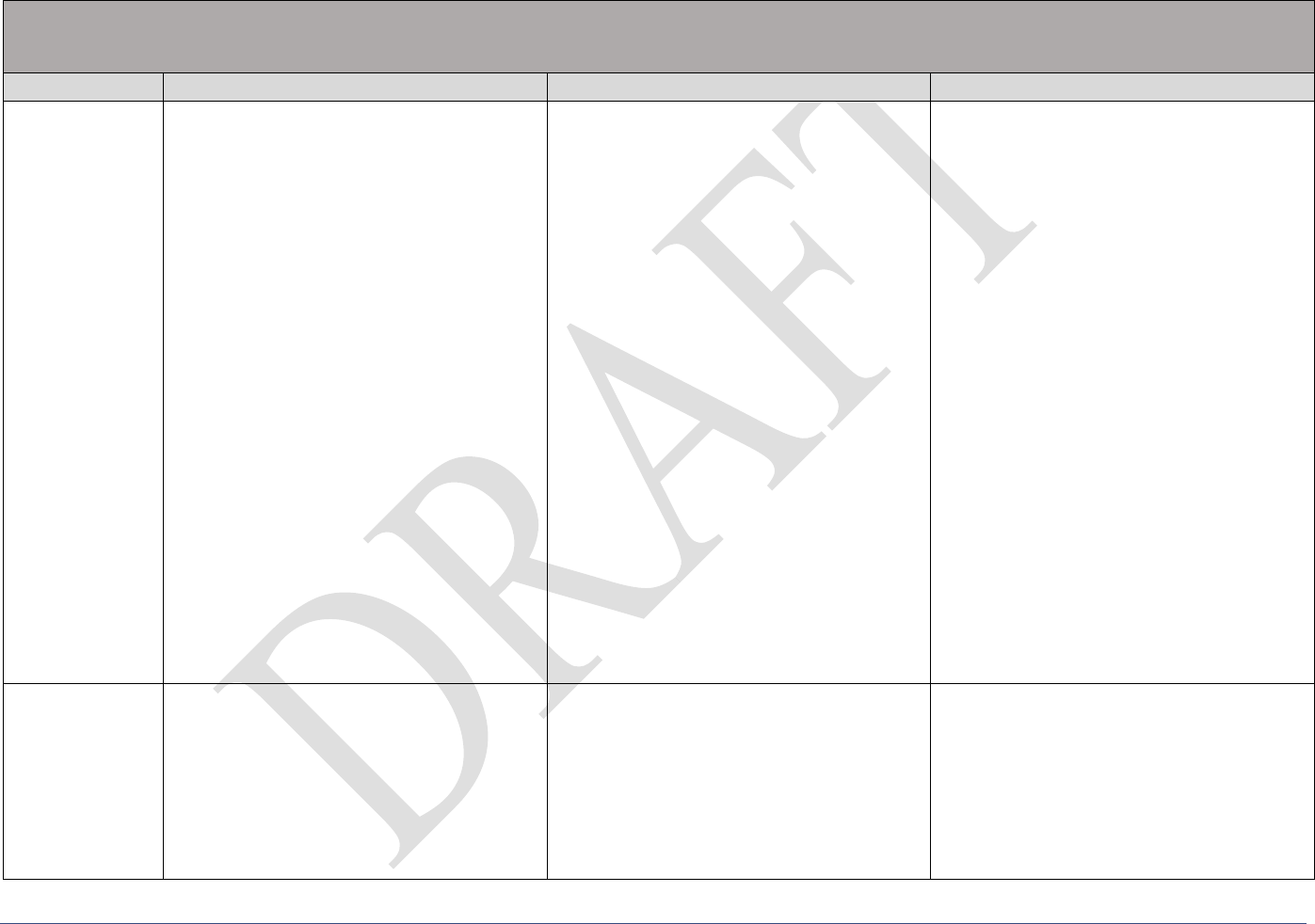
Grade 3 Mathematics Reporting Category Statements
Disclaimer: This document is informational and is not for instructional purposes. The knowledge and skills described do not encompass all that a student is expected to learn in this grade.
Reporting Category Statements – B.E.S.T. Mathematics Standards 8
Office of Assessment Florida Department of Education
Number Sense and Multiplicative Reasoning
See Benchmarks for Excellent Student Thinking 3.NSO.2.3, 3.NSO.2.4 (including 3.NSO.2.2), 3.AR.1.1, 3.AR.2.2, 3.AR.2.3 (including 3.AR.2.1),
3.AR.3.2, 3.GR.2.1, 3.GR.2.2
Indicator
Below Expectations
At/Near Expectations
Above Expectations
What These
Results Mean
For example, your learner may be able to:
• Multiply whole numbers by factors of
1, 2, or 5 and related division facts.
• Multiply one-digit whole numbers by
10.
• Determine the product of one-digit
whole numbers by applying the
commutative property (e.g., 4 x 3 = 3 x
4).
• Determine whether an equation
involving multiplication or division
with up to three terms is true or false.
• Determine whether a whole number
from 1 to 100 is a multiple of a given
one-digit number when given a visual
representation.
• Find the area of a rectangle by
counting unit squares that cover the
figure.
For example, your learner may be able to:
• Multiply whole numbers by factors up
to and including 10 and related division
facts.
• Multiply one-digit whole numbers by
multiples of 10 (up to 90).
• Determine the product of three or more
whole numbers within 12 by applying
the commutative and/or associative
property [e.g., 2 x (4 x 3) = 3 x (4 x 2)].
• Determine whether an equation
involving multiplication and division
with up to four terms is true or false.
• Determine unknown numbers in
multiplication and division problems
with an unknown number in different
positions.
• Determine whether a whole number in
the range of 1 to 100 is a multiple of a
given number.
• Find the area of a rectangle in square
units by using a visual model (e.g.,
using unit squares along the perimeter
and relating it to an array model).
For example, your learner may be able to:
• Multiply whole numbers by factors up
to and including 12 and related division
facts.
• Identify and correct errors in equations.
• Multiply a one-digit number and a two-
digit number by applying the
distributive property [e.g., 5 x (20 + 4)
= (5 x 20) + (5 x 4)].
• Determine whether an equation using
the four operations is true or false and
rewrite false equations as true.
• Determine whether a whole number
from 1 to 144 is a multiple of a given
number up to factors of 12.
• Find the area of a rectangle with whole
number side lengths.
Next Steps
For example, have your learner:
• Group small objects, such as beans,
into equal groups and count them.
• Practice counting by multiples of any
given number up to 12.
• Practice basic multiplication facts by
rolling two dice and multiplying the
numbers.
For example, have your learner:
• Build automaticity with multiplication
and division facts up to 12 x 12.
• Play math games such as I’m thinking
of two numbers whose product is
between 15 and 25. What numbers
could I be multiplying?
For example, have your learner:
• Multiply two whole numbers with
products from 0 to 144 and identify
their related division facts.
• Identify and correct errors in incorrect
multiplication and division problems.
• Determine the common multiples when
given two numbers between 1 and 12.
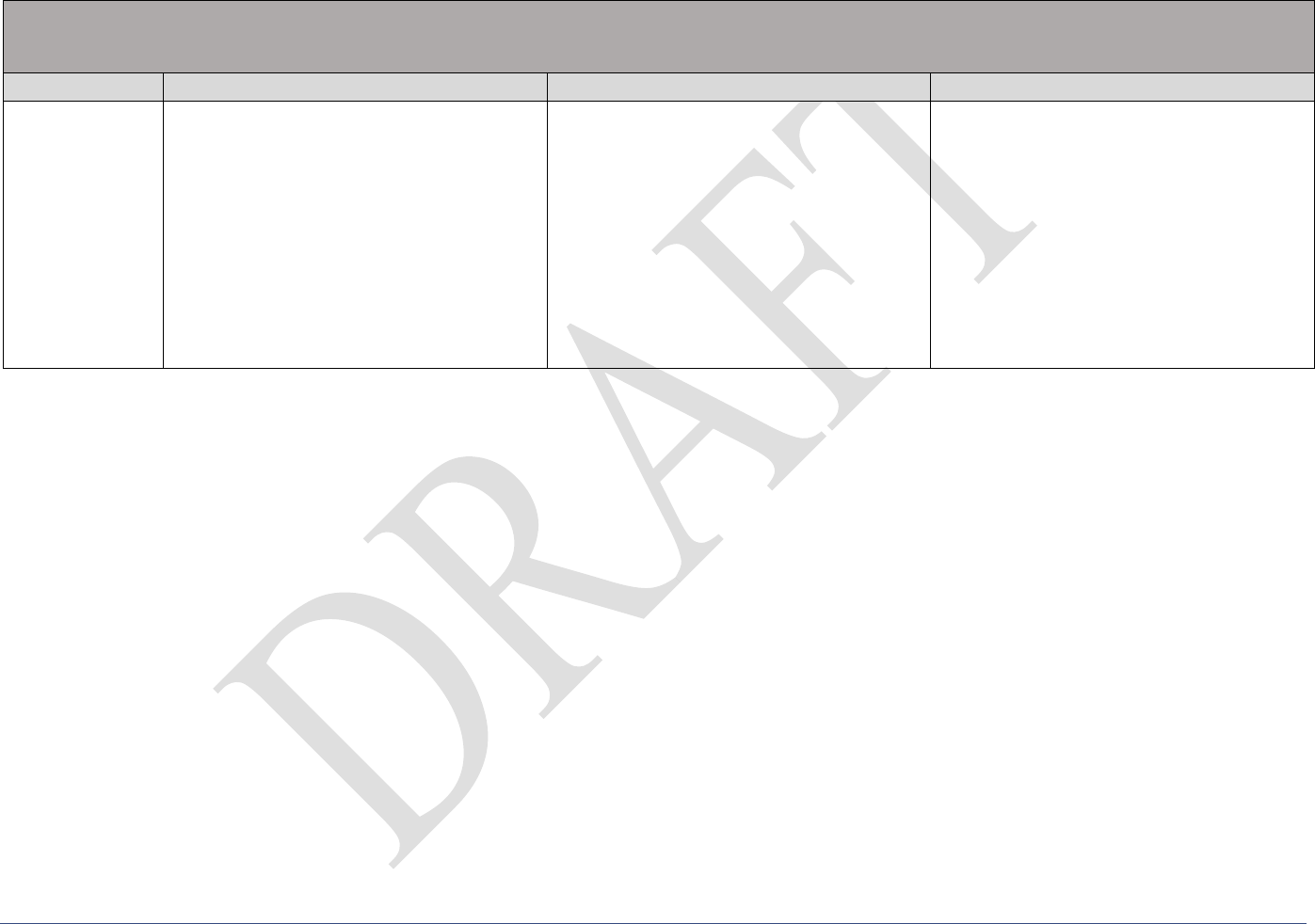
Grade 3 Mathematics Reporting Category Statements
Disclaimer: This document is informational and is not for instructional purposes. The knowledge and skills described do not encompass all that a student is expected to learn in this grade.
Reporting Category Statements – B.E.S.T. Mathematics Standards 9
Office of Assessment Florida Department of Education
Number Sense and Multiplicative Reasoning
See Benchmarks for Excellent Student Thinking 3.NSO.2.3, 3.NSO.2.4 (including 3.NSO.2.2), 3.AR.1.1, 3.AR.2.2, 3.AR.2.3 (including 3.AR.2.1),
3.AR.3.2, 3.GR.2.1, 3.GR.2.2
Indicator
Below Expectations
At/Near Expectations
Above Expectations
• Solve problems that require
multiplication by 10s (10, 20, 30 . . .)
up to 100.
• Determine an unknown number in a
multiplication or division equation with
a missing number in any position (e.g.,
7 x ? = 21).
• Find the area of a rectangle in square
units by counting units tiled along the
perimeter.
• Solve real-life situations you encounter
such as how many days until a holiday
that is in 3 weeks or how many
balloons you will need if 6 children
each get 5 balloons.
• Identify and explain errors in
multiplication and division problems.
• Practice finding the area of small
rectangular figures such as cell phones
and books with the length and width
labeled.
• Solve multi-step problems in a real-
world context using the four
operations.
• Calculate the area of a rectangle
observed in real-life settings.
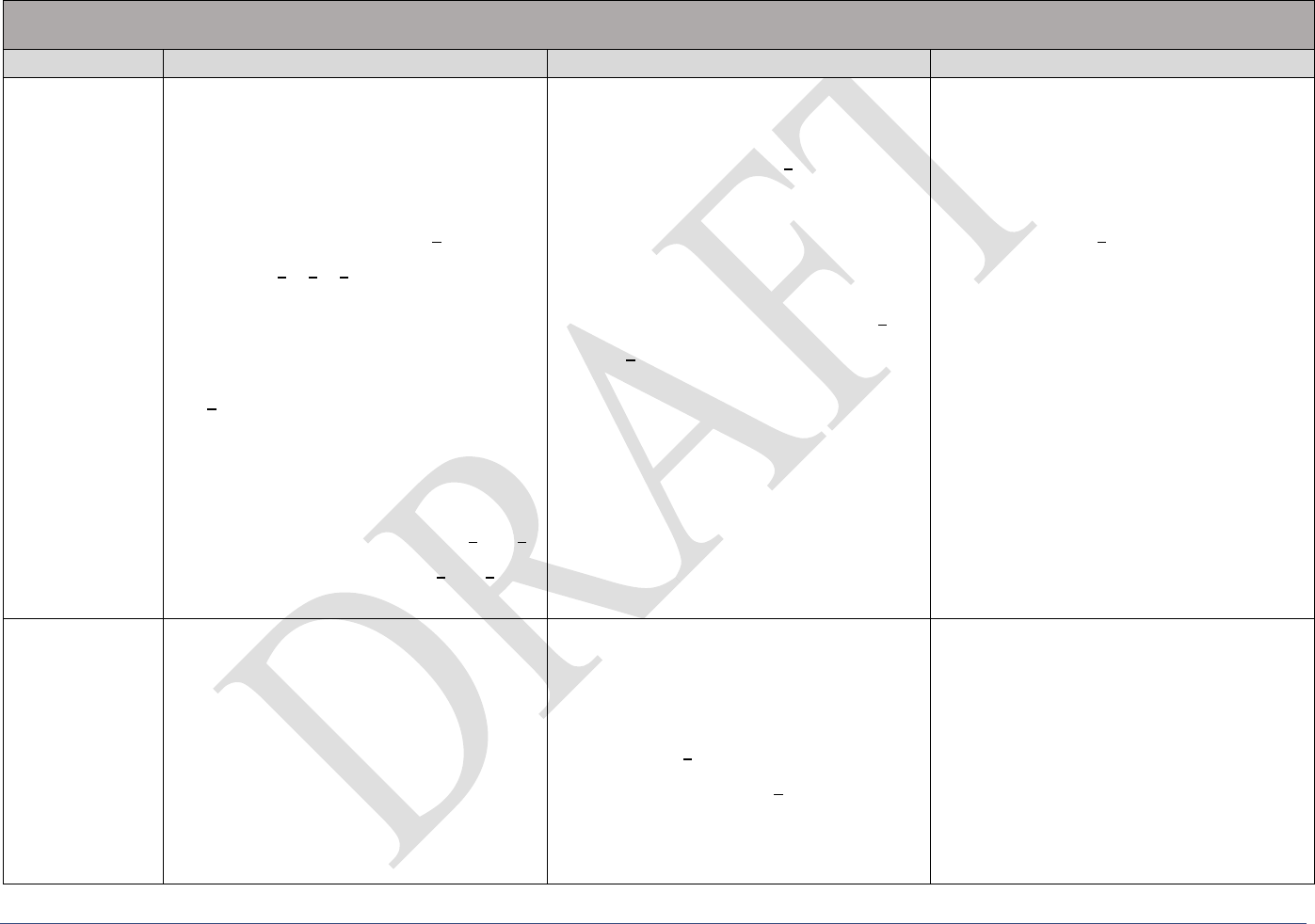
Grade 3 Mathematics Reporting Category Statements
Disclaimer: This document is informational and is not for instructional purposes. The knowledge and skills described do not encompass all that a student is expected to learn in this grade.
Reporting Category Statements – B.E.S.T. Mathematics Standards 10
Office of Assessment Florida Department of Education
Fractional Reasoning
See Benchmarks for Excellent Student Thinking 3.FR.1.1, 3.FR.1.2, 3.FR.1.3, 3.FR.2.1, 3.FR.2.2
Indicator
Below Expectations
At/Near Expectations
Above Expectations
What These
Results Mean
For example, your learner may be able to:
• Use a model and fractional notation to
represent a fraction. Denominators are
limited to 2, 3, 4, 5, and 6.
• Use a visual model to decompose
(break apart) a fraction into unit
fractions (e.g., the fraction
3
4
is the
same as
1
4
+
1
4
+
1
4
).
• Read and write fractions less than one
in numeral-word form, word form, and
standard form. Denominators are
limited to 2, 3, and 4 (e.g., the fraction
1
2
written in word form is one-half).
• Plot fractional numbers with the same
numerator or denominator on a number
line.
• Identify equivalent fractions that
represent one whole (e.g., both
2
2
and
3
3
equal 1) and one-half (e.g.,
1
2
and
2
4
)
using a visual model.
For example, your learner may be able to:
• Read and write fractions in numeral-
word form, word form, and standard
form (e.g., the fraction
3
4
written in
word form is three-fourths and
numeral-word form is 3 fourths).
• Plot and compare fractional numbers
with the same numerator or
denominator.
• Identify equivalent fractions (e.g.,
6
8
and
3
4
) using a visual model.
Denominators are limited to 2, 3, 4, 5,
6, 8, 10, and 12.
For example, your learner may be able to:
• Represent and interpret fractions
including when fractions greater than
one are separated into unit parts.
• Read and write fractions in various
forms, including fractions greater than
1 (the fraction
3
2
written in word form is
three-halves and numeral-word form is
3 halves).
• Order and compare fractions with the
same numerator or denominator.
• Identify errors in fractional reasoning.
• Demonstrate and explain why two
fractions can be identified as
equivalent or non-equivalent.
Next Steps
For example, have your learner:
• Identify household items as part of a
set or food items sectioned into equal
parts as fractions. Identify the fraction
that one part represents and add some
or all of the equal parts.
• Explain whether the fraction part gets
larger or smaller when the denominator
is changed.
For example, have your learner:
• Use food item sections to represent
fractions that have a denominator from
2 to 6 and 8 to 10.
• Use measuring cups to demonstrate
how many
1
3
cups are in 1 cup or how
many times you refill
1
2
cup to make 2
cups.
• Explain whether a fraction is larger or
smaller than another when the
For example, have your learner:
• Decompose (break apart) a fraction
greater than one into two fractions with
one being equal to one.
• Solve real-world problems involving
the addition of fractions with the same
denominator.
• Plot, order, and compare fractions with
the same numerator or denominator
and explain their reasoning.
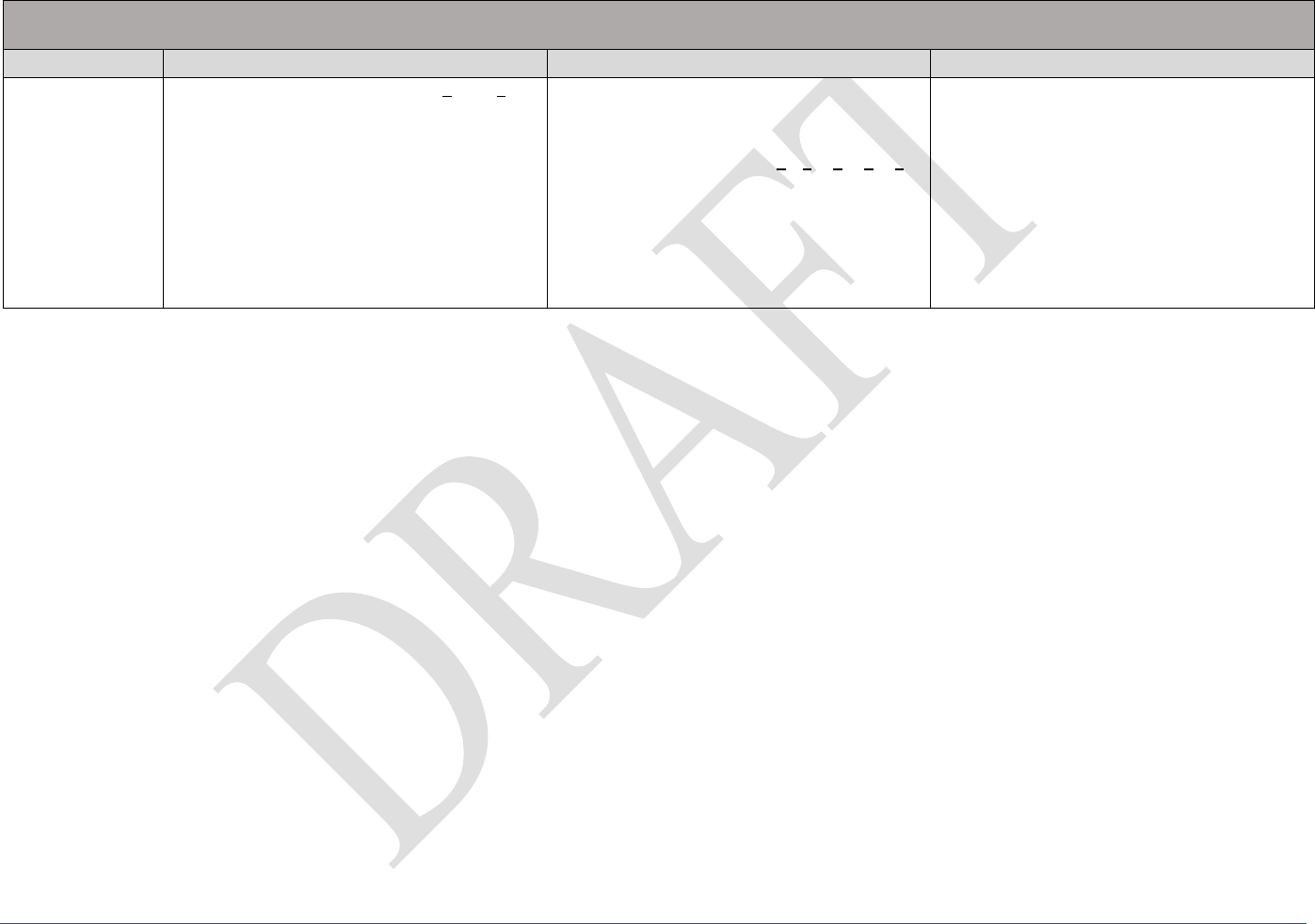
Grade 3 Mathematics Reporting Category Statements
Disclaimer: This document is informational and is not for instructional purposes. The knowledge and skills described do not encompass all that a student is expected to learn in this grade.
Reporting Category Statements – B.E.S.T. Mathematics Standards 11
Office of Assessment Florida Department of Education
Fractional Reasoning
See Benchmarks for Excellent Student Thinking 3.FR.1.1, 3.FR.1.2, 3.FR.1.3, 3.FR.2.1, 3.FR.2.2
Indicator
Below Expectations
At/Near Expectations
Above Expectations
• Draw equivalent parts (e.g.,
1
2
and
2
4
) of
food items such as a sandwich, cake, or
pie.
• Use rulers to explore the concept of
fractions on a number line (with
emphasis on halves and fourths).
numerators are the same and the
denominators are different.
• Add unit fractions that equal a fraction
greater than one (e.g.,
1
3
+
1
3
+
1
3
+
1
3
=
4
3
).
• Order fractions from smallest to
largest.
• Write an equivalent fraction to a
provided fraction. Discuss why the
fractions are equivalent.
• Explain how a fraction greater than one
may represent one or more wholes and
an additional amount.
• Generate equivalent fractions.
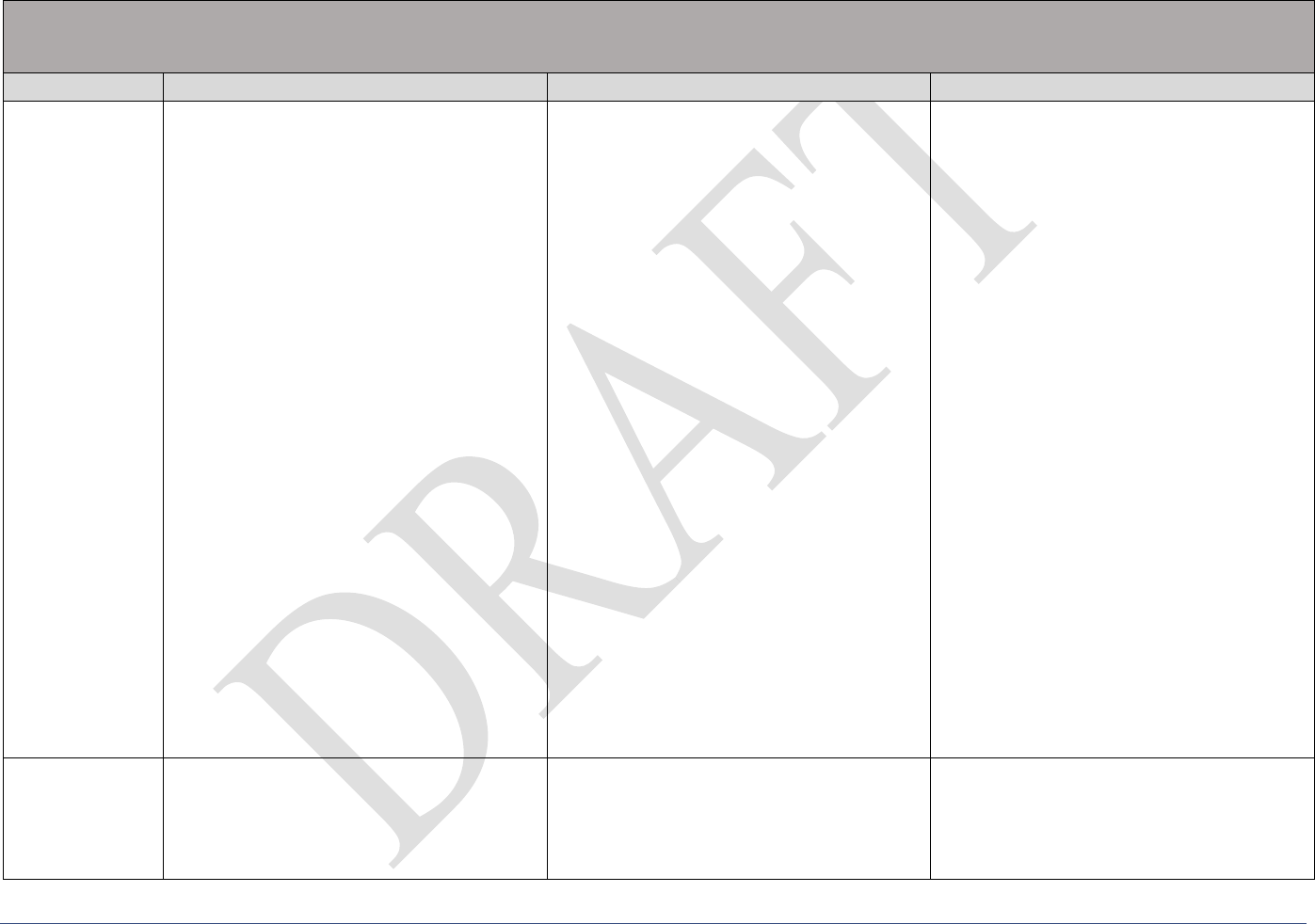
Grade 3 Mathematics Reporting Category Statements
Disclaimer: This document is informational and is not for instructional purposes. The knowledge and skills described do not encompass all that a student is expected to learn in this grade.
Reporting Category Statements – B.E.S.T. Mathematics Standards 12
Office of Assessment Florida Department of Education
Geometric Reasoning, Measurement, and Data Analysis and Probability
See Benchmarks for Excellent Student Thinking 3.GR.1.1, 3.GR.1.2, 3.GR.1.3, 3.GR.2.3, 3.GR.2.4, 3.M.1.1, 3.M.1.2, 3.M.2.1, 3.M.2.2, 3.DP.1.2
(including 3.DP.1.1)
Indicator
Below Expectations
At/Near Expectations
Above Expectations
What These
Results Mean
For example, your learner may be able to:
• Select and use appropriate tools to
measure length, liquid volume, and
temperature to the nearest whole unit.
• Identify points, lines, line segments,
rays, intersecting lines, perpendicular
lines, and parallel lines.
• Identify parallelograms, rhombi,
rectangles, squares, and trapezoids as
examples of quadrilaterals.
• Draw a single line of symmetry in a
two-dimensional figure.
• Solve mathematical or real-world
problems involving the perimeter or
area of rectangles.
• Solve real-world problems involving
addition and subtraction with whole-
number lengths, volumes, weights, and
temperatures.
• Use a digital clock to tell and write the
time to the nearest minute and
designate it as a.m. or p.m.
• Solve problems involving elapsed time
within the same hour.
• Match a data set to a visual
representation (bar graph or
pictograph).
For example, your learner may be able to:
• Select and use appropriate tools to
measure length, liquid volume, and
temperature to the nearest half or
quarter unit.
• Identify and draw points, lines, line
segments, rays, intersecting lines,
perpendicular lines, and parallel lines.
• Identify and draw parallelograms,
rhombi, rectangles, squares, and
trapezoids as examples of
quadrilaterals.
• Draw two or more lines of symmetry in
two-dimensional shapes.
• Solve mathematical or real-world
problems involving the perimeter and
area of rectangles, including figures
composed of two or more rectangles.
• Tell and write time to the nearest
minute using an analog clock.
• Solve problems involving elapsed time.
• Represent and interpret data using
tables, pictographs, bar graphs, or line
plots.
For example, your learner may be able to:
• Identify errors in measurement and
elapsed time problems.
• Classify triangles and quadrilaterals
(parallelograms, rhombi, rectangles,
squares, and trapezoids) according to
their attributes (such as parallel or
perpendicular lines, right angles,
number and lengths of sides).
• Describe, identify, and draw all lines of
symmetry in two-dimensional shapes
and explain why some shapes may not
have any lines of symmetry.
• Collect, represent, interpret, and
compare data using tables, pictographs,
bar graphs, circle graphs, or line plots.
Next Steps
For example, have your learner:
• Select the appropriate tool and measure
the length (to the nearest half and
quarter inch) and liquid volume (to the
For example, have your learner:
• Identify errors in length, liquid volume,
and temperature measurements when
provided with an incorrect
measurement.
For example, have your learner:
• Identify errors and make corrections in
measurement and elapsed time
problems.
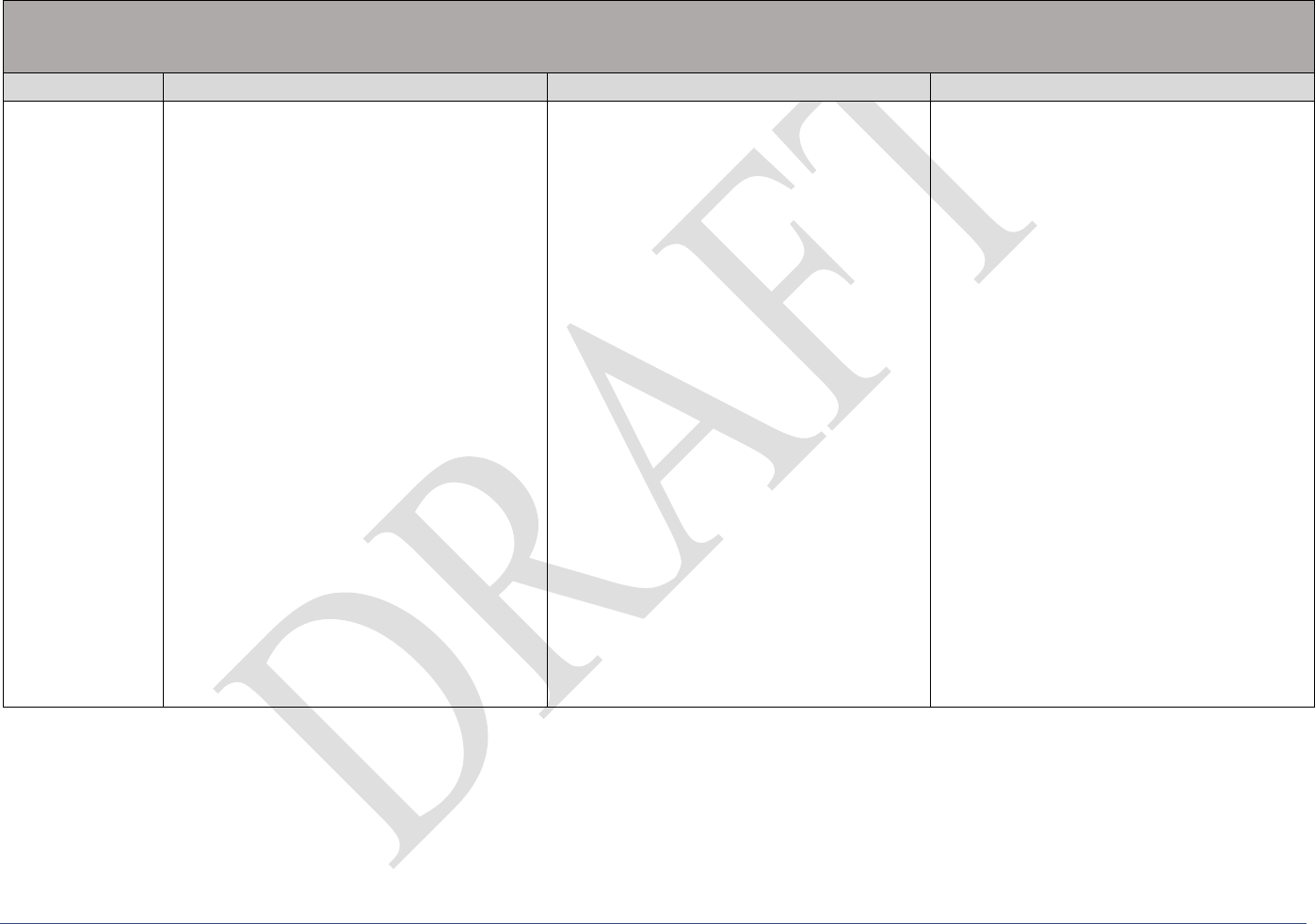
Grade 3 Mathematics Reporting Category Statements
Disclaimer: This document is informational and is not for instructional purposes. The knowledge and skills described do not encompass all that a student is expected to learn in this grade.
Reporting Category Statements – B.E.S.T. Mathematics Standards 13
Office of Assessment Florida Department of Education
Geometric Reasoning, Measurement, and Data Analysis and Probability
See Benchmarks for Excellent Student Thinking 3.GR.1.1, 3.GR.1.2, 3.GR.1.3, 3.GR.2.3, 3.GR.2.4, 3.M.1.1, 3.M.1.2, 3.M.2.1, 3.M.2.2, 3.DP.1.2
(including 3.DP.1.1)
Indicator
Below Expectations
At/Near Expectations
Above Expectations
nearest half and quarter cup) of items
found in real-life settings.
• Identify objects in real-life settings that
have lines; line segments; or
perpendicular, parallel, or intersecting
lines.
• Use everyday objects such as
toothpicks, marshmallows, twist ties,
or paper to construct basic shapes.
• Identify shapes from real-life settings
that include parallelograms, rhombi,
rectangles, squares, and trapezoids.
• Locate objects with different lines of
symmetry (e.g., shapes, letters,
numbers), including objects with no
lines of symmetry.
• Practice using a ruler or measuring tape
to find the perimeter and area of small
rectangular figures such as cell phones
and books.
• Tell time on an analog and a digital
clock.
• Discuss and interpret data displays
found in various media.
• Describe and draw points, lines, line
segments, rays, intersecting lines, and
perpendicular and parallel lines and
identify each in two-dimensional
figures.
• Identify shapes seen in the real world
such as shapes of traffic signs or
objects in the home such as food
containers, patterns in quilts, or shapes
in furniture.
• Fold a paper in half and draw a shape
along the fold; cut out the shape and
unfold the paper to create a
symmetrical shape.
• Use a formula to calculate the area and
perimeter of rectangles.
• Find elapsed time between events
during the day.
• Complete a graph (bar graph,
pictograph, or circle graph) that has
missing data.
• Classify quadrilaterals and triangles in
multiple ways.
• Describe how points, lines, line
segments, rays, intersecting lines, and
perpendicular and parallel lines are
attributes that can be used to define
shapes.
• Complete a partial figure given a line
of symmetry.
• Create a survey for friends and family,
collect data, and graph (bar graph,
pictograph, circle graph, or line plot)
the results. Ask your learner to discuss
what they learned from the survey
results.

Grade 4 Mathematics Reporting Category Statements
Disclaimer: This document is informational and is not for instructional purposes. The knowledge and skills described do not encompass all that a student is expected to learn in this grade.
Reporting Category Statements – B.E.S.T. Mathematics Standards 14
Office of Assessment Florida Department of Education
Grade 4 Mathematics Reporting Category Statements
Number Sense and Operations with Whole Numbers
See Benchmarks for Excellent Student Thinking 4.NSO.1.1, 4.NSO.1.2, 4.NSO.1.3, 4.NSO.1.4, 4.NSO.1.5, 4.NSO.2.3 (including 4.NSO.2.2 and
4.NSO.2.1), 4.NSO.2.4 (including 4.NSO.2.1), 4.NSO.2.5, 4.AR.1.1, 4.AR.2.1, 4.AR.2.2, 4.AR.3.1, 4.AR.3.2
Indicator
Below Expectations
At/Near Expectations
Above Expectations
What These
Results Mean
For example, your learner may be able to:
• Round numbers from 0 to 10,000 to the
nearest 1,000.
• Read, write, and plot numbers up to
100,000 on a number line.
• Plot and compare decimals up to the
tenths using comparison symbols (<, >,
=).
• Solve problems involving
multiplication and division with factors
up to 12.
• Multiply multidigit numbers by 10 or
100.
• Solve mathematical and real-world
problems involving division of
numbers up to three digits by one digit
without a remainder.
• Determine whether an equation of no
more than two operands on either side
(e.g., 56 ÷ 8 = 3 x 7) is true or false.
• Determine whether a number from 0 to
20 is prime, composite, or neither.
• Identify and extend a numerical pattern
from a given rule.
For example, your learner may be able to:
• Express that a digit in one place
represents 10 times as much as it
represents in the place to the right.
• Read and write numbers up to
1,000,000 using standard, expanded,
and word forms.
• Round whole numbers up to 10,000 to
the nearest 10, 100, or 1000.
• Plot and compare decimals up to the
hundredths using comparison symbols
(<, >, =).
• Plot and compare numbers up to
1,000,000.
• Solve mathematical and real-world
problems involving multiplication of
two whole numbers up to three-digit
numbers by two-digit numbers.
• Solve mathematical and real-world
problems involving division of
numbers up to three digits by one digit
with or without a remainder.
• Determine whether an equation using
any of the four operations using whole
numbers is true or false.
• Determine whether a whole number
from 0 to 144 is prime, composite, or
neither.
For example, your learner may be able to:
• Explain how the value of a digit
changes if the digit moves one place to
the left or right.
• Read and write numbers to 1,000,000
using standard, expanded, and word
forms interchangeably.
• Plot, compare, and order two or more
decimals up to the hundredths using
comparison symbols (<, >, =).
• Plot, compare, and order two or more
numbers up to 1,000,000.
• Solve mathematical and real-world
problems involving multiplication and
division, including problems in which
the remainders must be interpreted
within the context.
• Determine and explain whether an
equation using any of the four
operations using whole numbers is true
or false.
• Determine factor pairs and explain why
a number is prime, composite, or
neither.
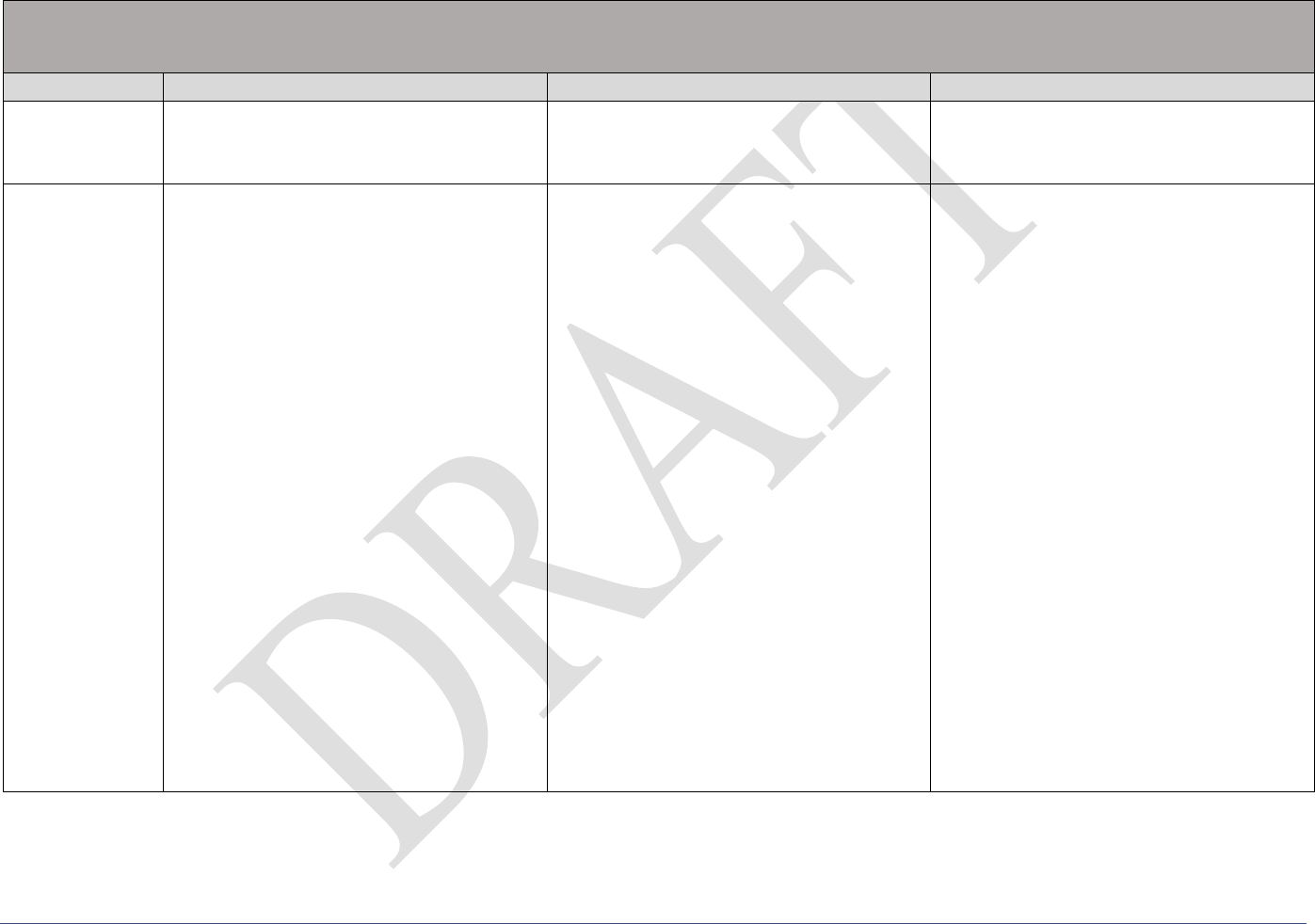
Grade 4 Mathematics Reporting Category Statements
Disclaimer: This document is informational and is not for instructional purposes. The knowledge and skills described do not encompass all that a student is expected to learn in this grade.
Reporting Category Statements – B.E.S.T. Mathematics Standards 15
Office of Assessment Florida Department of Education
Number Sense and Operations with Whole Numbers
See Benchmarks for Excellent Student Thinking 4.NSO.1.1, 4.NSO.1.2, 4.NSO.1.3, 4.NSO.1.4, 4.NSO.1.5, 4.NSO.2.3 (including 4.NSO.2.2 and
4.NSO.2.1), 4.NSO.2.4 (including 4.NSO.2.1), 4.NSO.2.5, 4.AR.1.1, 4.AR.2.1, 4.AR.2.2, 4.AR.3.1, 4.AR.3.2
Indicator
Below Expectations
At/Near Expectations
Above Expectations
• Generate, describe, and extend a
numerical pattern that follows a given
rule.
Next Steps
For example, have your learner:
• Write numbers up to 100,000 in
expanded and word form.
• Use one-dollar bills, dimes, and
pennies to make various money
amounts; discuss how many ones,
tenths, and hundredths are in each
group and write the amounts.
• Plot numbers up to 100,000 on a
number line.
• Build automaticity with multiplication
and related division facts up to 12 x 12.
Use a deck of cards to flip 2 cards over
to be multiplied.
• Multiply two-digit numbers by two-
digit numbers.
• Estimate products to check for
reasonableness.
• Identify numbers up to 144 as prime,
composite, or neither using arrays or
models.
For example, have your learner:
• Practice reading and writing numbers
in word, expanded, and standard form
up to the millions.
• Practice rounding whole numbers from
0 to 10,000 to the nearest ten, hundred,
and thousand.
• Use one-dollar bills, dimes, and
pennies to make various money
amounts, compare them, and order the
amounts from least to greatest.
• Practice multiplication and division
facts up to 12 x 12 with automaticity.
Use a deck of cards to flip 2 cards over
to be multiplied.
• Make a list of the factor pairs of whole
numbers up to 144.
• Divide a whole number up to four
digits by a one-digit number and
represent remainders as a fractional
part of the divisor.
• Identify and correct errors in numerical
patterns.
• Estimate products and quotients to
check for reasonableness.
For example, have your learner:
• Divide a dollar into dimes or dimes
into pennies and discuss how many
ones, tenths, and hundredths are
present, showing equivalent amounts.
• Explain how the value of a digit
changes when a digit is moved two
places to the right or left when given a
number.
• Identify and correct errors in real-
world and mathematical problems
using multiplication (3 digits by 2
digits) and division (3 digits by 1
digit).
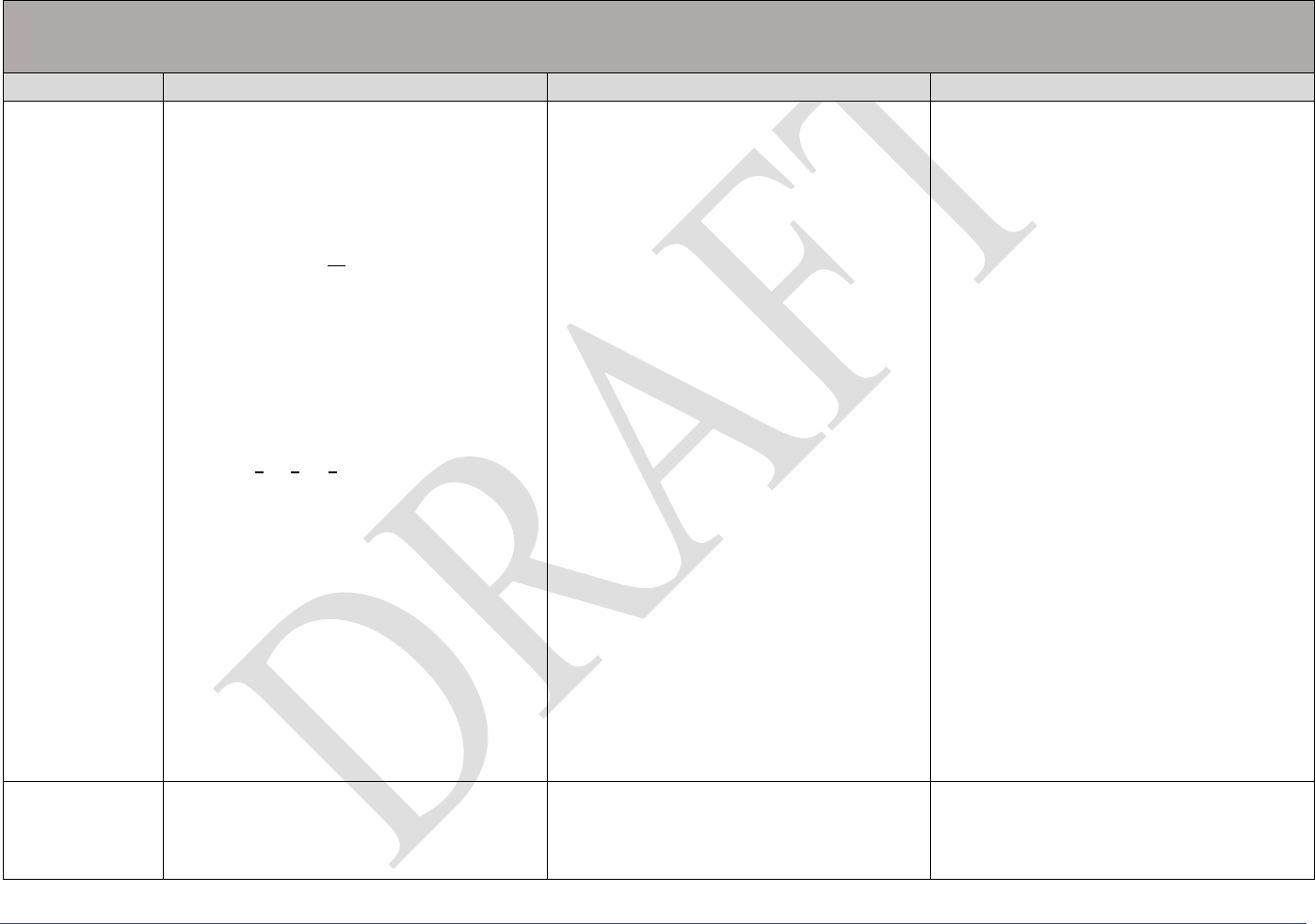
Grade 4 Mathematics Reporting Category Statements
Disclaimer: This document is informational and is not for instructional purposes. The knowledge and skills described do not encompass all that a student is expected to learn in this grade.
Reporting Category Statements – B.E.S.T. Mathematics Standards 16
Office of Assessment Florida Department of Education
Number Sense and Operations with Fractions and Decimals
See Benchmarks for Excellent Student Thinking 4.NSO.2.6, 4.FR.1.1, 4.FR.1.2, 4.FR.1.3, 4.FR.1.4, 4.FR.2.1, 4.FR.2.2, 4.FR.2.3, 4.AR.1.2, 4.AR.1.3
(including 4.FR.2.4), 4.M.2.2 (including 4.NSO.2.7)
Indicator
Below Expectations
At/Near Expectations
Above Expectations
What These
Results Mean
For example, your learner may be able to:
• Model a fraction less than one with the
denominator 10 as an equivalent
fraction with the denominator 100.
• Represent fractions less than one with
denominators of 10 or 100 in decimal
notation (e.g.,
2
10
= 0.2).
• Identify equivalent fractions, including
fractions greater than one, using
models.
• Plot fractions less than one on a
number line.
• Decompose (break apart) fractions less
than one into a sum of two fractions
(e.g.,
2
3
=
1
3
+
1
3
).
• Solve problems involving addition and
subtraction of fractions less than one
with like denominators with or without
using models.
• Solve problems involving
multiplication of a fraction and a whole
number with or without using models.
• Solve one-step problems involving
adding and subtracting money with
decimal notation.
For example, your learner may be able to:
• Identify the number that is one-tenth
more and one-tenth less than a given
number (e.g., one-tenth more than 2.31
is 2.41).
• Model and write decimal fractions that
are equivalent and use that
understanding to generate decimals and
decimal notation.
• Identify equivalent fractions including
fractions greater than one.
• Compare fractions, mixed numbers,
and fractions greater than one using
symbols (<, >, =) and reason about
their size.
• Decompose (break apart) fractions
greater than one into a sum of
fractions.
• Solve problems involving addition and
subtraction of fractions with like
denominators and multiplication of a
fraction by a whole number.
• Add a fraction with a denominator of
10 to a fraction with a denominator of
100.
• Multiply a fraction by a whole number.
• Add and subtract money with decimal
notation.
For example, your learner may be able to:
• Identify the number that is one-tenth
more, one-tenth less, one-hundredth
more, and one-hundredth less than a
given number (e.g., one-hundredth less
than 5.45 is 5.44).
• Model and express a fraction, including
mixed numbers and fractions greater
than one, with the denominator 10 as
an equivalent fraction with the
denominator of 100.
• Represent fractions as decimals and
decimals as fractions, including
fractions greater than one and mixed
numbers.
• Generate equivalent fractions.
• Plot on a number line, order, and
compare fractions with different
numerators and denominators.
• Multiply a fraction by a whole number.
• Decompose (break apart) mixed
numbers into a sum of fractions in
multiple ways.
• Solve one- and two-step addition and
subtraction problems involving money.
Next Steps
For example, have your learner:
• Generate equivalent fractions using
household items as parts of a set, food
For example, have your learner:
• Plot on a number line, order, and
compare fractions with different
denominators and numerators.
For example, have your learner:
• Identify and correct errors in
equivalent fractions.
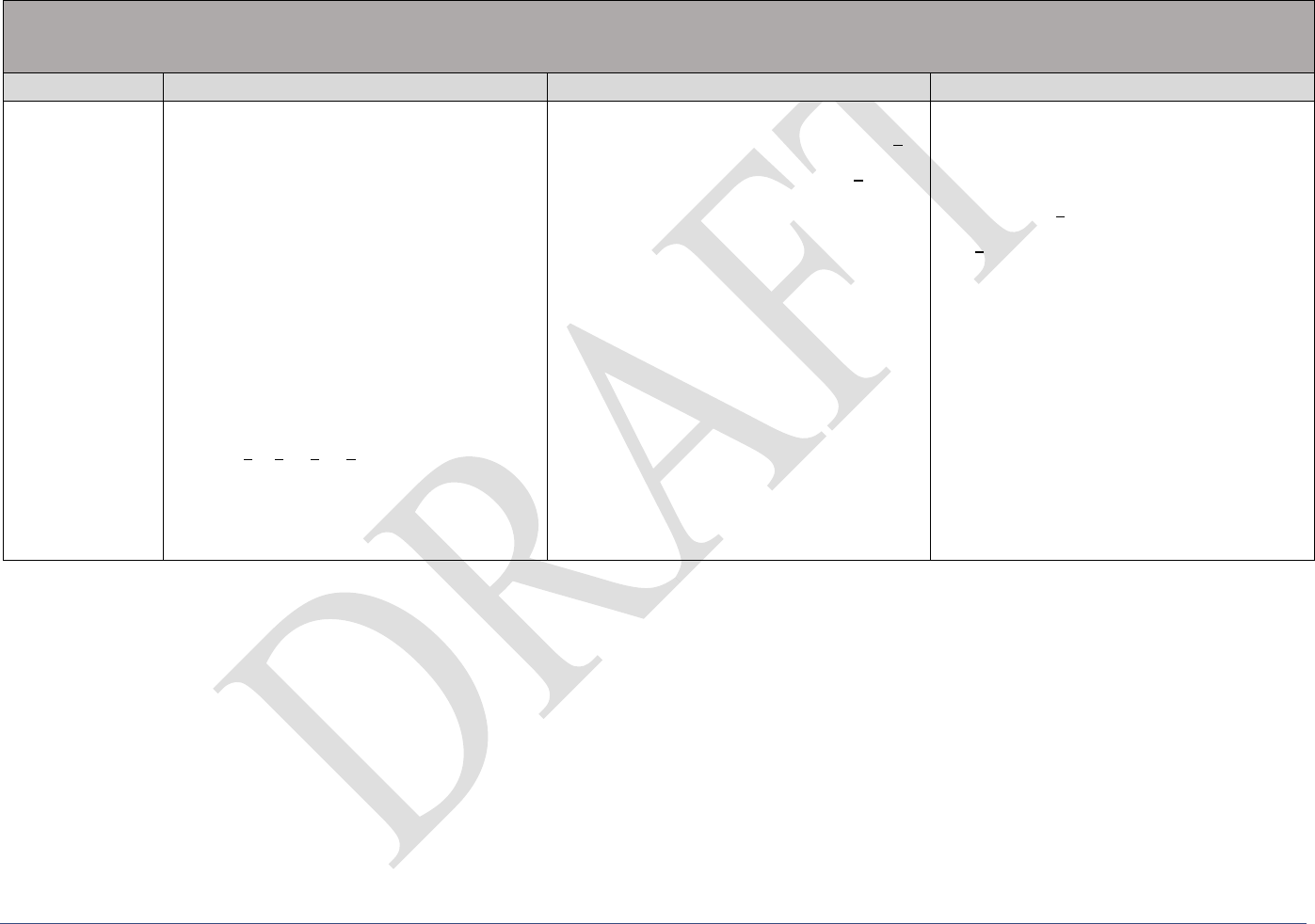
Grade 4 Mathematics Reporting Category Statements
Disclaimer: This document is informational and is not for instructional purposes. The knowledge and skills described do not encompass all that a student is expected to learn in this grade.
Reporting Category Statements – B.E.S.T. Mathematics Standards 17
Office of Assessment Florida Department of Education
Number Sense and Operations with Fractions and Decimals
See Benchmarks for Excellent Student Thinking 4.NSO.2.6, 4.FR.1.1, 4.FR.1.2, 4.FR.1.3, 4.FR.1.4, 4.FR.2.1, 4.FR.2.2, 4.FR.2.3, 4.AR.1.2, 4.AR.1.3
(including 4.FR.2.4), 4.M.2.2 (including 4.NSO.2.7)
Indicator
Below Expectations
At/Near Expectations
Above Expectations
items, baking measurements, and coin
denominations.
• Use dimes and pennies to model
equivalence between amounts
expressed in tenths and hundredths.
• Add money amounts from
advertisements.
• Solve real-world problems involving
addition and subtraction of fractions
with like denominators (e.g.,
combining cake mixes and adding the
ingredients with fractions).
• Relate multiplication of whole numbers
and fractions to repeated addition (e.g.,
3 x
1
8
+
1
8
+
1
8
=
3
8
).
• Compare fractional amounts while
cooking (e.g., If one recipe calls for
2
3
cup of oil and another calls for
1
2
cup,
which recipe calls for more oil?).
• Demonstrate and explain the
equivalency of two fractions expressed
with different denominators.
• Add and subtract fractions and mixed
numbers with like denominators.
• Solve real-world problems involving
multiplication of a fraction (e.g.,
determine the amount of ingredients
needed to bake 5 times the number of
cookies based on a recipe).
• Review an advertisement and subtract
items from a starting amount of $20.
Practice writing the amounts as
fractions and subtracting the fractions.
• Create and solve real-world problems
that involve adding and subtracting
fractions with like denominators (e.g.,
A group of friends ordered a pizza.
John ate
1
5
of the pizza, and Maya ate
2
5
of the pizza. How much of the pizza
did they eat together?).
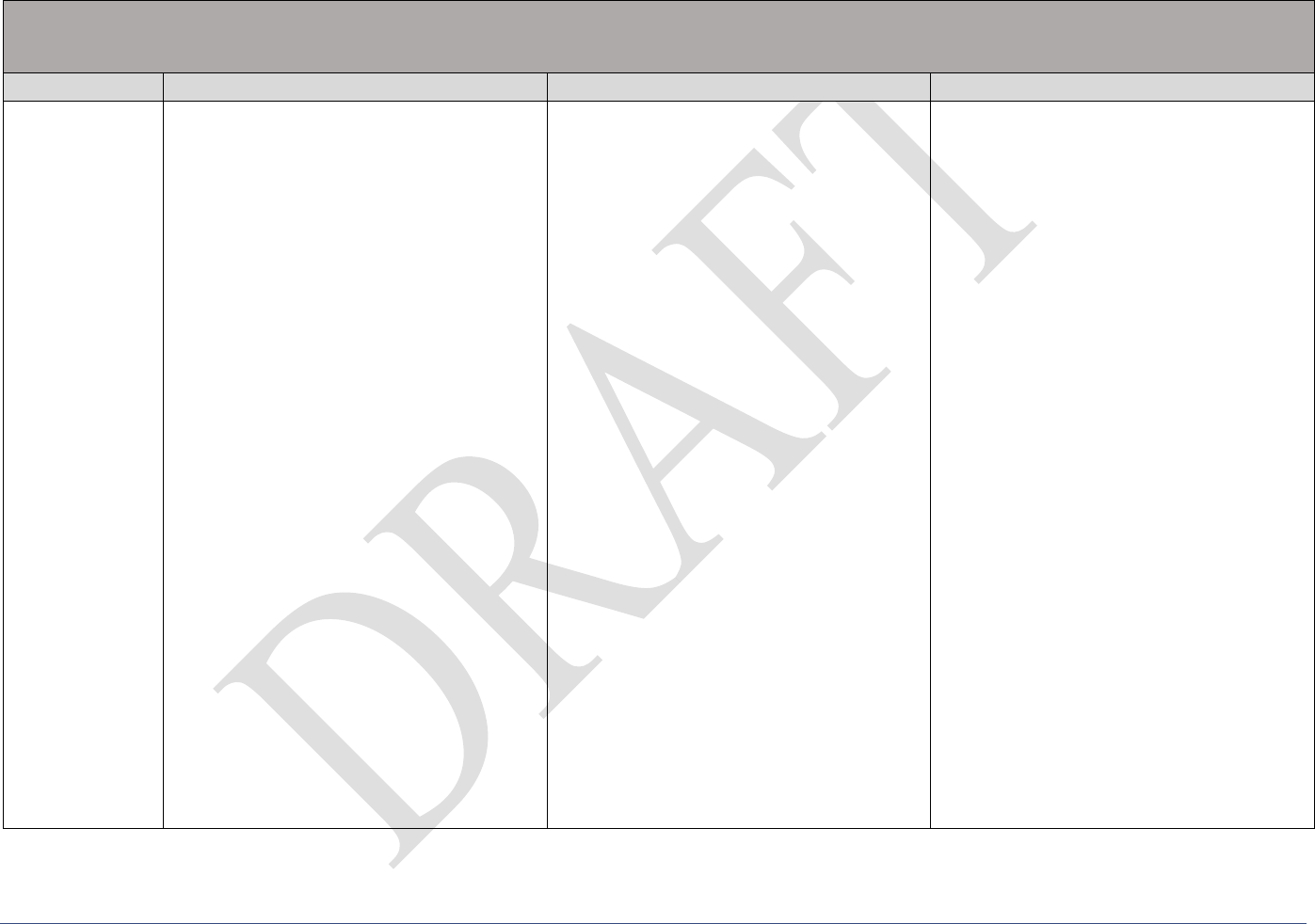
Grade 4 Mathematics Reporting Category Statements
Disclaimer: This document is informational and is not for instructional purposes. The knowledge and skills described do not encompass all that a student is expected to learn in this grade.
Reporting Category Statements – B.E.S.T. Mathematics Standards 18
Office of Assessment Florida Department of Education
Geometric Reasoning, Measurement, and Data Analysis and Probability
See Benchmarks for Excellent Student Thinking 4.GR.1.1, 4.GR.1.2, 4.GR.1.3, 4.GR.2.1, 4.GR.2.2, 4.M.1.1, 4.M.1.2, 4.M.2.1, 4.DP.1.1, 4.DP.1.2,
4.DP.1.3
Indicator
Below Expectations
At/Near Expectations
Above Expectations
What These
Results Mean
For example, your learner may be able to:
• Convert within a single system of
measurement from larger units to
smaller units.
• Solve one-step real-world problems
involving distance.
• Select the appropriate tool to use when
measuring different quantities (length,
volume, weight, mass, and
temperature).
• Estimate angles using benchmark
angles (45, 90, 180).
• Measure angles using a protractor
when one ray aligns to 0 degrees.
• Solve one-step problems involving an
unknown angle measure.
• Solve perimeter problems with an
unknown side.
• Solve perimeter and area problems
with the same perimeter and different
area or same area and different
perimeter using a visual model.
• Identify the mode to answer questions
about a numerical data set using tables,
stem-and-leaf plots, or line plots.
For example, your learner may be able to:
• Convert within a single system of
measurement from smaller units to
larger units.
• Solve two-step word problems
involving distance and time less than
60 minutes.
• Select and use the appropriate tool to
measure different quantities (length,
volume, weight, mass, and
temperature).
• Identify angles as acute, right, obtuse,
straight, or reflex and estimate using
benchmark angles (30, 45, 60, 90,
180).
• Solve two-step problems involving
angle measures.
• Solve perimeter and area problems,
including problems with unknown
sides, for rectangles with whole
number side lengths.
• Solve perimeter and area problems
with the same perimeter and different
area or same area and different
perimeter.
• Identify the mode, median, and range
to answer questions about a numerical
data set involving fractional values
using tables, stem-and-leaf plots, or
line plots.
For example, your learner may be able to:
• Solve two-step word problems
involving distance and time using any
combination of the four operations.
• Identify, classify, and justify angles as
acute, right, obtuse, straight, or reflex
using two-dimensional figures.
• Measure angles using a protractor
when neither ray aligns to 0 degrees.
• Solve mathematical and real-world
problems involving an unknown angle
and write an equation to represent the
unknown.
• Write an equation to solve perimeter
and area problems, including problems
with unknown sides.
• Interpret a numerical data set by
collecting, representing, and solving
problems involving whole numbers
and/or fractional values.
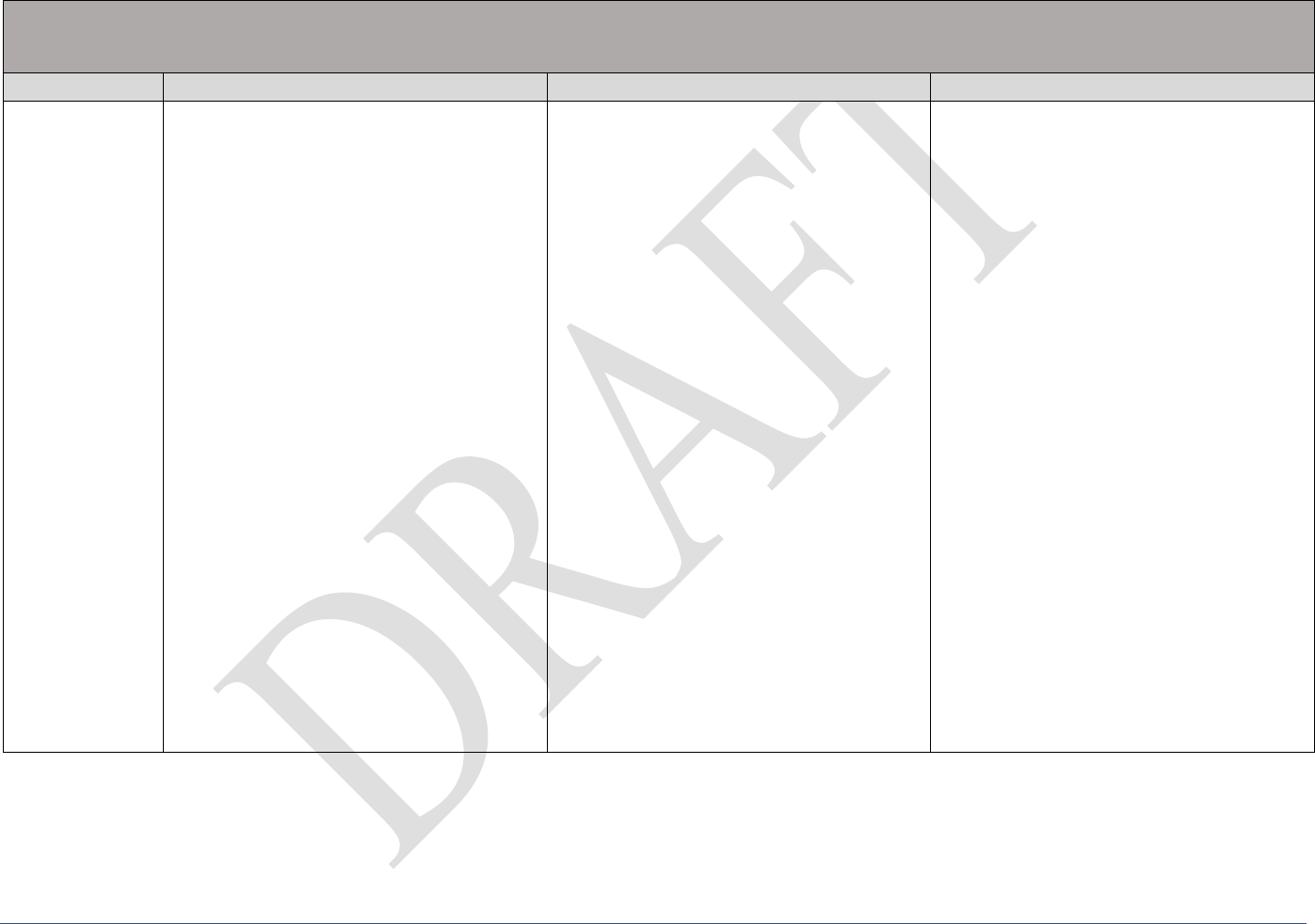
Grade 4 Mathematics Reporting Category Statements
Disclaimer: This document is informational and is not for instructional purposes. The knowledge and skills described do not encompass all that a student is expected to learn in this grade.
Reporting Category Statements – B.E.S.T. Mathematics Standards 19
Office of Assessment Florida Department of Education
Geometric Reasoning, Measurement, and Data Analysis and Probability
See Benchmarks for Excellent Student Thinking 4.GR.1.1, 4.GR.1.2, 4.GR.1.3, 4.GR.2.1, 4.GR.2.2, 4.M.1.1, 4.M.1.2, 4.M.2.1, 4.DP.1.1, 4.DP.1.2,
4.DP.1.3
Indicator
Below Expectations
At/Near Expectations
Above Expectations
Next Steps
For example, have your learner:
• Collect measurements using
appropriate tools and convert units
from smaller to larger units within a
single system of measurement.
• Identify and use appropriate tools to
measure items such as a measuring
tape, scale, ruler, measuring spoons, or
measuring cup.
• Identify types of angles found in real-
life settings and discuss approximately
how many degrees each angle is. For
example, the angle formed by a tree
and its shadow.
• Use a protractor to measure angles in
whole-number degrees.
• Calculate the area and perimeter of
objects in real-life settings.
• Read graphs, line plots, and stem-and-
leaf plots in the real world. Determine
the median, mode, and range of the
data set.
For example, have your learner:
• Convert within a single system of
measurement (kilometers, meters,
centimeters, millimeters; kilograms,
grams; liters, milliliters; and hours,
minutes, seconds).
• Measure objects with precision using a
measuring tape, scale, or ruler when
appropriate.
• Identify angles in a real-world or
mathematical context as acute, right,
obtuse, straight, or reflex and justify
the reasoning.
• Review data presented in print or
online and discuss the median, mode,
and range of the data and how it
contributes to their understanding of
the data set.
• Predict and calculate distance and time
measurements.
For example, have your learner:
• Create real-world problems to convert
within a single system of measurement
(yards, feet, inches; kilometers, meters,
centimeters, millimeters; pounds,
ounces; kilograms, grams; gallons,
quarts, pints, cups; liters, milliliters;
and hours, minutes, seconds).
• Classify triangles and quadrilaterals
into categories according to their
defining characteristics, such as
number of parallel sides, sides same
length, or the presence of a right angle.
• Identify the error in a real-world
problem for area and perimeter and
solve (e.g., Stevie has a rectangular
garden that is 8 feet long and 15 feet
wide. He stated that he needs 120 feet
of fencing to put around his garden. Is
Stevie correct? Explain).
• Review data presented in print or
online and discuss the median, mode,
and range of the data and compare the
meaning of each value as it relates to
the data set.
• Create real-world distance and time
problems.
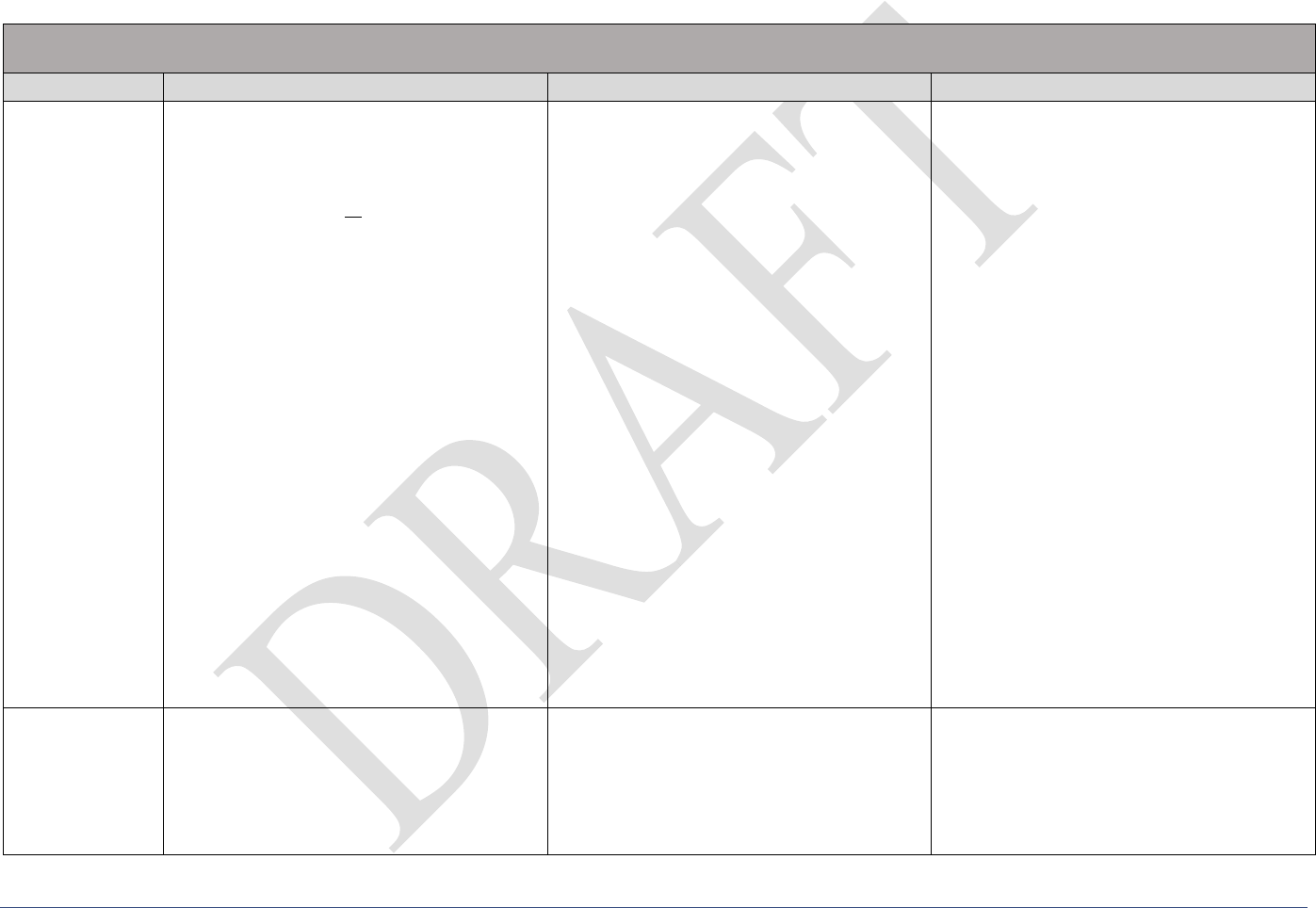
Grade 5 Mathematics Reporting Category Statements
Disclaimer: This document is informational and is not for instructional purposes. The knowledge and skills described do not encompass all that a student is expected to learn in this grade.
Reporting Category Statements – B.E.S.T. Mathematics Standards 20
Office of Assessment Florida Department of Education
Grade 5 Mathematics Reporting Category Statements
Number Sense and Operations with Whole Numbers
See Benchmarks for Excellent Student Thinking 5.NSO.1.1, 5.NSO.1.2, 5.NSO.1.3, 5.NSO.1.4, 5.NSO.1.5, 5.NSO.2.1, 5.NSO.2.2
Indicator
Below Expectations
At/Near Expectations
Above Expectations
What These
Results Mean
For example, your learner may be able to:
• Recognize how the value of a digit in a
multi-digit number changes if the digit
moves one place to the left (10 times as
much) or right (
1
10
as much).
• Read and write multi-digit numbers to
the tenths place in word form, standard
form, and expanded notation.
• Plot on a number line and compare
multi-digit numbers with decimals to
the hundredths using symbols (<, >, =).
• Round multi-digit numbers with
decimals to the tenths.
• Multiply multi-digit numbers by two
digits.
• Divide a multi-digit number by a one-
digit divisor.
• Compose and decompose numbers
with decimals to the tenths in multiple
ways.
For example, your learner may be able to:
• Express how the value of a digit in a
multi-digit number with decimals to
the hundredths changes as it moves one
or more places to the left or right.
• Read and write numbers with decimals
to the hundredths in word form,
standard form, and expanded notation.
• Plot on a number line, order, compare
multi-digit numbers with decimals to
the thousandths using symbols (<, >,
=).
• Round multi-digit numbers with
decimals up to the hundredths.
• Multiply up to five-digit by two-digit
whole numbers.
• Divide up to five-digit by one-digit
whole numbers and represent
remainders as fractions.
• Compose and decompose numbers
with decimals to the hundredths.
For example, your learner may be able to:
• Identify the error and express how a
digit in a multi-digit number with
decimals to the thousandths changes as
it moves one or more places to the left
or right.
• Read and write numbers with decimals
to the thousandths in word form,
standard form, and expanded notation
interchangeably.
• Plot on a number line, order and
compare multi-digit numbers with
decimals to the thousandths.
• Round multi-digit numbers with
decimals to the thousandths and
generate possible numbers given their
rounded value.
• Multiply multi-digit whole numbers
with procedural fluency.
• Divide five-digit by two-digit whole
numbers and represent remainders as
fractions with procedural fluency.
• Compose and decompose numbers
with decimals to the thousandths in
multiple ways.
Next Steps
For example, have your learner:
• Write the price of items from a paper
or online advertisement in multiple
ways (e.g., $276.23 as 27 tens + 6 ones
+ 23 hundredths) and read the number
out loud.
For example, have your learner:
• Plot on a number line, order, and
compare numbers that include decimals
up to the thousandths.
• Use a paper or online advertisement to
identify prices that would round to a
For example, have your learner:
• Identify and correct errors when given
a problem involving the comparison,
multiplication, or division of multi-
digit whole numbers.
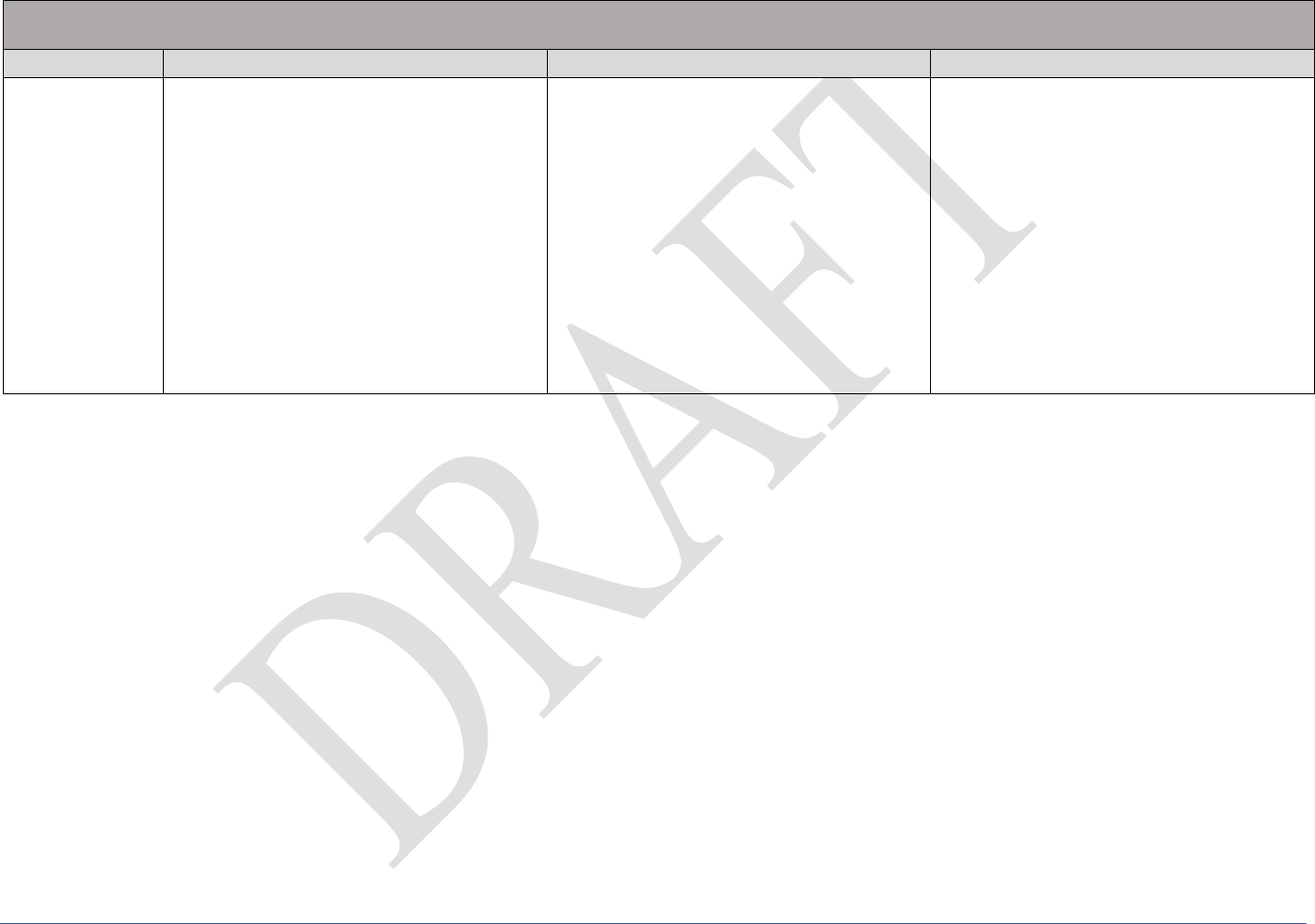
Grade 5 Mathematics Reporting Category Statements
Disclaimer: This document is informational and is not for instructional purposes. The knowledge and skills described do not encompass all that a student is expected to learn in this grade.
Reporting Category Statements – B.E.S.T. Mathematics Standards 21
Office of Assessment Florida Department of Education
Number Sense and Operations with Whole Numbers
See Benchmarks for Excellent Student Thinking 5.NSO.1.1, 5.NSO.1.2, 5.NSO.1.3, 5.NSO.1.4, 5.NSO.1.5, 5.NSO.2.1, 5.NSO.2.2
Indicator
Below Expectations
At/Near Expectations
Above Expectations
• Practice rounding multi-digit numbers
to various place values.
• Multiply multi-digit whole numbers
using a preferred method such as an
area model, partial products, etc.
• Divide multi-digit whole numbers and
represent remainders as fractions.
• Practice place value concepts
(decomposing, comparing, ordering,
effects of moving the decimal to the
left or right) with decimals to the
hundredths using money and other
real-world numbers.
given amount (e.g., an amount rounded
to tenths―a dime).
• Multiply (up to five digits by two
digits) and divide (up to five digits by
one digit) whole numbers with fluency.
• Solve real-world problems involving
multiplication of multi-digit whole
numbers and division of five-digit
whole numbers by two-digit whole
numbers and explain why the solution
is reasonable using estimation.
• Generate a new multi-digit number that
is 10, 100, or 1,000 times larger or
smaller than the starting number.
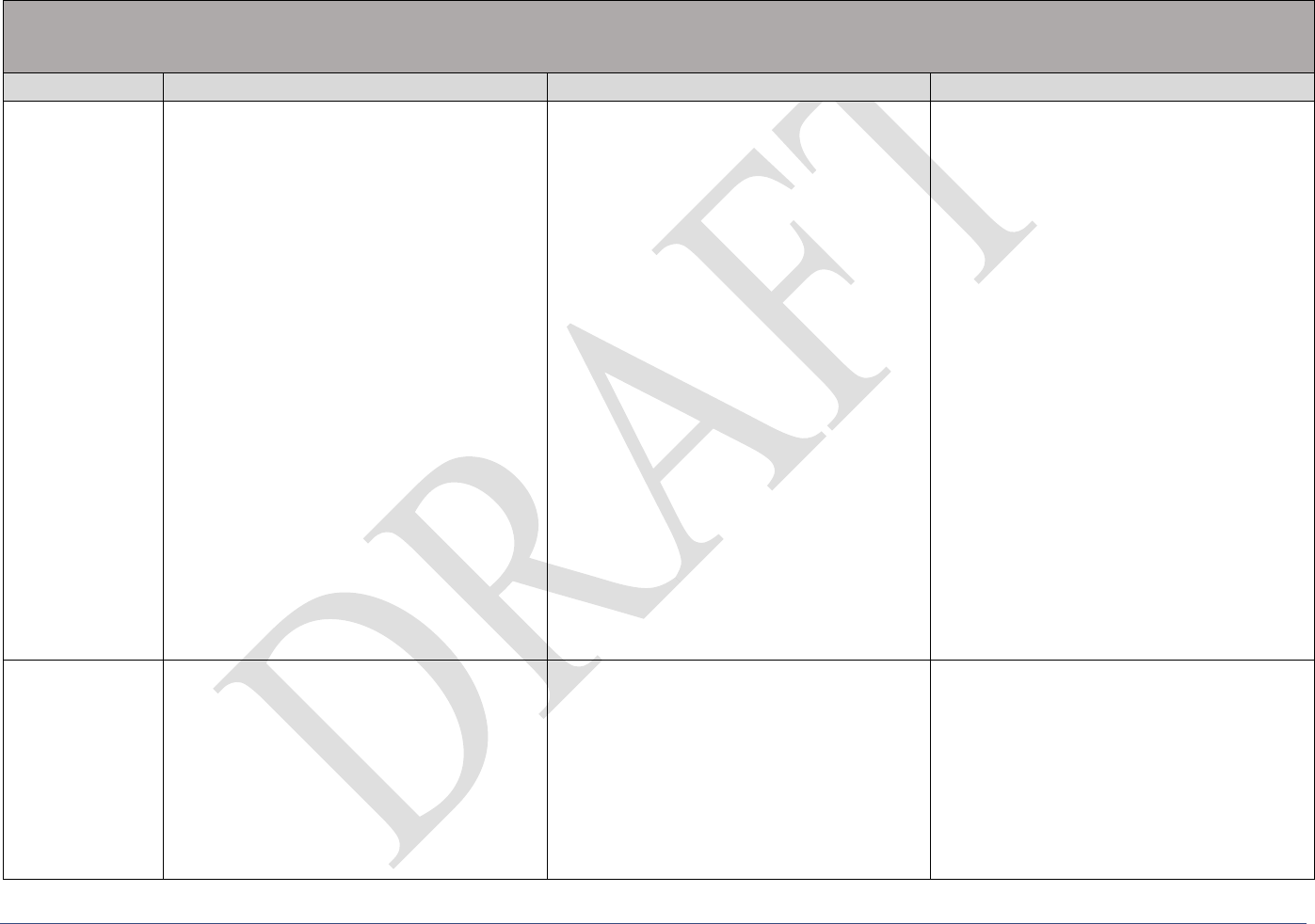
Grade 5 Mathematics Reporting Category Statements
Disclaimer: This document is informational and is not for instructional purposes. The knowledge and skills described do not encompass all that a student is expected to learn in this grade.
Reporting Category Statements – B.E.S.T. Mathematics Standards 22
Office of Assessment Florida Department of Education
Number Sense and Operations with Fractions and Decimals
See Benchmarks for Excellent Student Thinking 5.NSO.2.3, 5.NSO.2.5 (including 5.NSO.2.4), 5.FR.1.1, 5.FR.2.1, 5.FR.2.2, 5.FR.2.3, 5.FR.2.4, 5.AR.1.2,
5.AR.1.3, 5.M.2.1
Indicator
Below Expectations
At/Near Expectations
Above Expectations
What These
Results Mean
For example, your learner may be able to:
• Multiply and divide multi-digit whole
numbers by one-tenth.
• Given a mathematical or real-world
context, add and subtract fractions less
than one with unlike denominators
using models and various strategies.
• Multiply two fractions less than one
whole.
• Use drawings and models to solve
mathematical and real-world problems
involving division of a whole number
by a unit fraction.
• Solve one-step word problems using
division of a whole number by a unit
fraction.
• Represent division of two whole
numbers as a fraction.
For example, your learner may be able to:
• Multiply and divide multi-digit
numbers with decimals to the
hundredths by one-tenth given a
mathematical or real-world context.
• Add and subtract fractions, mixed
numbers, and fractions greater than one
with unlike denominators.
• Multiply a fraction, including fractions
greater than one, by a fraction less than
a whole.
• Solve real-world problems involving
the addition, subtraction, or
multiplication of fractions.
• Solve mathematical and real-world
problems involving the addition and
subtraction of decimals.
• Solve mathematical and real-world
problems involving the division of a
whole number by a unit fraction and a
unit fraction by a whole number.
• Solve two-step word problems using
multiplication and division.
For example, your learner may be able to:
• Multiply and divide multi-digit
numbers using estimation, rounding,
and place value.
• Identify errors in the division of two
whole numbers as a fraction given real-
world context.
• Multiply a fraction by a fraction,
including mixed numbers and fractions
greater than one.
• Solve multistep real-world problems
involving the addition, subtraction,
multiplication, or division of fractions,
including interpreting the remainder.
• Solve for an unknown numerator or
denominator given the sum or
difference.
Next Steps
For example, have your learner:
• Multiply and divide multi-digit
numbers with decimals in the tenths
and hundredths.
• Practice calculation with decimals
using estimation and rounding. For
example, round the prices of items
while shopping at the store and
estimate the total.
For example, have your learner:
• Add, subtract, multiply, and divide
multi-digit numbers with decimals to
the hundredths. For example, while
getting gas, determine how much it
would cost for 10 gallons of gas.
• Solve multi-step real-world problems
involving money using decimal
notation. For example, use a
For example, have your learner:
• Solve multi-step real-world problems
involving fractions and decimals.
• Identify the errors in problems
involving fractions or decimals and
make corrections.
• Create, solve, and explain fraction
word problems involving any of the
four operations.
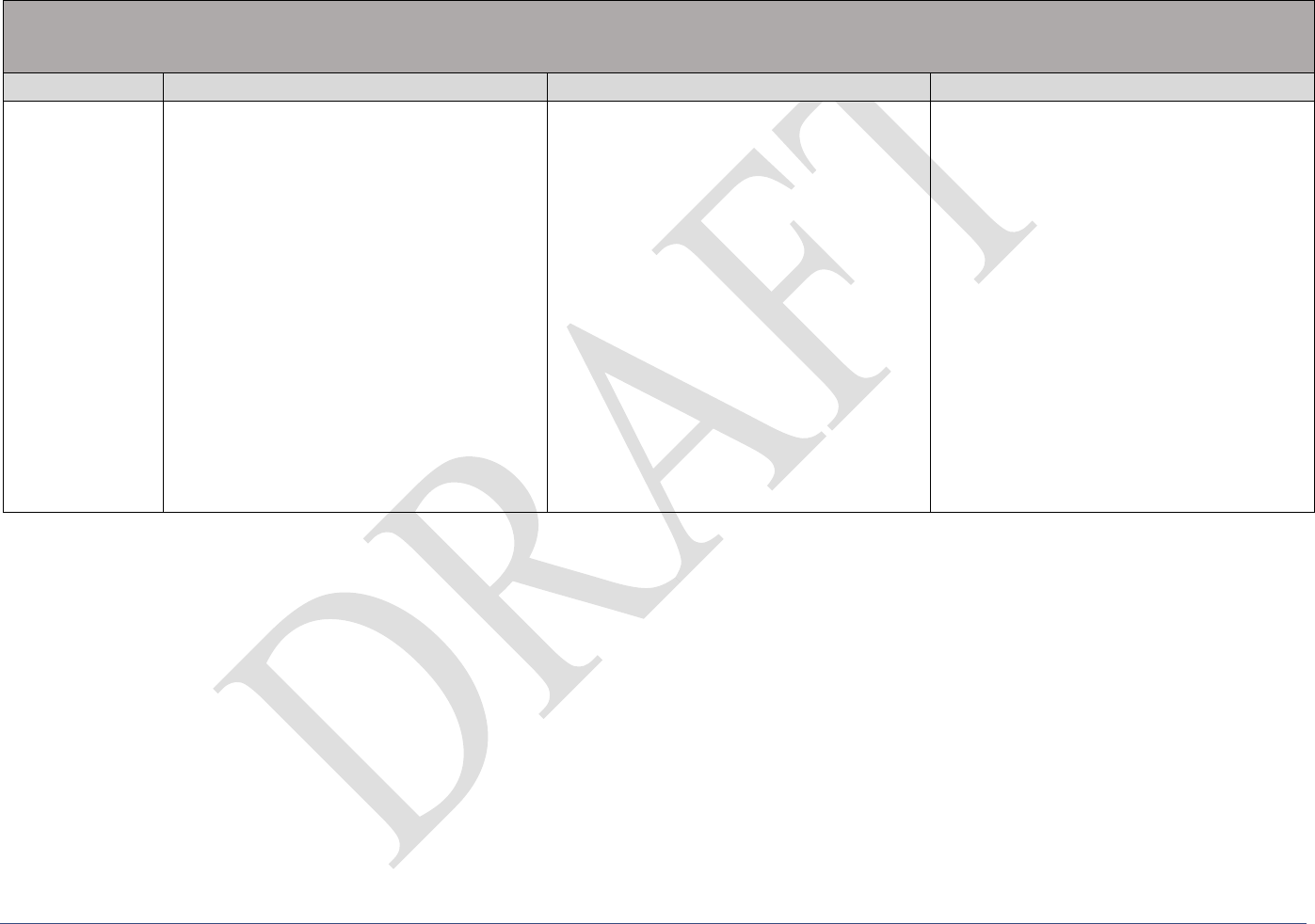
Grade 5 Mathematics Reporting Category Statements
Disclaimer: This document is informational and is not for instructional purposes. The knowledge and skills described do not encompass all that a student is expected to learn in this grade.
Reporting Category Statements – B.E.S.T. Mathematics Standards 23
Office of Assessment Florida Department of Education
Number Sense and Operations with Fractions and Decimals
See Benchmarks for Excellent Student Thinking 5.NSO.2.3, 5.NSO.2.5 (including 5.NSO.2.4), 5.FR.1.1, 5.FR.2.1, 5.FR.2.2, 5.FR.2.3, 5.FR.2.4, 5.AR.1.2,
5.AR.1.3, 5.M.2.1
Indicator
Below Expectations
At/Near Expectations
Above Expectations
• Add and subtract fractions greater than
one with unlike denominators.
• Use a recipe to add two dry ingredients
with fractional amounts, including
mixed numbers.
• Discuss how when multiplying a whole
number by a fraction less than one
results in a smaller number and how
multiplication by a fraction greater
than one results in a larger number.
• Solve two-step problems involving
money using decimal notation with at
least one step including multiplication
or division (e.g., Martin has $33.00.
He makes $8.50 per hour babysitting.
How many hours does he need to
babysit to have a total of $135.00?).
checkbook register to keep a record of
items purchased and money earned
with the balance after each transaction.
• Use everyday objects to explore
fractions such as describing how much
each person will receive if you have
four candy bars to share among three
people.
• Identify errors in fraction problems
involving any of the four operations.
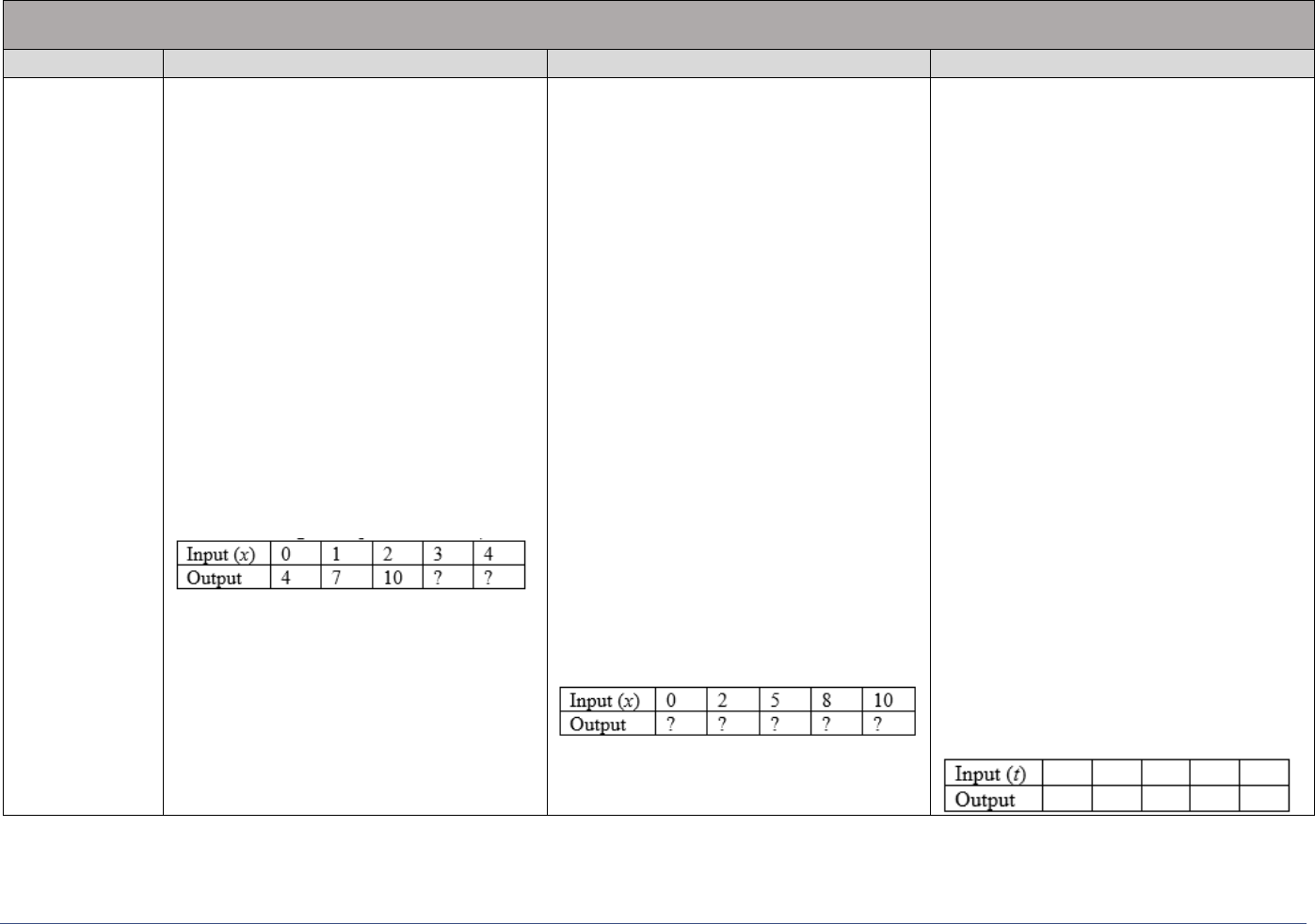
Grade 5 Mathematics Reporting Category Statements
Disclaimer: This document is informational and is not for instructional purposes. The knowledge and skills described do not encompass all that a student is expected to learn in this grade.
Reporting Category Statements – B.E.S.T. Mathematics Standards 24
Office of Assessment Florida Department of Education
Algebraic Reasoning
See Benchmarks for Excellent Student Thinking 5.AR.1.1, 5.AR.2.1, 5.AR.2.2, 5.AR.2.3, 5.AR.2.4, 5.AR.3.1, 5.AR.3.2
Indicator
Below Expectations
At/Near Expectations
Above Expectations
What These
Results Mean
For example, your learner may be able to:
• Solve two-step real-world problems
involving addition/subtraction or
multiplication/division without
remainders.
• Translate one-step mathematical or
real-world descriptions into numerical
expressions.
• Use order of operations to evaluate
two-step expressions.
• Determine whether an equation
involving any of the four operations
with whole numbers is true or false.
• Determine an unknown whole number
with an unknown result.
• Use a two-column table to record
outputs when given all inputs and some
of the outputs (e.g., complete the table
below using the expression 4 + 3x).
For example, your learner may be able to:
• Solve two-step real-world problems
involving any combination of the four
operations, including interpreting the
remainder.
• Translate two-step real-world or
mathematical descriptions into
numerical expressions.
• Use order of operations to evaluate
multi-step expressions, including
parentheses.
• Determine whether an equation with
fractions or decimals using any of the
four operations is true or false.
• Solve a one-step equation with an
unknown in any position using any of
the four operations.
• Identify a rule with one procedural step
that describes a given numerical
pattern.
• Given a rule for a numerical pattern,
use a two-column table to record the
inputs and outputs (e.g., complete the
table below using the expression 6x +
3).
For example, your learner may be able to:
• Identify the error and solve multi-step
real-world problems involving any
combination of the four operations,
including interpreting the remainder.
• Translate multi-step mathematical or
real-world descriptions into numerical
expressions and numerical expressions
into mathematical descriptions.
• Identify errors and justify corrections
to multi-step expressions using order of
operations.
• Determine and explain whether an
equation using any of the four
operations is true or false.
• Determine an equation with an
unknown in any position using any of
the four operations when given a
mathematical or real-world context.
• Write an expression that can be a rule
for a given pattern (e.g., 2, 5, 8, 11, . . .
when n is equal to 1, 2, 3, 4 . . .
(Answer: 3n – 1)].
• Use a two-column table to record the
inputs and outputs when given a rule
for a numerical pattern (e.g., complete
the table below using the expression 4t
– 3 when the value of t is: 0, 2, 4, 6, 8).
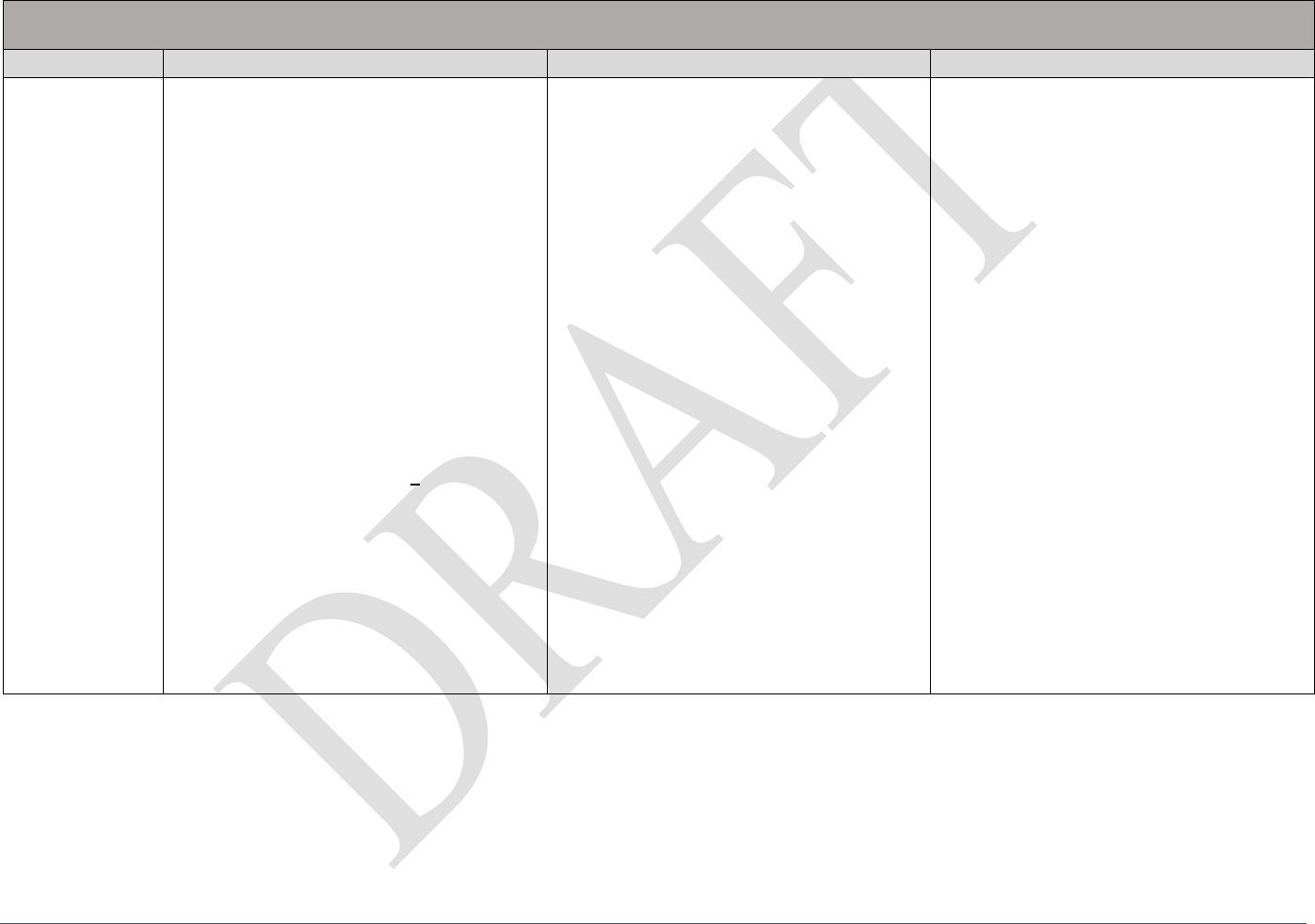
Grade 5 Mathematics Reporting Category Statements
Disclaimer: This document is informational and is not for instructional purposes. The knowledge and skills described do not encompass all that a student is expected to learn in this grade.
Reporting Category Statements – B.E.S.T. Mathematics Standards 25
Office of Assessment Florida Department of Education
Algebraic Reasoning
See Benchmarks for Excellent Student Thinking 5.AR.1.1, 5.AR.2.1, 5.AR.2.2, 5.AR.2.3, 5.AR.2.4, 5.AR.3.1, 5.AR.3.2
Indicator
Below Expectations
At/Near Expectations
Above Expectations
Next Steps
For example, have your learner:
• Solve two-step real-world problems
involving any of the four operations
with whole numbers including
interpreting remainders.
• Apply order of operations to evaluate
expressions with multiple operations
and parentheses.
• Determine whether a multiplication or
division equation involving decimals or
fractions is true or false.
• Practice finding unknown values (e.g.,
7 x t = 14).
• Given a word problem, write an
equation that can be used to solve the
equation. (e.g., Joey works at a
sandwich shop. He uses
2
3
pound of
turkey for each sandwich. What is an
equation Joey can use to find out how
much turkey he needs to make 8
sandwiches?).
• Generate a series of terms to represent
a pattern when given a rule and starting
number, including representing the
pattern in a two-column table.
For example, have your learner:
• Solve multi-step real-world problems
involving any of the four operations
with whole numbers. For example, use
addition, subtraction, and
multiplication while shopping for
multiple items or estimate and add a tip
at a restaurant.
• Determine whether an equation with
any of the four operations involving
decimals or fractions with multiple
operations and parentheses on either
side of the equal sign is true or false.
• Write an equation that could be used to
solve a problem in a real-world
context.
• Generate a two-step rule and record
inputs and outputs a two-column table.
For example, have your learner:
• Identify errors in multi-step real-world
problems using the four operations.
• When given a multi-step numerical
expression with errors, identify the
errors and make corrections.
• Create a numerical pattern and write
the rule for the number pattern.
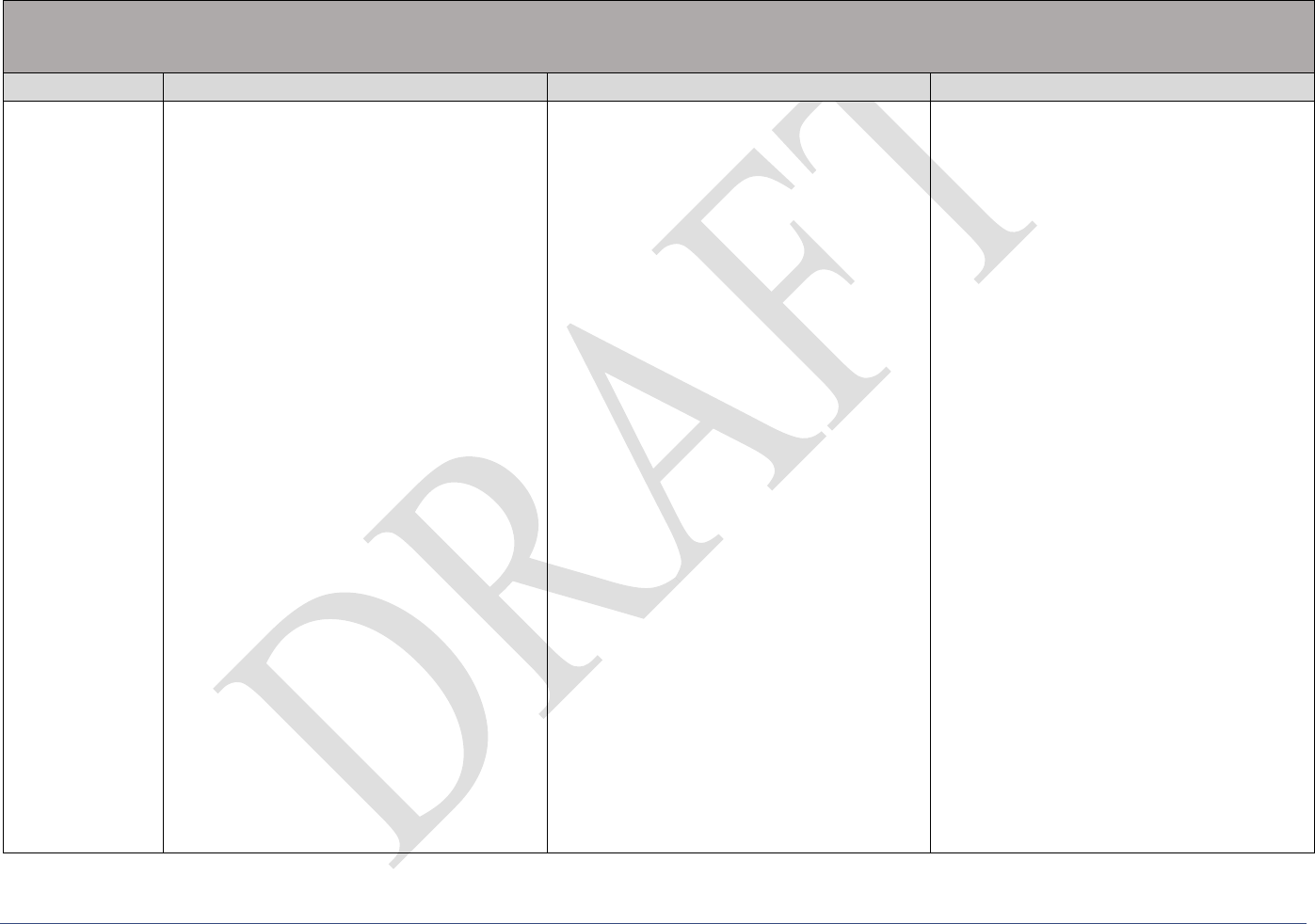
Grade 5 Mathematics Reporting Category Statements
Disclaimer: This document is informational and is not for instructional purposes. The knowledge and skills described do not encompass all that a student is expected to learn in this grade.
Reporting Category Statements – B.E.S.T. Mathematics Standards 26
Office of Assessment Florida Department of Education
Geometric Reasoning, Measurement, and Data Analysis and Probability
See Benchmarks for Excellent Student Thinking 5.GR.1.1, 5.GR.1.2, 5.GR.2.1, 5.GR.3.1, 5.GR.3.2, 5.GR.3.3, 5.GR.4.1, 5.GR.4.2, 5.DP.1.1, 5.DP.1.2,
5.M.1.1
Indicator
Below Expectations
At/Near Expectations
Above Expectations
What These
Results Mean
For example, your learner may be able to:
• Solve one- or two-step problems that
involve converting measurement units
to equivalent measurements within a
single system of measurement.
• Identify a triangle or quadrilateral
based on a given attribute, such as
contains a right angle or parallel lines.
• Describe an attribute (number and
shape of faces, number and shape of
bases, whether or not there is an apex,
curved or straight edges and curved or
flat faces) and/or identify three-
dimensional figures limited to right
pyramids, right prisms, right circular
cylinders, right circular cones, and
spheres.
• Find the perimeter and area of a
rectangle with one fractional side
length when given a visual model.
• Solve mathematical or real-world
problems involving the volume of right
rectangular prisms with whole number
edge lengths not greater than 3 using a
visual model.
• Identify the origin, axes, and a graphed
point in the first quadrant of a
coordinate system.
For example, your learner may be able to:
• Solve problems in two or more steps
that involve converting measurement
units to equivalent measurements
within a single system of measurement.
• Classify and explain why a triangle or
quadrilateral would or would not
belong to a category based on an
attribute.
• Identify and classify three-dimensional
figures when given attributes, limited
to right pyramids, right prisms, right
circular cylinders, right circular cones,
and spheres.
• Find the perimeter and area of a
rectangle with fractional or decimal
side lengths using models.
• Solve mathematical or real-world
problems involving the volume of right
rectangular prisms with whole number
edge lengths not greater than 5 where
there may be an unknown edge length
using a visual model or a formula.
• Graph points in the first quadrant of a
coordinate system.
• Collect and represent numerical data
including fractional and decimal values
from tables, line graphs, or line plots.
• Interpret numerical data sets to
determine the mean, median, mode, or
range.
For example, your learner may be able to:
• Identify errors in problems that involve
converting measurement units to
equivalent measurements within the
same system.
• Classify triangles and quadrilaterals
into multiple categories and explain
why the shapes would or would not
belong to a category based on an
attribute.
• Identify and classify three-dimensional
figures into multiple categories based
on their defining attributes.
• Find the perimeter and area of a
rectangle with missing fractional or
decimal side lengths using formulas.
• Solve problems involving volume of
composite figures.
• Write an equation with a variable for
the unknown to represent a volume
problem with an unknown edge length.
• Given a real-world context, graph and
interpret ordered pairs in the first
quadrant of the coordinate plane.
• Collect, represent, and justify
numerical data including fractions and
decimals in tables, line graphs, or line
plots.
• When given the mean of a numerical
data set, find a missing value that is a
part of the data set.
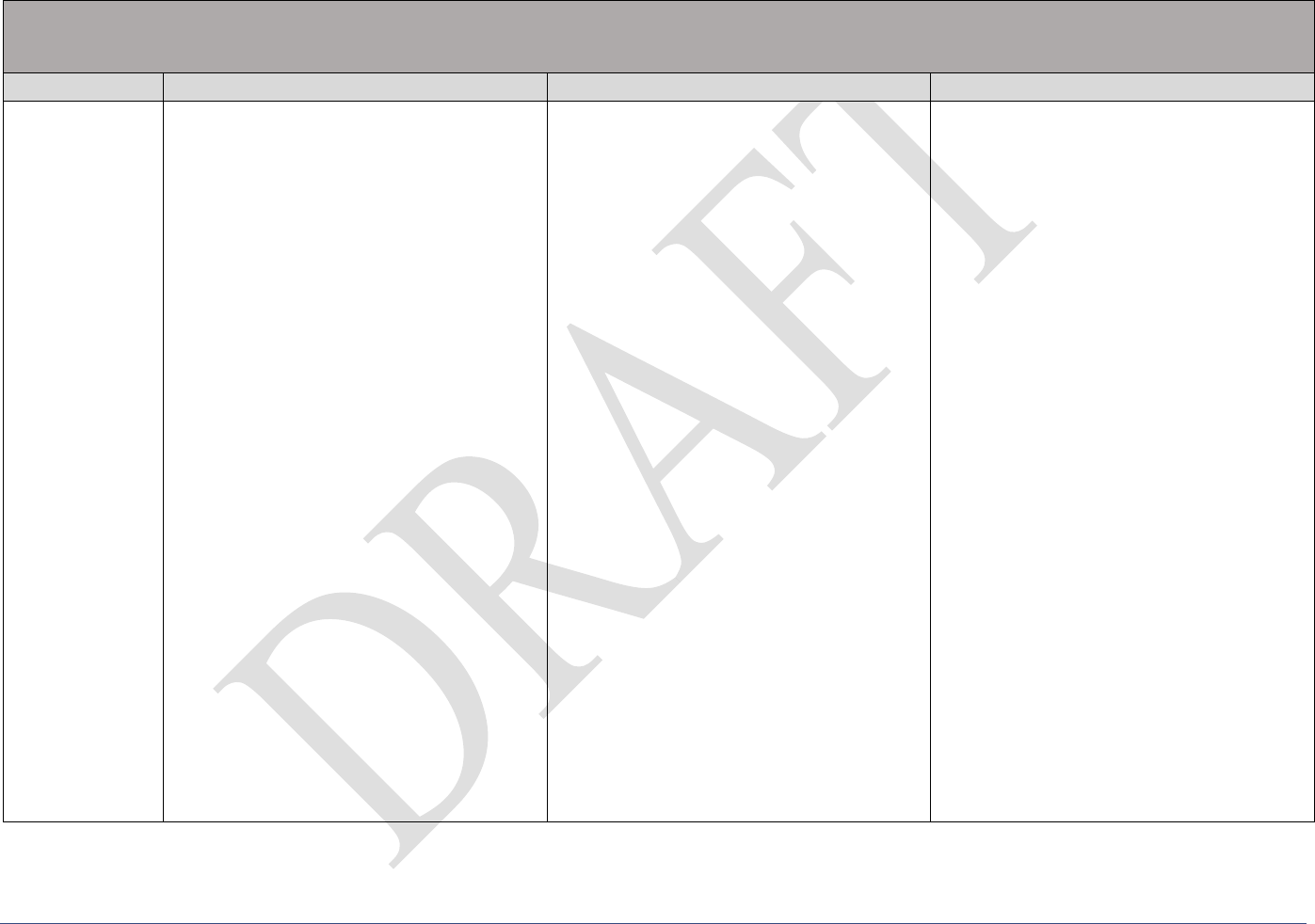
Grade 5 Mathematics Reporting Category Statements
Disclaimer: This document is informational and is not for instructional purposes. The knowledge and skills described do not encompass all that a student is expected to learn in this grade.
Reporting Category Statements – B.E.S.T. Mathematics Standards 27
Office of Assessment Florida Department of Education
Geometric Reasoning, Measurement, and Data Analysis and Probability
See Benchmarks for Excellent Student Thinking 5.GR.1.1, 5.GR.1.2, 5.GR.2.1, 5.GR.3.1, 5.GR.3.2, 5.GR.3.3, 5.GR.4.1, 5.GR.4.2, 5.DP.1.1, 5.DP.1.2,
5.M.1.1
Indicator
Below Expectations
At/Near Expectations
Above Expectations
Next Steps
For example, have your learner:
• Solve two-step real-world problems
converting measurements within a
single unit of measure.
• Classify different triangles and
quadrilaterals based on attributes, such
as the number of parallel or
perpendicular lines and type of angles.
• Identify and classify three-dimensional
figures (right pyramids, right prisms,
right circular cylinders, right circular
cones, and spheres) based on their
attributes. This can be done with
everyday objects found in real-life
settings such as tissue boxes, cans, or
furniture.
• Identify and label the origin, x-axis,
and y-axis of the first quadrant, then
graph points and label with the ordered
pair.
• Collect data from print or online
materials and use mean, median, mode,
and range to describe the data set.
• Solve real-world and mathematical
problems involving the volume of right
rectangular prisms.
For example, have your learner:
• Solve multi-step real-world problems
that involve converting measurement
units within a single unit of measure.
For example, use a measuring tape to
measure the length of items in the
home in feet, determine how many
inches that would be and re-measure
using inches to check your conversion.
• Classify different two- and three-
dimensional shapes (right pyramids,
right prisms, right circular cylinders,
right circular cones, and spheres) by
shared defining attributes (number and
shape of faces, number and shape of
bases, whether or not there is an apex,
curved or straight edges, and curved or
flat faces). This can be done with
everyday objects found in real-life
settings such as items in the pantry or
furniture.
• Find areas and perimeters of real-world
objects with side lengths that include
mixed numbers. Use a measuring tape
to measure items such as a coffee table
or nightstand and determine the area
and perimeter.
• Solve real-world problems involving
the volume of composite figures made
up of two or more rectangular prisms.
For example, have your learner:
• Find the area and perimeter of real-
world objects with side lengths that
include mixed numbers. Use a
measuring tape to measure items such
as a coffee table or nightstand and
determine the area and perimeter.
• Compare figures with different
dimensions based on their volume.
• Collect data from real-life situations
and calculate mean, median, mode, and
range to describe the data set.
• Represent a data set in more than one
way through a table, line graph, or line
plot and justify the best choice of data
representation.
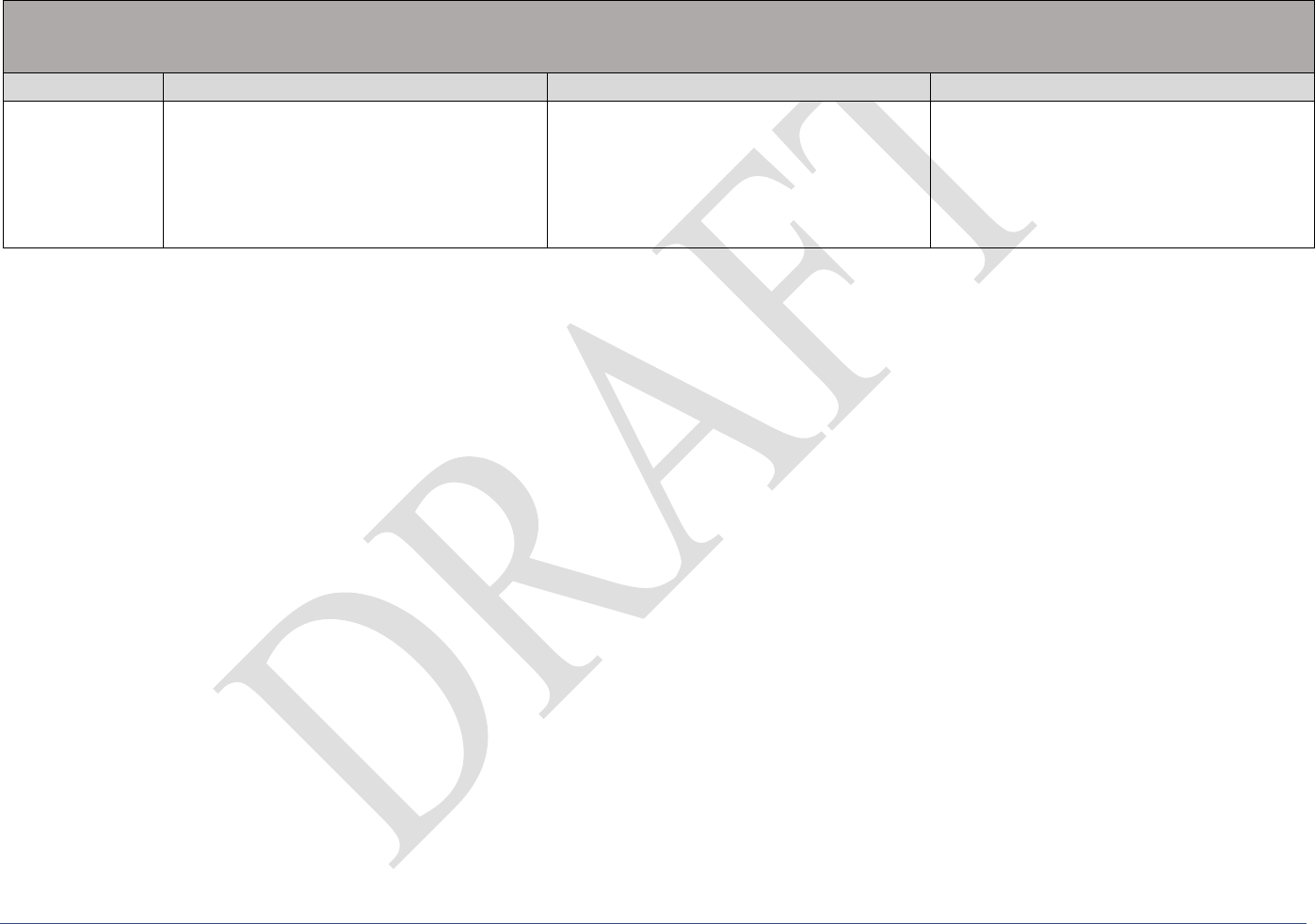
Grade 5 Mathematics Reporting Category Statements
Disclaimer: This document is informational and is not for instructional purposes. The knowledge and skills described do not encompass all that a student is expected to learn in this grade.
Reporting Category Statements – B.E.S.T. Mathematics Standards 28
Office of Assessment Florida Department of Education
Geometric Reasoning, Measurement, and Data Analysis and Probability
See Benchmarks for Excellent Student Thinking 5.GR.1.1, 5.GR.1.2, 5.GR.2.1, 5.GR.3.1, 5.GR.3.2, 5.GR.3.3, 5.GR.4.1, 5.GR.4.2, 5.DP.1.1, 5.DP.1.2,
5.M.1.1
Indicator
Below Expectations
At/Near Expectations
Above Expectations
• Convert the measurements of real-
world objects using a single system of
measurement.
• Collect data from real-life situations
and use mean, median, mode, and
range to describe the data set.
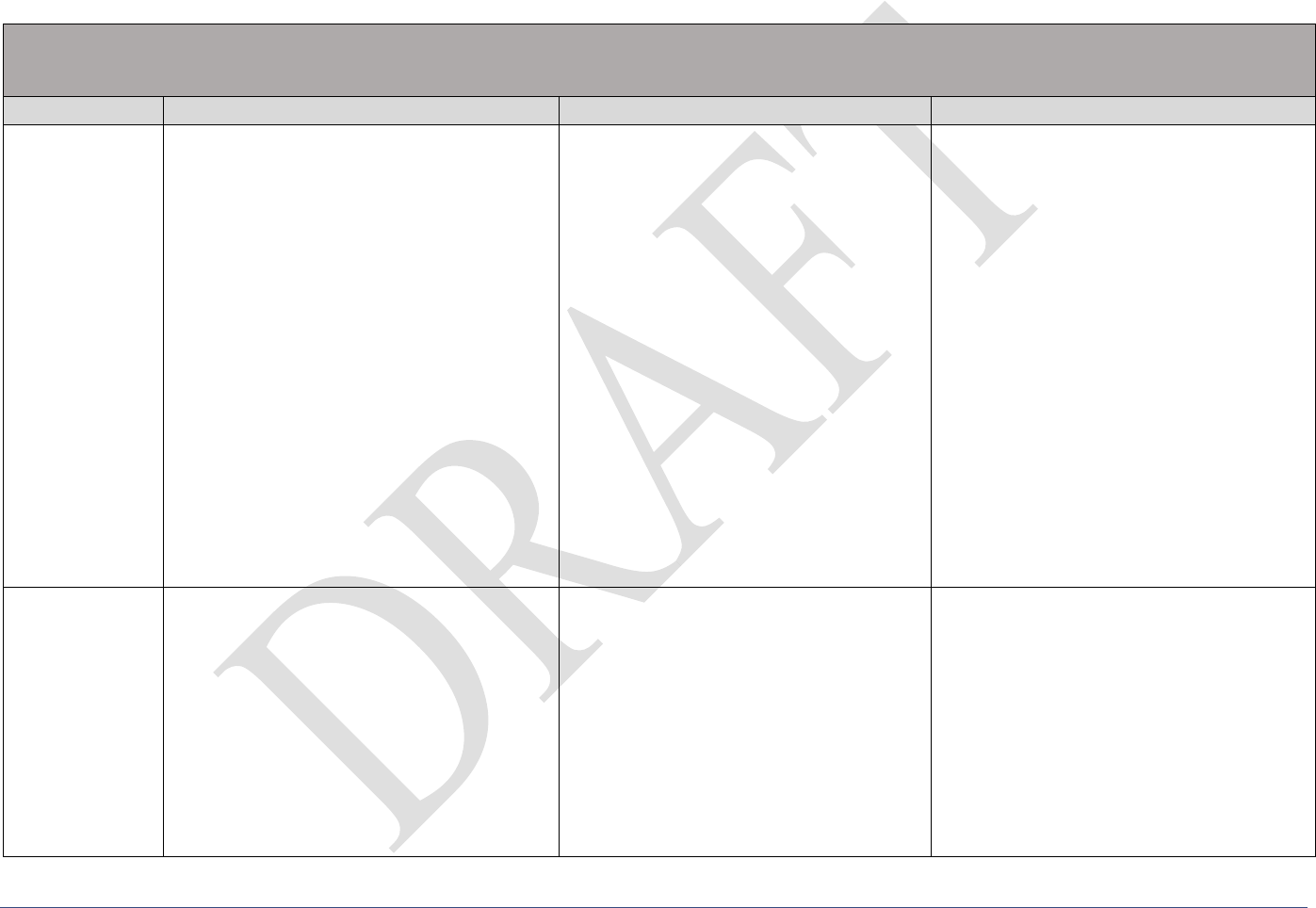
Grade 6 Mathematics Reporting Category Statements
Disclaimer: This document is informational and is not for instructional purposes. The knowledge and skills described do not encompass all that a student is expected to learn in this grade.
Reporting Category Statements – B.E.S.T. Mathematics Standards 29
Office of Assessment Florida Department of Education
Grade 6 Mathematics Reporting Category Statements
Number Sense and Operations
See Benchmarks for Excellent Student Thinking 6.NSO.1.1, 6.NSO.1.2, 6.NSO.1.3, 6.NSO.1.4, 6.NSO.2.1, 6.NSO.2.2, 6.NSO.2.3, 6.NSO.3.1, 6.NSO.3.2,
6.NSO.3.3, 6.NSO.3.4, 6.NSO.3.5, 6.NSO.4.1, 6.NSO.4.2
Indicator
Below Expectations
At/Near Expectations
Above Expectations
What These
Results Mean
For example, your learner may be able to:
• Use a horizontal number line to identify
positive and negative numbers.
• Compare absolute values.
• Multiply and divide multi-digit numbers
with decimals to the tenths or
hundredths place.
• Solve two-step real-world problems
involving addition, subtraction, and
multiplication.
• Find the greatest common factor within
100 or least common multiple with
factors to 10 of two whole numbers.
For example, your learner may be able to:
• Plot, order, and compare rational
numbers on a number line when given
in the same form.
• Interpret the absolute value of a
rational number as the distance from
zero on a number line.
• Interpret one-step absolute value
mathematical problems in a
mathematical context.
• Solve two-step real-world problems
involving addition, subtraction,
multiplication, and division with
positive rational numbers.
• Find the greatest common factor
within 1000 or least common multiple
with factors to 25.
• Evaluate positive rational numbers
with natural number exponents to 5.
For example, your learner may be able to:
• Plot and order rational numbers on a
number line.
• Compare rational numbers.
• Interpret and explain the absolute value
of a rational number (including zero) in
a real-world context.
• Solve and explain two-step absolute
value mathematical or real-world
problems.
• Explain the relationship between the
greatest common factor and rewriting
equivalent fractions.
• Solve multi-step problems involving
positive rational numbers.
• Rewrite the sum of two composite
whole numbers having a common
factor.
Next Steps
For example, have your learner:
• Identify which temperatures are closer to
zero when reading a weather report.
• Practice fractions and decimals by using
money transactions or dividing a pie into
fractions.
• Practice addition, subtraction,
multiplication, and division of positive
rational numbers.
• Calculate the cost of multiple items
when shopping.
For example, have your learner:
• Use visual models, such as candy,
food, integer chips, or number lines,
to add, subtract, multiply, and divide
integers.
• Change mixed numbers to fractions
greater than one and vice versa.
• Determine what amount of an
ingredient is needed to complete a
recipe.
For example, have your learner:
• Practice adding, subtracting,
multiplying, and dividing by using
real-world examples, such as
withdrawing and depositing money
into the bank.
• Find the greatest common factors
above 1000 and least common
multiples beyond 25.
• Discuss how exponents greater than 5
can be utilized in the real world.
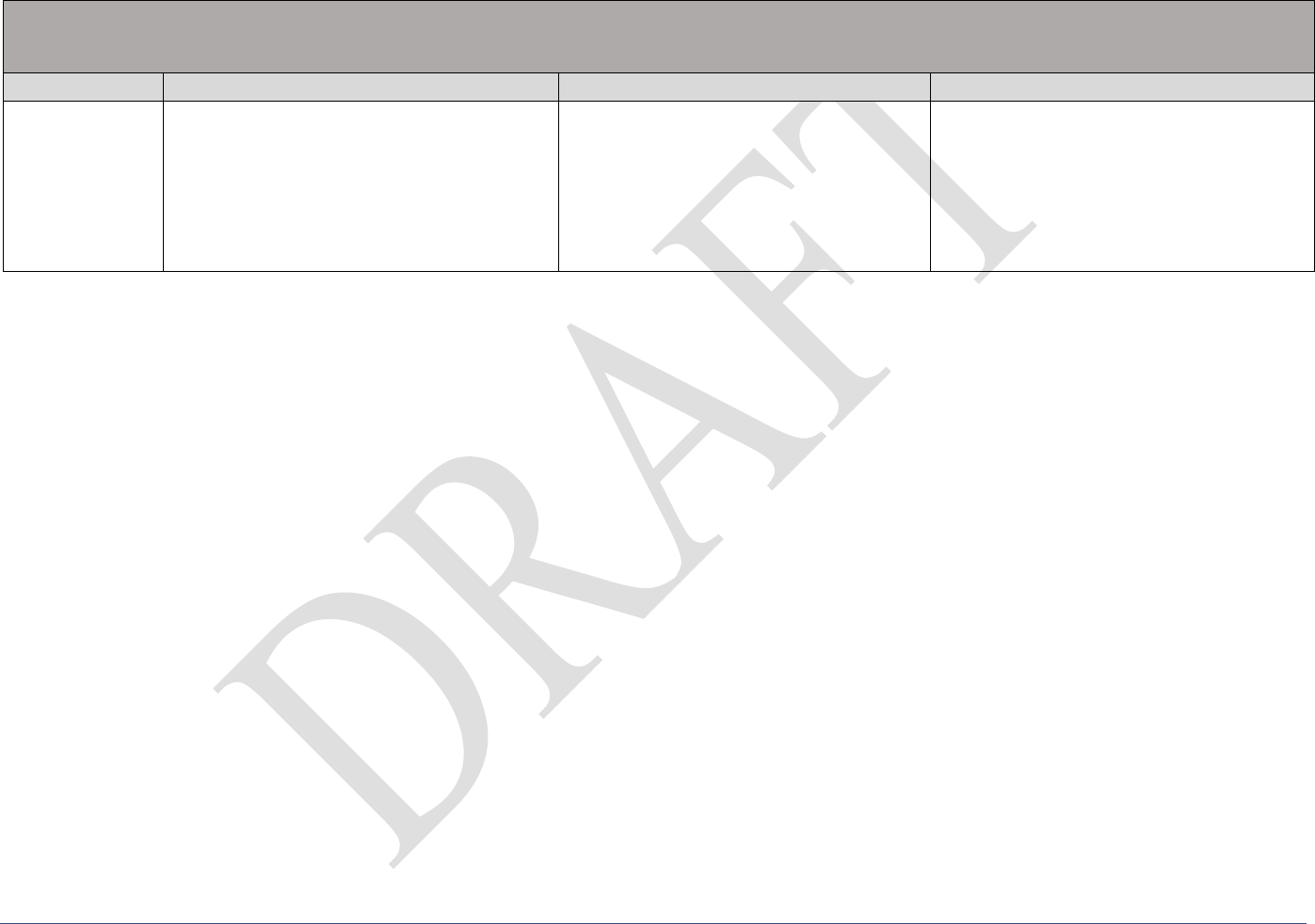
Grade 6 Mathematics Reporting Category Statements
Disclaimer: This document is informational and is not for instructional purposes. The knowledge and skills described do not encompass all that a student is expected to learn in this grade.
Reporting Category Statements – B.E.S.T. Mathematics Standards 30
Office of Assessment Florida Department of Education
Number Sense and Operations
See Benchmarks for Excellent Student Thinking 6.NSO.1.1, 6.NSO.1.2, 6.NSO.1.3, 6.NSO.1.4, 6.NSO.2.1, 6.NSO.2.2, 6.NSO.2.3, 6.NSO.3.1, 6.NSO.3.2,
6.NSO.3.3, 6.NSO.3.4, 6.NSO.3.5, 6.NSO.4.1, 6.NSO.4.2
Indicator
Below Expectations
At/Near Expectations
Above Expectations
• Rewrite larger numbers as the product of
smaller numbers.
• Use flashcards to practice academic
vocabulary (rational numbers,
exponents, integers, absolute value,
greatest common factor, and least
common multiple).

Grade 6 Mathematics Reporting Category Statements
Disclaimer: This document is informational and is not for instructional purposes. The knowledge and skills described do not encompass all that a student is expected to learn in this grade.
Reporting Category Statements – B.E.S.T. Mathematics Standards 31
Office of Assessment Florida Department of Education
Algebraic Reasoning
See Benchmarks for Excellent Student Thinking 6.AR.1.1, 6.AR.1.2, 6.AR.1.3, 6.AR.1.4, 6.AR.2.1, 6.AR.2.2, 6.AR.2.3, 6.AR.2.4, 6.AR.3.1, 6.AR.3.2,
6.AR.3.3, 6.AR.3.4, 6.AR.3.5
Indicator
Below Expectations
At/Near Expectations
Above Expectations
What These
Results Mean
For example, your learner may be able to:
• Translate written descriptions into
linear algebraic expressions.
• Represent an inequality on a number
line.
• Evaluate algebraic expressions using
substitution and order of operations
using positive integers.
• Solve one-step equations using
addition or subtraction with a visual
model.
• Write part-to-part ratios and identify
rates for a ratio of quantities using
different units.
For example, your learner may be able to:
• Translate between written descriptions
and linear algebraic expressions.
• Translate a real-world description into
an inequality and represent the
inequality on a number line.
• Apply properties of operations to
generate equivalent expressions with
positive integer coefficients.
• Solve one-step equations with positive
and negative integers.
• Solve math problems involving ratios,
rates, and unit rates.
• Write and interpret part-to-part and
part-to-whole ratios and show the
relative size of two quantities in the
same units.
For example, your learner may be able to:
• Translate between written descriptions
and linear algebraic expressions,
including error analysis and
justification.
• Evaluate algebraic expressions using
substitution and order of operations.
• Explain how properties of operations
generate equivalent algebraic
expressions.
• Write or solve equations in
mathematical and real-world contexts
using all operations and variables on
both sides of the equal sign.
• Write, interpret, and calculate ratios
and rates given real-world contexts.
• Interpret and explain relationships
between ratios.
• Explain the relationship between the
percent, the part, and the whole.
Next Steps
For example, have your learner:
• Use real-world scenarios to write
inequality statements.
• Practice using order of operations and
inverse operations.
• Determine whether certain numbers
would make situations become true or
not. For example, determine how many
items can be bought at a store with a
certain amount of money.
• Use algebra tiles to practice solving
one-step equations.
For example, have your learner:
• Write expressions and inequalities
when given numerical information in
real-world contexts (e.g. bank
statements).
• Practice solving problems involving
unit rates by using items found at a
store. For example, ask your learner to
determine the cost of each apple in a
given number of pounds.
• Practice part-to-part and part-to-whole
ratios by adjusting recipes. For
For example, have your learner:
• Translate between written descriptions
and linear algebraic expressions.
• Evaluate algebraic expressions using
substitution and order of operations.
• Write or solve equations using all
operations and variables given real-
world problems.
• Calculate and interpret unit rate for a
ratio of quantities with different units.
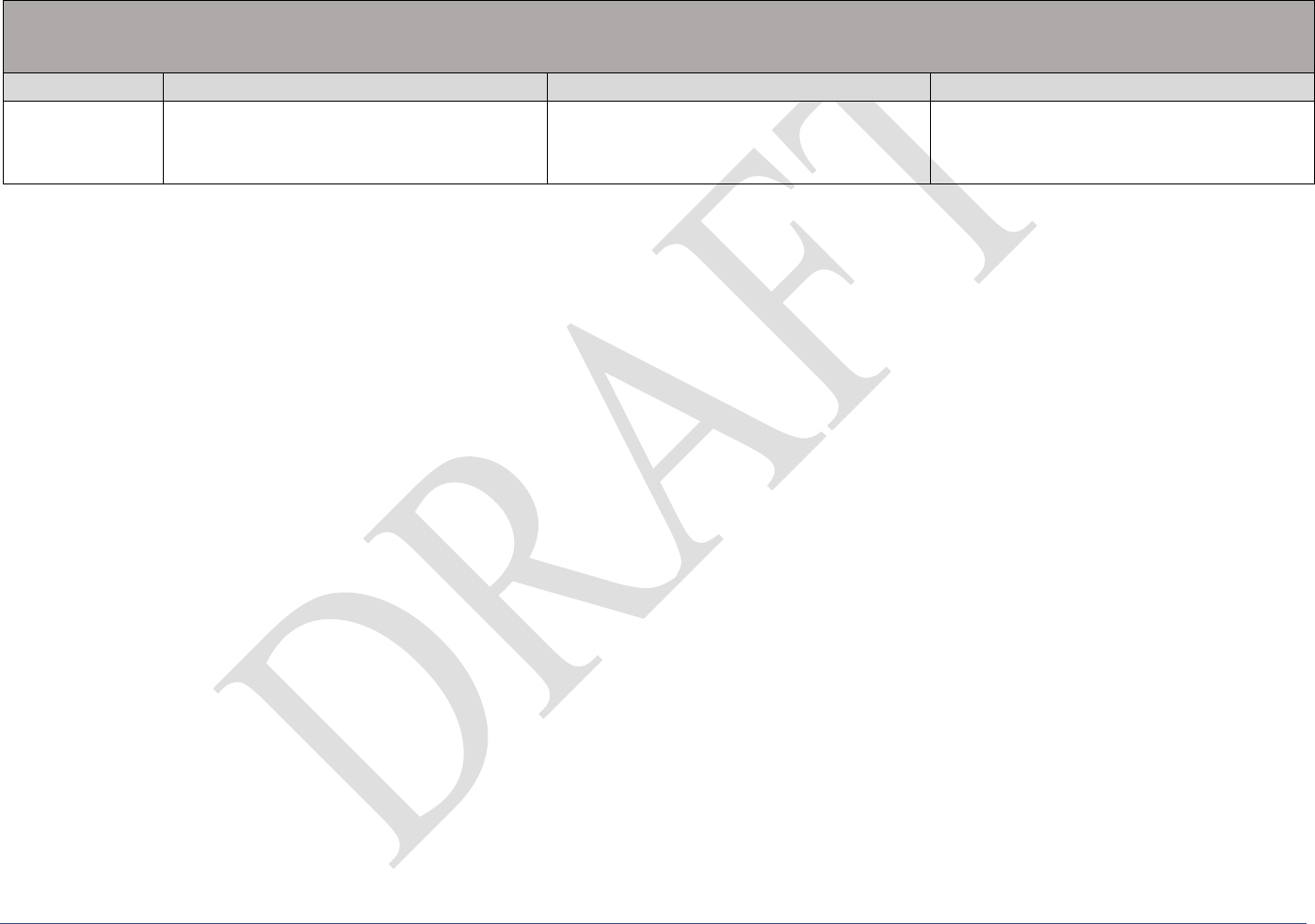
Grade 6 Mathematics Reporting Category Statements
Disclaimer: This document is informational and is not for instructional purposes. The knowledge and skills described do not encompass all that a student is expected to learn in this grade.
Reporting Category Statements – B.E.S.T. Mathematics Standards 32
Office of Assessment Florida Department of Education
Algebraic Reasoning
See Benchmarks for Excellent Student Thinking 6.AR.1.1, 6.AR.1.2, 6.AR.1.3, 6.AR.1.4, 6.AR.2.1, 6.AR.2.2, 6.AR.2.3, 6.AR.2.4, 6.AR.3.1, 6.AR.3.2,
6.AR.3.3, 6.AR.3.4, 6.AR.3.5
Indicator
Below Expectations
At/Near Expectations
Above Expectations
• Calculate how long it will take to travel
somewhere if traveling at a consistent
speed the entire time.
example, increasing or decreasing the
number of ingredients needed while
keeping the ratios the same.
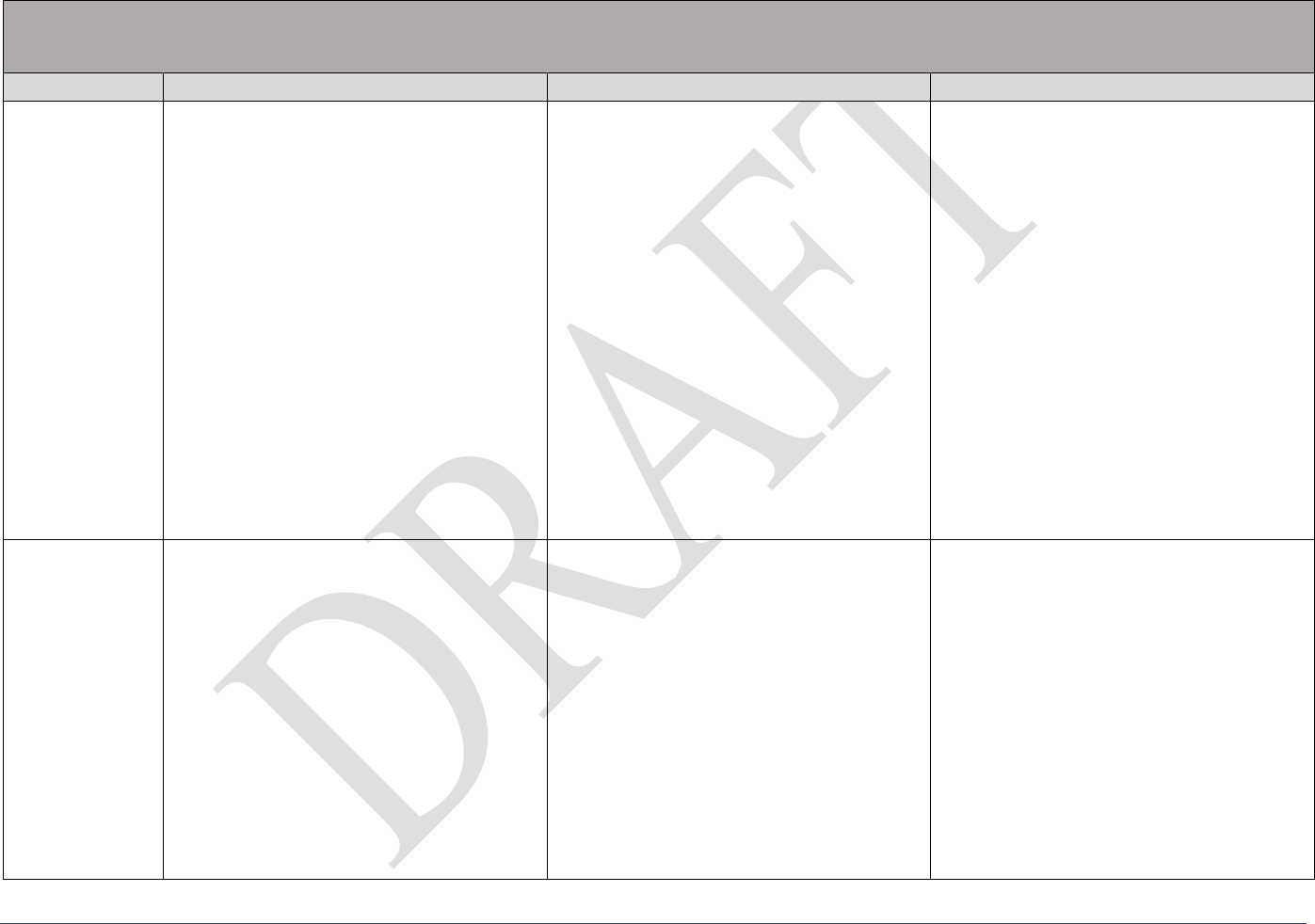
Grade 6 Mathematics Reporting Category Statements
Disclaimer: This document is informational and is not for instructional purposes. The knowledge and skills described do not encompass all that a student is expected to learn in this grade.
Reporting Category Statements – B.E.S.T. Mathematics Standards 33
Office of Assessment Florida Department of Education
Geometric Reasoning, Data Analysis, and Probability
See Benchmarks for Excellent Student Thinking 6.GR.1.1, 6.GR.1.3 (including 6.GR.1.2), 6.GR.2.1, 6.GR.2.2, 6.GR.2.3, 6.GR.2.4, 6.DP.1.1, 6.DP.1.2,
6.DP.1.3, 6.DP.1.4, 6.DP.1.5, 6.DP.1.6
Indicator
Below Expectations
At/Near Expectations
Above Expectations
What These
Results Mean
For example, your learner may be able to:
• Plot ordered pairs on a coordinate
plane.
• Find the surface area of right
rectangular prisms and pyramids, given
a net.
• Find the area of quadrilaterals with
positive integers.
• Use a box plot to find the minimum,
median, and maximum, and identify
the upper and lower quartiles.
• Describe the spread and distribution of
a histogram and line plot.
For example, your learner may be able to:
• Plot rational number ordered pairs in
all four quadrants on a coordinate
plane.
• Find the horizontal or vertical distance
between pairs, limited to the same y-
coordinate or the same x-coordinate in
any quadrant.
• Use the formula for the area of a
triangle, the volume or surface area of
a right rectangular prism, and the area
of composite figures to solve problems.
• Recognize a statistical question.
• Find the mean, median, mode, and
range from a data set.
• Use box plots and histograms to
describe data and determine key
features.
For example, your learner may be able to:
• Plot rational number ordered pairs, find
horizontal and vertical distances
between pairs in any quadrant, and
explain the line of reflection.
• Solve real-world problems involving
the area of quadrilaterals, composite
figures, and finding surface area.
• Formulate and explain statistical
questions and interpret mean, median,
mode, and range.
• Create and use a box plot, histogram,
or line plot in real-world contexts and
describe the distribution and spread of
the data.
• Explain how adding more data to a
data set will impact the mean, median,
mode, and range.
Next Steps
For example, have your learner:
• Practice plotting points and counting
spaces to generate fluency with
coordinate planes.
• Cut and measure different sizes of
rectangular prisms, such as boxes, to
find the surface area and volume of the
shape.
• Track the time engaged in a favorite
activity for a week and then find the
mean, median, mode, and range of the
data.
• Determine statistical questions from
different forms of media.
For example, have your learner:
• Practice finding the area, surface area,
and perimeter of different objects at
home, such as quadrilaterals, pyramids,
and triangles.
• Formulate statistical questions and
collect data and use the data to produce
graphs and charts.
• Discuss how adding more data to a
data set will impact the mean, median,
mode, and range.
• Use different forms of media to read
and interpret different graphical data
displays.
For example, have your learner:
• Use graph paper or coordinate grids to
plot ordered pairs and find the
perimeter and area of the shapes on the
grid.
• Create composite shapes and calculate
the area of each shape.
• Formulate statistical questions to
generate a data set and interpret the
data.
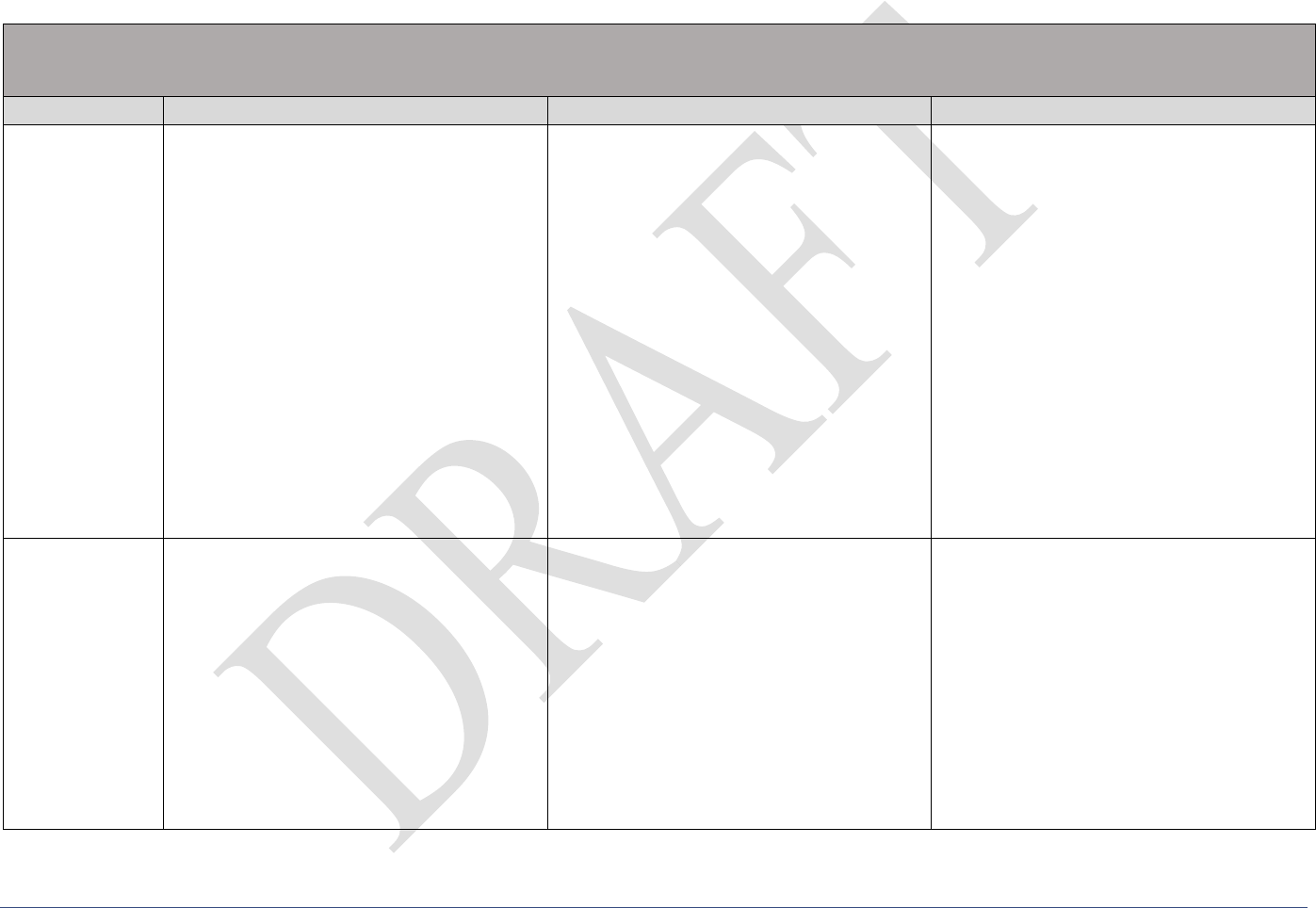
Grade 7 Mathematics Reporting Category Statements
Disclaimer: This document is informational and is not for instructional purposes. The knowledge and skills described do not encompass all that a student is expected to learn in this grade.
Reporting Category Statements – B.E.S.T. Mathematics Standards 34
Office of Assessment Florida Department of Education
Grade 7 Mathematics Reporting Category Statements
Number Sense and Operations and Algebraic Reasoning
See Benchmarks for Excellent Student Thinking 7.NSO.1.1, 7.NSO.1.2, 7.NSO.2.1, 7.NSO.2.2, 7.NSO.2.3, 7.AR.1.2 (including 7.AR.1.1), 7.AR.2.1,
7.AR.2.2
Indicator
Below Expectations
At/Near Expectations
Above Expectations
What These
Results Mean
For example, your learner may be able to:
• Identify exponential expressions.
• Identify equivalent fractions, mixed
numbers, and decimals.
• Use the four basic operations to solve
problems that include variables.
• Solve equations with minimal steps
using the order of operations, whole
number exponents, and absolute value.
• Solve one-step inequalities and two-
step equations with all positive integers
or one rational number.
For example, your learner may be able to:
• Apply Laws of Exponents to evaluate
exponential expressions.
• Rewrite different forms of rational
numbers to solve problems.
• Use the four basic operations to solve
problems involving rational numbers
and variables.
• Use the order of operations with
rational numbers in the same form,
including negatives, to solve both real-
world and mathematical problems.
• Write and solve one-step inequalities
and two-step equations with rational
numbers in the same form.
For example, your learner may be able to:
• Apply Laws of Exponents to generate
exponential expressions.
• Rewrite different forms of rational
numbers to solve problems and justify
the form chosen.
• Use the four basic operations to solve
problems, including expressions with
variables and analyze errors.
• Solve real-world problems involving
operations and interpret the solution in
the context of the problem that is
presented.
• Write and solve one-step inequalities
and two-step equations and interpret
the solution in context of the situation
presented.
Next Steps
For example, have your learner:
• Practice simple operations using
exponents, fractions, mixed numbers,
and/or decimals (e.g., by calculating
prices or adjusting recipes for different
serving sizes).
• Share which operation would be used
to arrive at solutions in real-world
contexts, such as money exchanges,
travel costs, or travel time.
• Solve problems involving negative
numbers using examples such as
For example, have your learner:
• Practice operations using exponents,
fractions, mixed numbers, and
decimals by calculating the price of gas
or the cost of groceries.
• Convert between decimals and
fractions to describe quantities in real-
world contexts such as with money and
food portions.
For example, have your learner:
• Use operations in everyday situations
such as income, expenditures, travel, or
taxes.
• Practice real-world application skills
by explaining which operations are
used to find solutions in various multi-
step problems.
• Practice writing scenarios that
represent one-step inequalities, such as
how many items can be purchased with
a given amount of money.
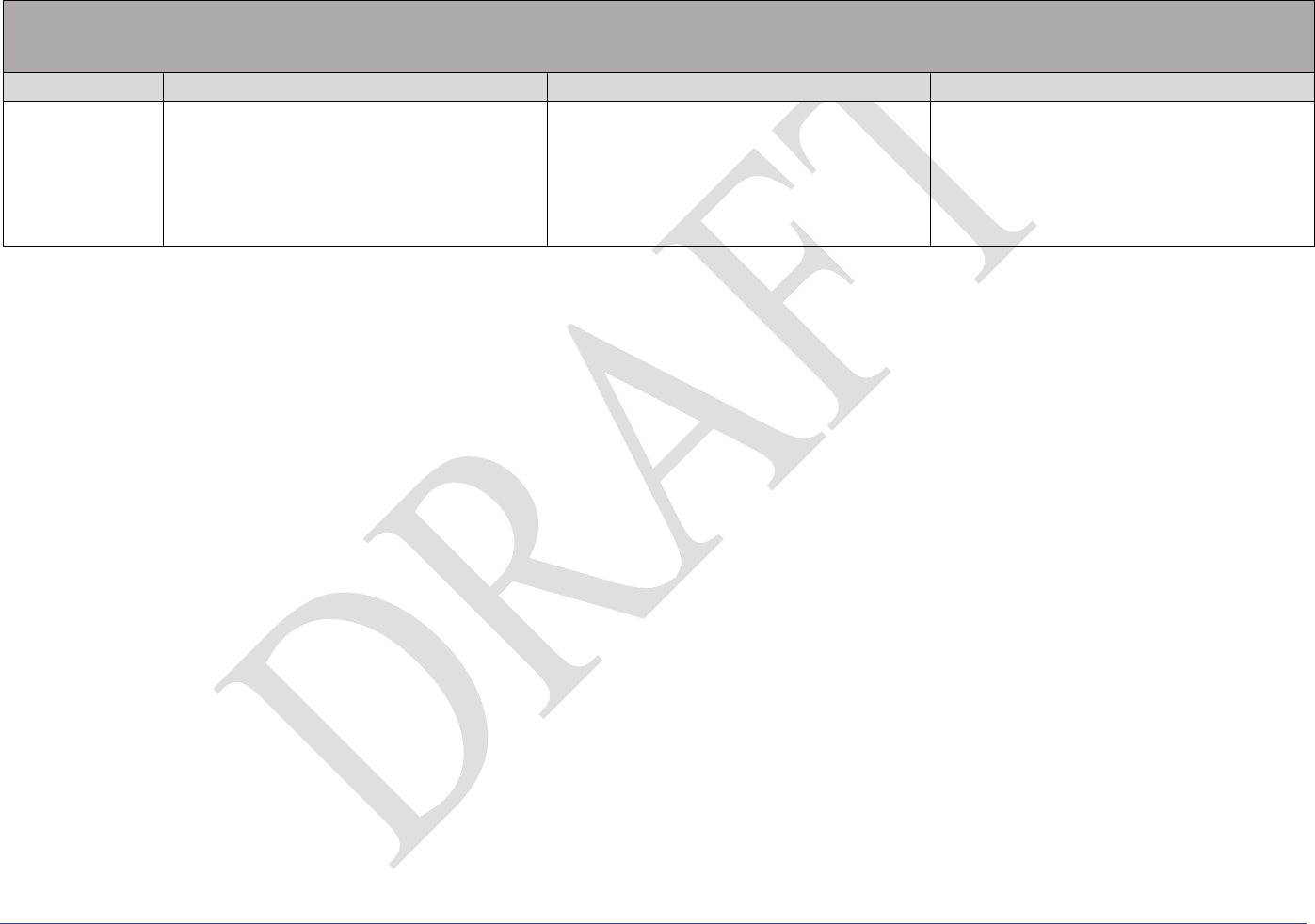
Grade 7 Mathematics Reporting Category Statements
Disclaimer: This document is informational and is not for instructional purposes. The knowledge and skills described do not encompass all that a student is expected to learn in this grade.
Reporting Category Statements – B.E.S.T. Mathematics Standards 35
Office of Assessment Florida Department of Education
Number Sense and Operations and Algebraic Reasoning
See Benchmarks for Excellent Student Thinking 7.NSO.1.1, 7.NSO.1.2, 7.NSO.2.1, 7.NSO.2.2, 7.NSO.2.3, 7.AR.1.2 (including 7.AR.1.1), 7.AR.2.1,
7.AR.2.2
Indicator
Below Expectations
At/Near Expectations
Above Expectations
banking, temperatures, and distance
above/below sea level.
• Practice writing scenarios that
represent two-step equations such as
finding the cost of a monthly
subscription for several months,
including a sign-up fee, given the total
cost.
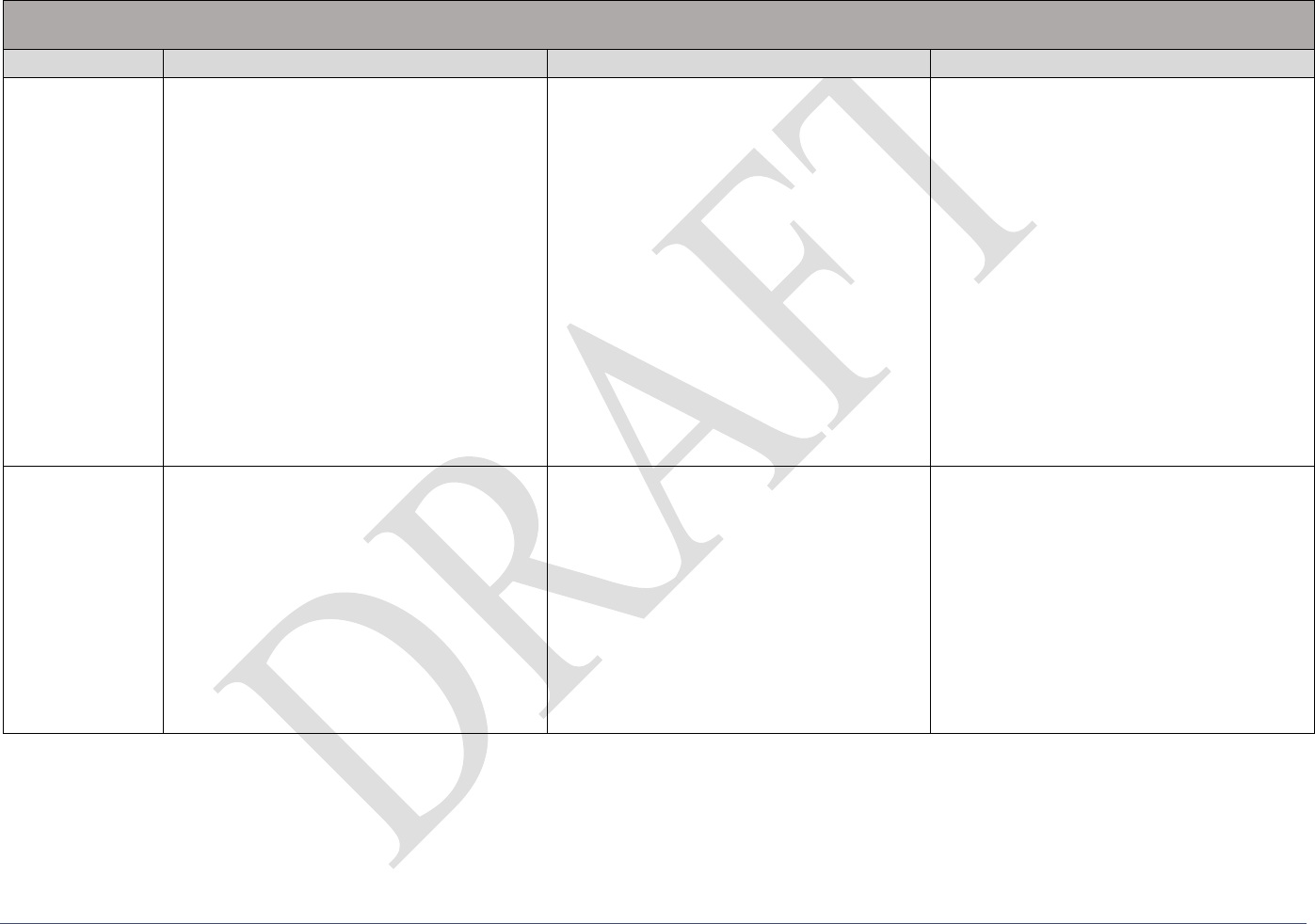
Grade 7 Mathematics Reporting Category Statements
Disclaimer: This document is informational and is not for instructional purposes. The knowledge and skills described do not encompass all that a student is expected to learn in this grade.
Reporting Category Statements – B.E.S.T. Mathematics Standards 36
Office of Assessment Florida Department of Education
Proportional Reasoning and Relationships
See Benchmarks for Excellent Student Thinking 7.AR.3.1, 7.AR.3.3, 7.AR.4.1, 7.AR.4.2, 7.AR.4.3, 7.AR.4.4, 7.AR.4.5 (including 7.AR.3.2)
Indicator
Below Expectations
At/Near Expectations
Above Expectations
What These
Results Mean
For example, your learner may be able to:
• Identify ratios.
• Solve problems involving a single
conversion of units across different
measurement systems, given a whole
number measurement.
• Define a proportional relationship.
• Graph proportional relationships from
a table.
For example, your learner may be able to:
• Apply ratios to real-world problems.
• Solve problems involving the
conversion of units across different
measurement systems (length, area,
weight, mass, volume, and money).
• Determine a proportional relationship
by examining a table or graph.
• Graph a proportional relationship from
a table or equation.
• Find the constant of proportionality
from a table or graph.
For example, your learner may be able to:
• Solve and interpret multi-step real-
world problems involving percents.
• Solve and interpret problems involving
the conversion of units across different
measurement systems.
• Identify and justify proportional
relationships by explaining whether the
ratio between the two quantities is
proportional.
• Graph a proportional relationship from
a table, equation, or written
description.
• Determine and interpret the constant of
proportionality from a table, graph, or
written description.
Next Steps
For example, have your learner:
• Practice calculating sale prices and
discounts.
• Practice measurement conversion by
adjusting recipes or using sales ads.
• Use proportions to solve real-world
problems involving cost, speed, and
distance.
For example, have your learner:
• Practice multi-step problems by
calculating tips and taxes and adding
them to the total bill.
• Use multiple sales ads to explain
whether a deal saves money given the
information.
• Set up and solve proportions to practice
conversions, such as currency
conversions.
For example, have your learner:
• Practice calculating percentages in the
real-world, such as a sale at a store or a
tip for a server.
• Compare different proportional
relationships to determine which is the
better value (e.g., price per pound of a
5-pound bag of flour versus price per
pound of a 10-pound bag of flour).
• Explore proportional relationships with
models and maps.
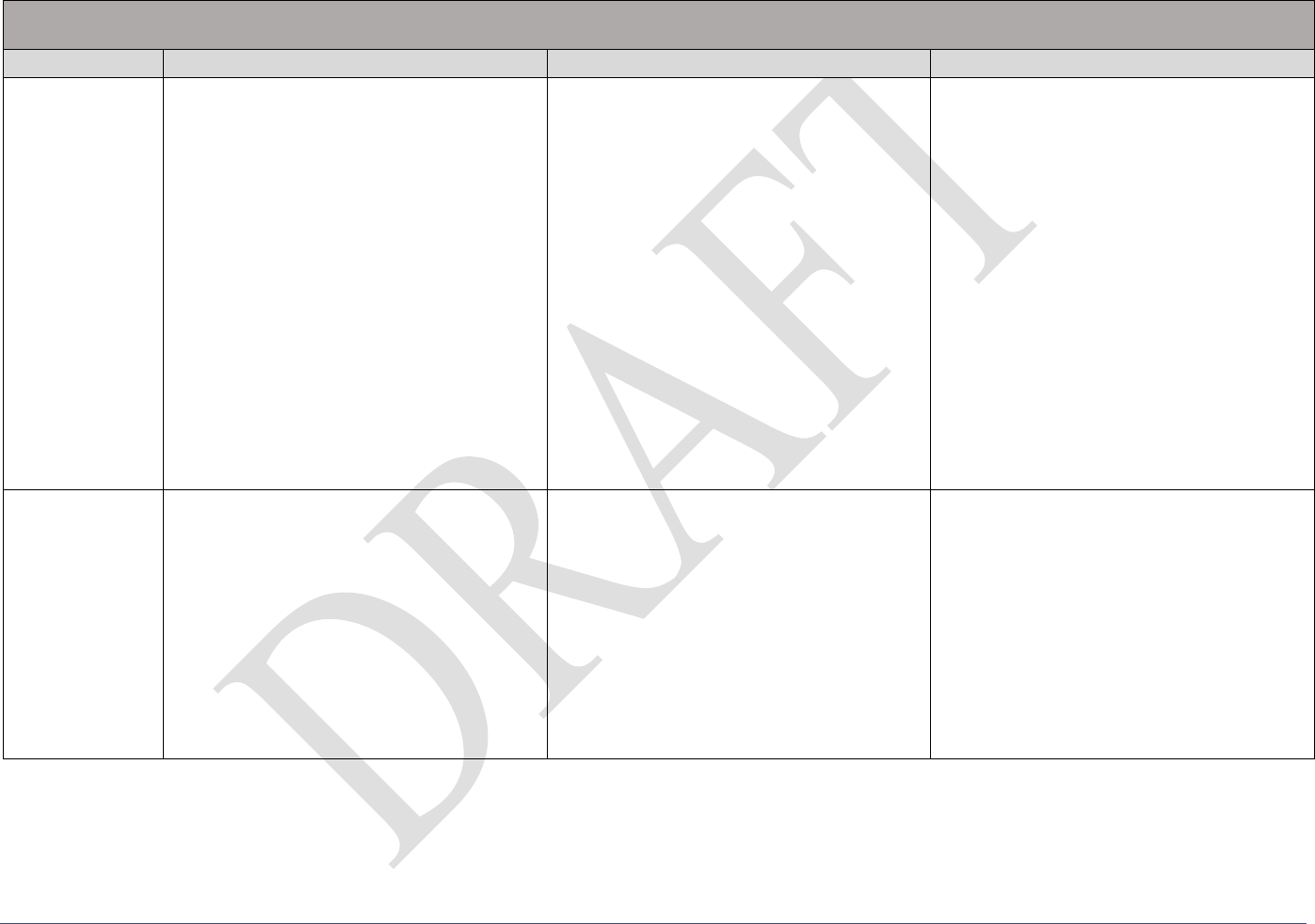
Grade 7 Mathematics Reporting Category Statements
Disclaimer: This document is informational and is not for instructional purposes. The knowledge and skills described do not encompass all that a student is expected to learn in this grade.
Reporting Category Statements – B.E.S.T. Mathematics Standards 37
Office of Assessment Florida Department of Education
Geometric Reasoning
See Benchmarks for Excellent Student Thinking 7.GR.1.1, 7.GR.1.2, 7.GR.1.3, 7.GR.1.4, 7.GR.1.5, 7.GR.2.1, 7.GR.2.2, 7.GR.2.3
Indicator
Below Expectations
At/Near Expectations
Above Expectations
What These
Results Mean
For example, your learner may be able to:
• Identify expressions for finding the
area of trapezoids, parallelograms,
rhombi, and circles.
• Identify expressions that can be used
for the circumference of a circle and
area of a given circle.
• Identify the scale factor in
mathematical problems involving
dimensions of geometric figures.
• Determine the expression used for
surface area and/or volume.
For example, your learner may be able to:
• Apply formulas to find the
circumference of a circle and the area
of parallelograms, rhombi, and circles.
• Solve mathematical problems
involving the area of composite figures
composed of triangles or rectangles.
• Explore the proportional relationship
between the circumference and
diameter of circles.
• Find the surface area and volume of a
right circular cylinder.
For example, your learner may be able to:
• Apply formulas to find the
circumference of a circle and the area
of parallelograms, rhombi, trapezoids,
circles, and fractional parts of a circle.
• Solve real-world problems involving
the area of composite figures and
multiple polygons.
• Apply the formula for the
circumference of a circle and interpret
the solution.
• Solve and interpret real-world
problems involving areas, volumes,
and surface areas of right circular
cylinders.
• Solve problems including scale
drawings and scale factors.
Next Steps
For example, have your learner:
• Find right triangles and rectangles
within other shapes to find the area.
• Calculate the area of objects at home.
• Explore surface area by using canned
food labels and their measurements.
For example, have your learner:
• Design structures such as a park, an
event center, or a driveway with pavers
and calculate the total area of objects
that would fit within the space.
• Practice finding scale factor by
comparing model cars and a real car or
measurements on a map.
• Measure a cylinder found in your
home, calculate the volume and surface
area.
For example, have your learner:
• Explore the relationship between two-
and three-dimensional figures.
• Redesign a room and determine the
total allowable measurements of
objects that would fit within that space.
• Identify objects that are cylinders and
calculate and compare the volume of
each.
• Create a drawing of rooms in a home
or building using a scale factor.
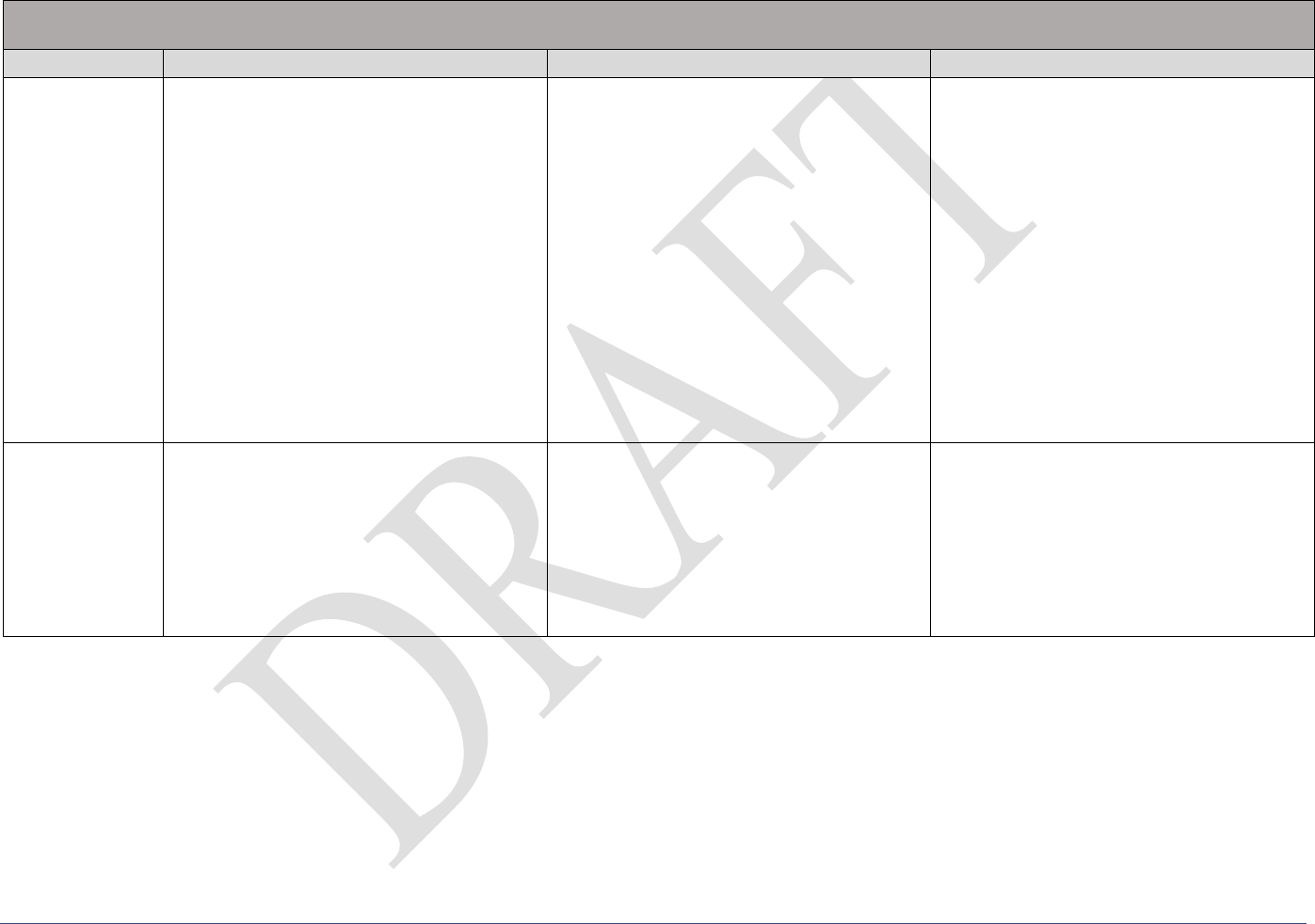
Grade 7 Mathematics Reporting Category Statements
Disclaimer: This document is informational and is not for instructional purposes. The knowledge and skills described do not encompass all that a student is expected to learn in this grade.
Reporting Category Statements – B.E.S.T. Mathematics Standards 38
Office of Assessment Florida Department of Education
Data Analysis and Probability
See Benchmarks for Excellent Student Thinking 7.DP.1.1, 7.DP.1.2, 7.DP.1.3, 7.DP.1.4, 7.DP.1.5, 7.DP.2.1, 7.DP.2.2, 7.DP.2.3, 7.DP.2.4
Indicator
Below Expectations
At/Near Expectations
Above Expectations
What These
Results Mean
For example, your learner may be able to:
• Identify outliers in a data set.
• Calculate mean, median, mode, and
range from a data set.
• Identify an appropriate circle graph for
a data set.
• Identify events that are certain or
uncertain to occur.
• Construct and display data using
proportional reasoning.
• Determine theoretical probabilities.
For example, your learner may be able to:
• Calculate mean, median, mode, range,
measure of center, and measures of
variability when given two graphical
representations of data.
• Construct, display, and interpret data in
up to four categories in a circle graph.
• Choose an appropriate graphical
representation for a data set.
• Interpret the likelihood of chance
events in the same form.
• Determine experimental probabilities.
For example, your learner may be able to:
• Determine the appropriate measure of
center or measure of variation to
summarize numerical data.
• Make comparisons, interpret results,
draw conclusions, and make
predictions regarding two numerical or
graphical sets of data.
• Construct, display, and interpret data in
up to six categories in a circle graph.
• Choose, create, and justify appropriate
graphical representations (for example:
stem-and-leaf plots and line plots).
• Compare experimental and theoretical
probabilities.
Next Steps
For example, have your learner:
• Interpret weather reports using terms
such as likely or unlikely for chance of
precipitation.
• Collect data (e.g., family television
time or time on devices) and construct
representations of the data.
For example, have your learner:
• Collect data from dice rolls or flipping
a coin, determine a sample space, and
create a representation of the data set.
• Use statistics from real-world settings
(e.g., money or sports) to interpret
what the data mean in terms of events
being likely or unlikely to occur.
For example, have your learner:
• Use statistics from real-world settings
(e.g., money or sports) to make
predictions.
• Interpret weather reports to summarize
the variation in temperature throughout
the day.
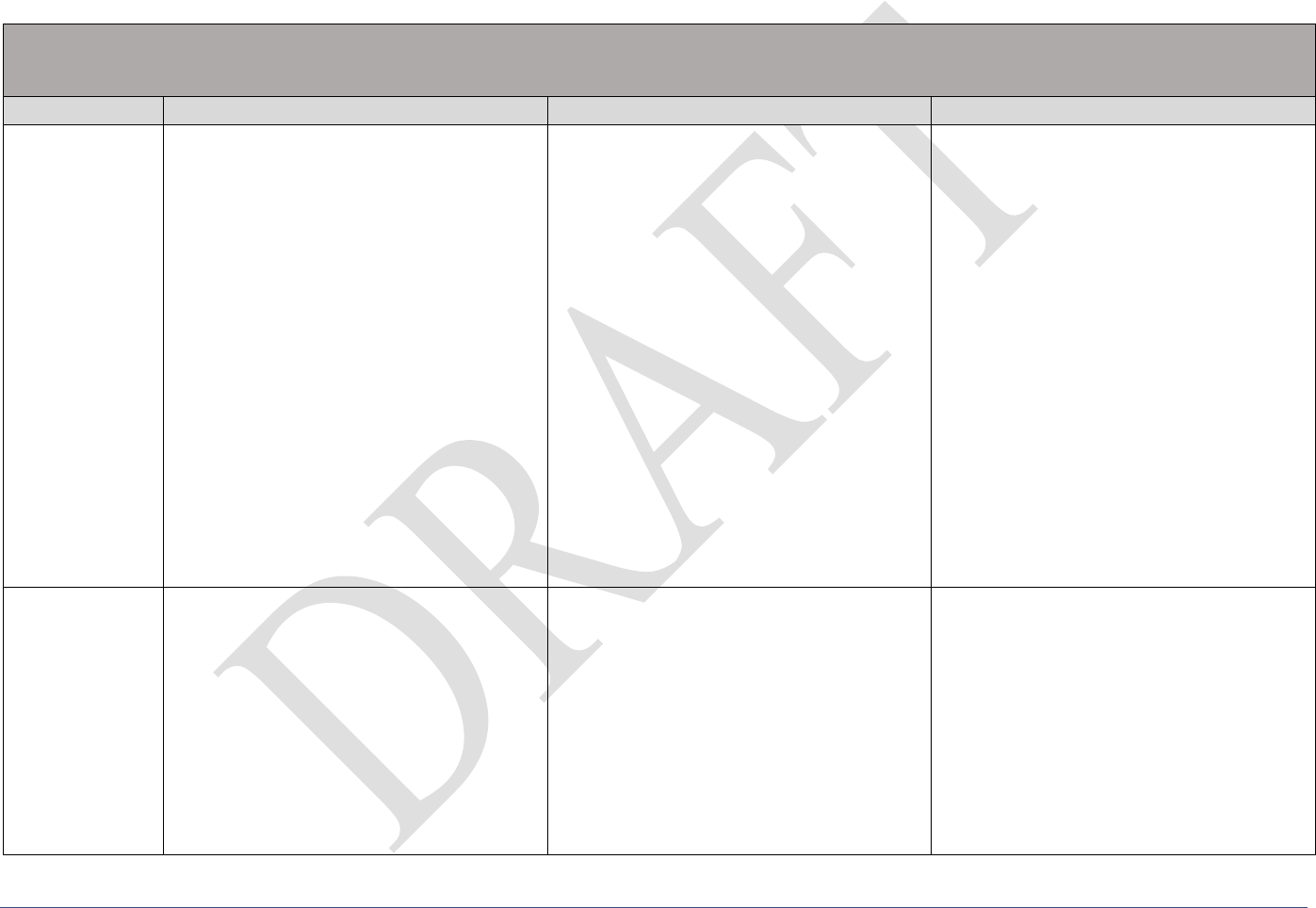
Grade 8 Mathematics Reporting Category Statements
Disclaimer: This document is informational and is not for instructional purposes. The knowledge and skills described do not encompass all that a student is expected to learn in this grade.
Reporting Category Statements – B.E.S.T. Mathematics Standards 39
Office of Assessment Florida Department of Education
Grade 8 Mathematics Reporting Category Statements
Number Sense and Operations and Probability
See Benchmarks for Excellent Student Thinking 8.NSO.1.1, 8.NSO.1.2, 8.NSO.1.3, 8.NSO.1.4, 8.NSO.1.5, 8.NSO.1.6, 8.NSO.1.7, 8.DP.2.1, 8.DP.2.3
(including 8.DP.2.2)
Indicator
Below Expectations
At/Near Expectations
Above Expectations
What These
Results Mean
For example, your learner may be able to:
• Identify numbers as rational or
irrational.
• Apply one of the Laws of Exponents to
identify equivalent numerical
expressions with integer exponents.
• Determine which number is larger
when given two numbers in scientific
notation.
• Solve multi-step mathematical
problems with up to three steps
involving the order of operations.
• Solve real-world problems involving
probabilities of single experiments.
For example, your learner may be able to:
• Define irrational numbers and locate
approximate values of irrational
numbers on a number line.
• Plot, order, and compare rational and
irrational numbers.
• Evaluate numerical expressions and
identify equivalent expressions using
the Laws of Exponents with integer
exponents.
• Express numbers in scientific notation
and approximate very large quantities.
• Solve multi-step real-world problems
with up to five steps involving the
order of operations.
• Solve real-world problems involving
probabilities of single or repeated
experiments and make predictions
based on theoretical probability.
For example, your learner may be able to:
• Explain why an approximate value of a
numerical expression on a number line
is reasonable.
• Generate equivalent numerical
expressions when applying the Laws of
Exponents.
• Express and apply operations with
numbers in scientific notation and
approximate very large and very small
quantities.
• Solve multi-step real-world problems
with up to six steps involving the order
of operations and justify each step.
• Analyze an error in a repeated
experiment.
• Analyze the theoretical probability of
an event related to a repeated
experiment.
Next Steps
For example, have your learner:
• Practice placing rational numbers on a
number line.
• Use scientific notation to discuss
topics, such as the distance from
planets and stars, the size of
microorganisms, and global
populations.
• Practice determining theoretical
probabilities by using different
scenarios, such as finding the
For example, have your learner:
• Convert rational numbers to the same
form and order the numbers on a
number line.
• Review correct and incorrect multi-step
numerical expressions that are already
solved and write out the steps taken to
find the solution.
For example, have your learner:
• Create notecards with numbers in
scientific notation, randomly choose
two cards, and use all four operations
with the chosen numbers.
• Explore real-world contexts involving
radical numbers such as calculating the
depreciation of a car’s value.
• Find probabilities of an event, such as
the outcome of a sporting event or a
change in weather. Determine whether
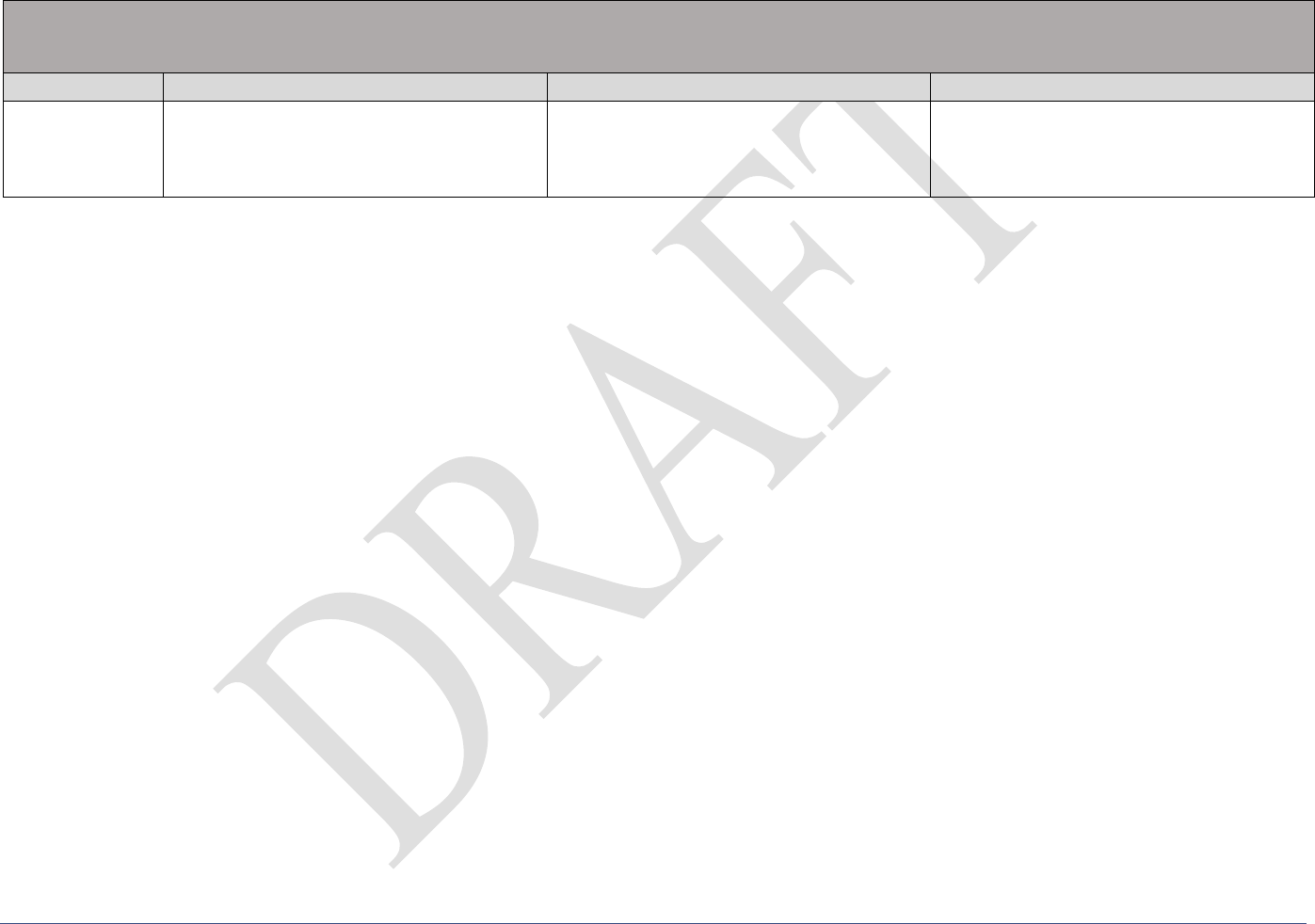
Grade 8 Mathematics Reporting Category Statements
Disclaimer: This document is informational and is not for instructional purposes. The knowledge and skills described do not encompass all that a student is expected to learn in this grade.
Reporting Category Statements – B.E.S.T. Mathematics Standards 40
Office of Assessment Florida Department of Education
Number Sense and Operations and Probability
See Benchmarks for Excellent Student Thinking 8.NSO.1.1, 8.NSO.1.2, 8.NSO.1.3, 8.NSO.1.4, 8.NSO.1.5, 8.NSO.1.6, 8.NSO.1.7, 8.DP.2.1, 8.DP.2.3
(including 8.DP.2.2)
Indicator
Below Expectations
At/Near Expectations
Above Expectations
theoretical probability of selecting a
gray shirt and a blue pair of socks from
a basket.
the outcomes could have been
predicted from a theoretical probability
and analyze the accuracy of the
prediction.

Grade 8 Mathematics Reporting Category Statements
Disclaimer: This document is informational and is not for instructional purposes. The knowledge and skills described do not encompass all that a student is expected to learn in this grade.
Reporting Category Statements – B.E.S.T. Mathematics Standards 41
Office of Assessment Florida Department of Education
Algebraic Reasoning
See Benchmarks for Excellent Student Thinking 8.AR.1.1, 8.AR.1.2, 8.AR.1.3, 8.AR.2.1, 8.AR.2.2, 8.AR.2.3, 8.AR.4.1, 8.AR.4.2, 8.AR.4.3
Indicator
Below Expectations
At/Near Expectations
Above Expectations
What These
Results Mean
For example, your learner may be able to:
• Apply the Laws of Exponents when
identifying equivalent algebraic
expressions using one Law of
Exponents.
• Apply properties of operations to
multiply two linear expressions with
integer coefficients.
• Solve multi-step linear equations with
variables on one side.
• Recognize that a solution to a system
of equations is an ordered pair.
• Identify the solution when given a
graph of two lines.
For example, your learner may be able to:
• Apply the Laws of Exponents to
identify equivalent algebraic
expressions.
• Apply properties of operations to
multiply two linear expressions with
rational coefficients.
• Solve multi-step linear equations in
one variable that generate one solution.
• Determine the ordered pair that
satisfies the solution to a system of
linear equations.
• Rewrite an algebraic expression as the
product of a monomial and the sum of
two algebraic expressions.
For example, your learner may be able to:
• Provide justification for applying the
Laws of Exponents to generate
equivalent algebraic expressions.
• Solve multi-step linear equations that
generate one solution, no solution, or
infinitely many solutions and interpret
the solution in context.
• Solve two-step linear inequalities and
graph solutions of them.
• Solve a system of equations from a set
of possible solutions.
• Determine from a graph whether there
is no solution or infinitely many
solutions to a system.
Next Steps
For example, have your learner:
• Graph lines in slope-intercept form (y =
mx + b) by charting the constant rate of
change over time, such as earnings per
hour.
• Graph inequalities by determining what
numbers would make a statement true
and placing it on the number line (e.g.,
x > 6. What numbers make this true?).
For example, have your learner:
• Make flashcards for the exponent rules.
Use the flashcards for fluency and
solving problems.
• Solve systems of equations where two
lines intersect is a solution, no lines
intersect is no solution, and if the lines
are the same there are infinite
solutions.
• Practice real-world two-step
inequalities, such as determining how
many snacks can be bought after
purchasing a movie ticket with a
limited amount of money to spend.
For example, have your learner:
• Find graphs with intersecting lines to
interpret the meaning of the
intersection in context of the graph,
such as line graphs that display
changes in population demographics,
tv viewership, or online platform
preferences over time.
• Explore scenarios when a system of
equations would be beneficial, such as
determining the best cell phone plan.
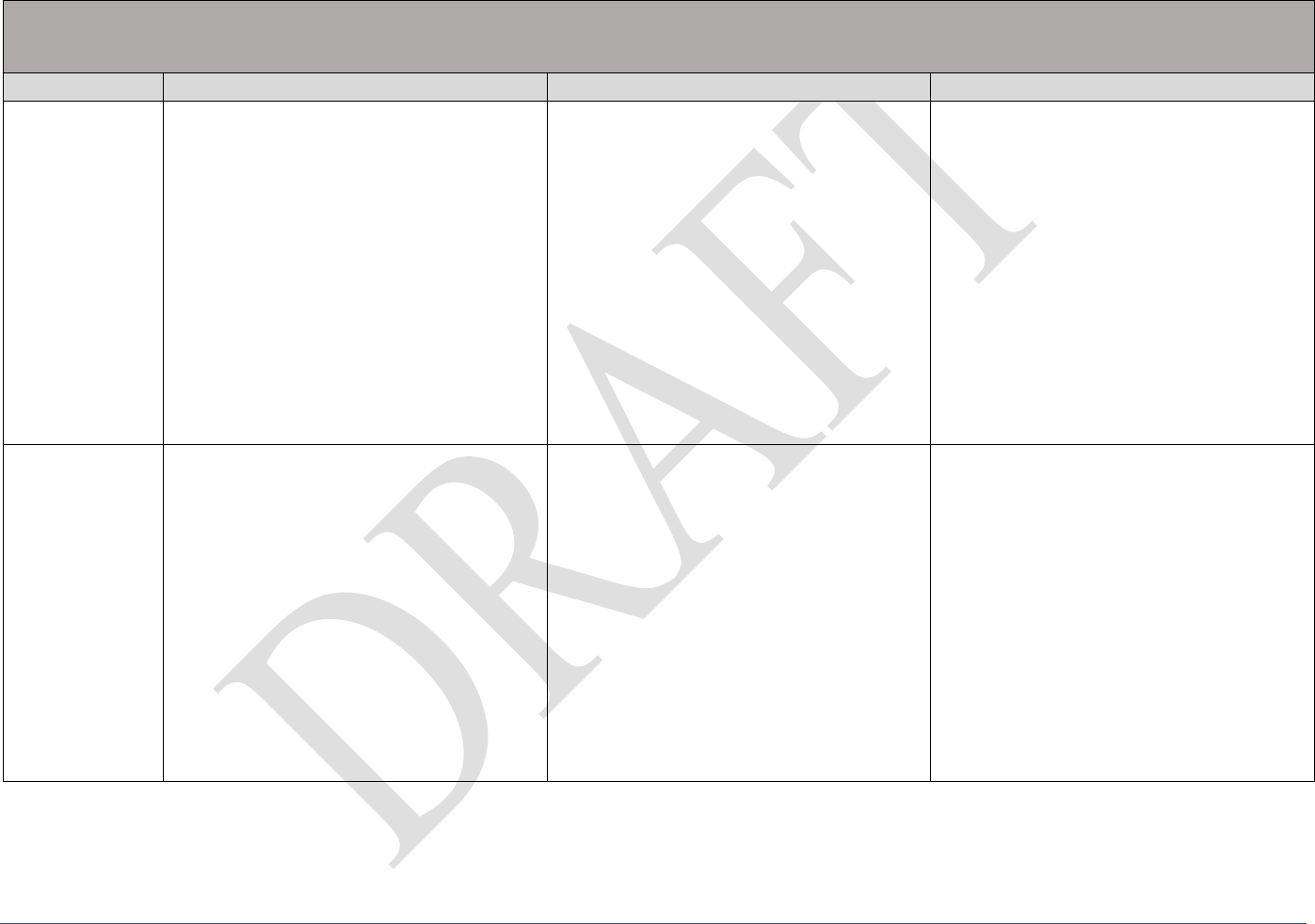
Grade 8 Mathematics Reporting Category Statements
Disclaimer: This document is informational and is not for instructional purposes. The knowledge and skills described do not encompass all that a student is expected to learn in this grade.
Reporting Category Statements – B.E.S.T. Mathematics Standards 42
Office of Assessment Florida Department of Education
Linear Relationships, Data Analysis, and Functions
See Benchmarks for Excellent Student Thinking 8.F.1.1, 8.F.1.2 (including 8.AR.3.1), 8.F.1.3, 8.AR.3.2, 8.AR.3.3, 8.AR.3.4, 8.AR.3.5, 8.DP.1.1,
8.DP.1.2, 8.DP.1.3
Indicator
Below Expectations
At/Near Expectations
Above Expectations
What These
Results Mean
For example, your learner may be able to:
• Determine from a graph whether a
relationship is linear.
• Determine the slope and y-intercept
from slope-intercept form.
• Identify the graph that represents a
given linear equation in slope-intercept
form.
• Identify a scatter plot, the type of
association, and outliers when given
data.
For example, your learner may be able to:
• Determine whether a function is linear
from an equation.
• Graph linear equations from a table or
an equation.
• Determine the slope from a written
description, table, graph, or equation in
slope-intercept form.
• Identify the domain and range of the
relation as a list of numbers.
• Construct a scatter plot or line graph,
identify the association, and identify
outliers.
• Identify a line of fit on a scatter plot.
For example, your learner may be able to:
• Determine whether a relationship is a
function from any representation.
• Determine dependent and independent
variables.
• Determine the slope and write
equations in slope-intercept form.
• Graph linear equations to satisfy a real-
world context.
• Construct a scatter plot or line graph
while describing patterns of association
and identifying outliers.
• Justify a line of fit on a scatter plot.
Next Steps
For example, have your learner:
• Track data, such as hours per day
engaging in a favorite hobby, for one
or two weeks, use the data to create a
table [Day Number (x) and Amount of
Time (y)], graph the results, and
determine whether the data represents a
linear relationship.
• Practice using vocabulary terms related
to graphing (for example, slope, y-
intercept, linear).
• Find data to create scatter plots.
For example, have your learner:
• Review scatter plots from online or
print sources, determine the
association, and identify whether the
scatter plot is linear or nonlinear.
• Generate output tables by practicing
basic functions (addition, subtraction,
multiplication, and division).
• Track data, such as hours per day
engaging in a favorite hobby, for one
or two weeks, use the data to create a
table [Day Number (x) and Amount of
Time (y)], and develop a scatter plot.
For example, have your learner:
• Explore the relationship between
dependent and independent variables
and patterns found in real-world
contexts for linear and nonlinear data
(e.g., how water affects plant growth or
how diet affects weight).
• Track data for one or two weeks (e.g.,
hours per day engaging in a favorite
hobby), use the data to create a table
[Day Number (x) and Amount of Time
(y)], graph the results, and write the
equation of the line in slope-intercept
form.
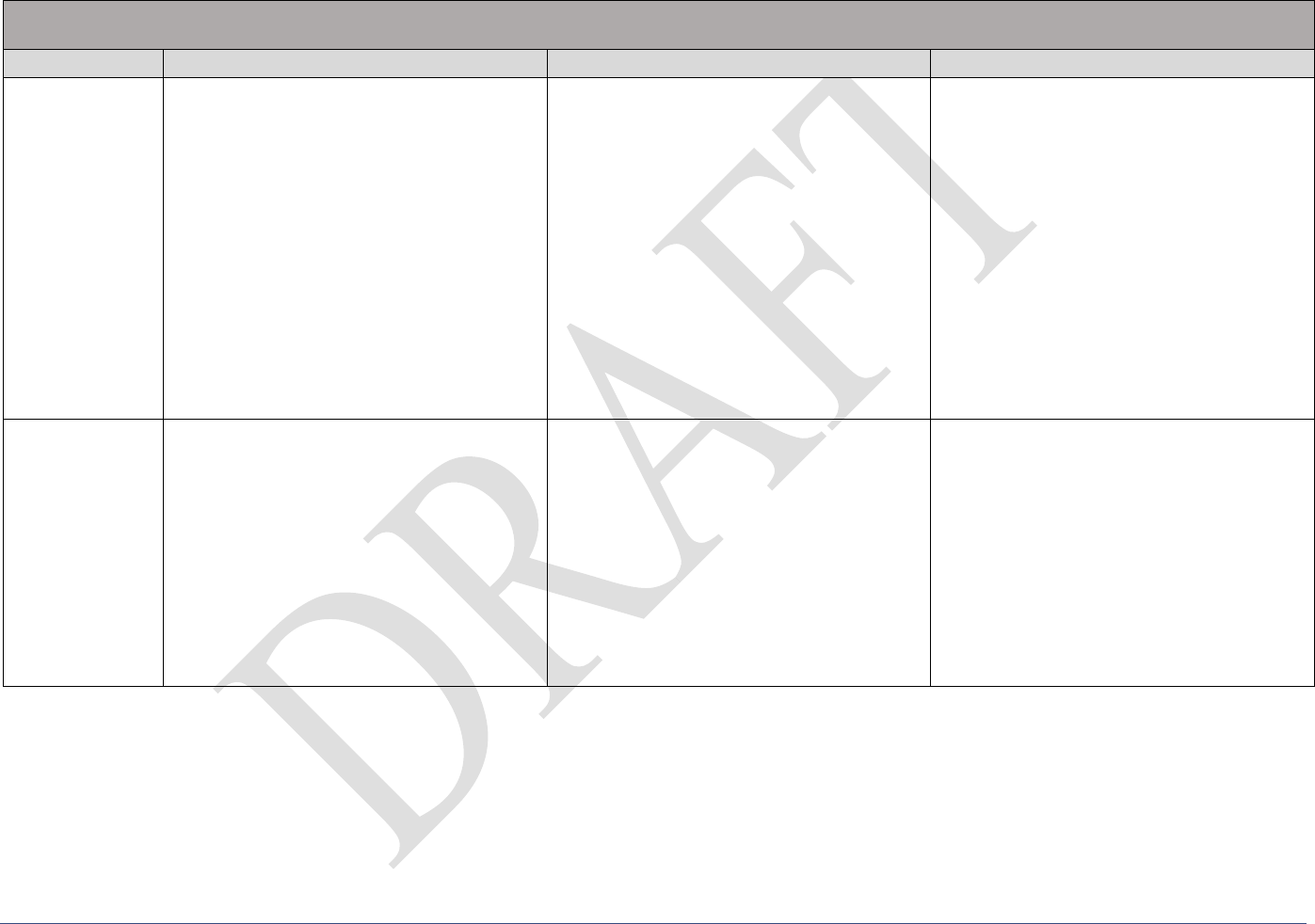
Grade 8 Mathematics Reporting Category Statements
Disclaimer: This document is informational and is not for instructional purposes. The knowledge and skills described do not encompass all that a student is expected to learn in this grade.
Reporting Category Statements – B.E.S.T. Mathematics Standards 43
Office of Assessment Florida Department of Education
Geometric Reasoning
See Benchmarks for Excellent Student Thinking 8.GR.1.1, 8.GR.1.2, 8.GR.1.3, 8.GR.1.4, 8.GR.1.5, 8.GR.1.6, 8.GR.2.1, 8.GR.2.2, 8.GR.2.3, 8.GR.2.4
Indicator
Below Expectations
At/Near Expectations
Above Expectations
What These
Results Mean
For example, your learner may be able to:
• Apply the Pythagorean Theorem to
find the hypotenuse of a right triangle
resulting in a whole number.
• Use the Pythagorean Theorem to find
the missing side length of a right
triangle and distance between two
points on a coordinate plane.
• Define angle relationships.
• Generate or identify a translation.
For example, your learner may be able to:
• Apply the Pythagorean Theorem to
solve problems involving unknown
side lengths in right triangles.
• Apply the Pythagorean Theorem to
find unknown side lengths and distance
between two points on a coordinate
plane.
• Solve problems involving angle
relationships and their numerical angle
measures.
• Develop formulas for the interior
angles of regular polygons.
• Identify transformations.
For example, your learner may be able to:
• Apply the Pythagorean Theorem to
mathematical and real-world problems.
• Solve problems involving multiple
relationships between angles.
• Develop and use formulas for the sum
of interior angles of regular polygons.
• Identify, analyze, and describe a
transformation that represents a
relationship.
Next Steps
For example, have your learner:
• Practice real-world problems involving
the Pythagorean theorem (e.g.,
television measurements, computer
screens, or cell phones).
• Create flashcards to practice angle
terminology and explore angle
measurements in real-life settings.
• Explore items that can reflect an image
(e.g., looking in a mirror or a camera
on a phone).
For example, have your learner:
• Use a random number generator to
choose three numbers and determine
whether the three numbers can form a
triangle.
• Practice real-world problems involving
the Pythagorean Theorem (e.g.,
television measurements, computer
screens, or cell phones).
• Explore rotation by determining how
many degrees an item rotates.
For example, have your learner:
• Explore relationships between angles
in the real-world (e.g., in sports,
clothing design, or construction).
• Explore transformations of objects
(e.g., in art, landscaping, or interior
design).
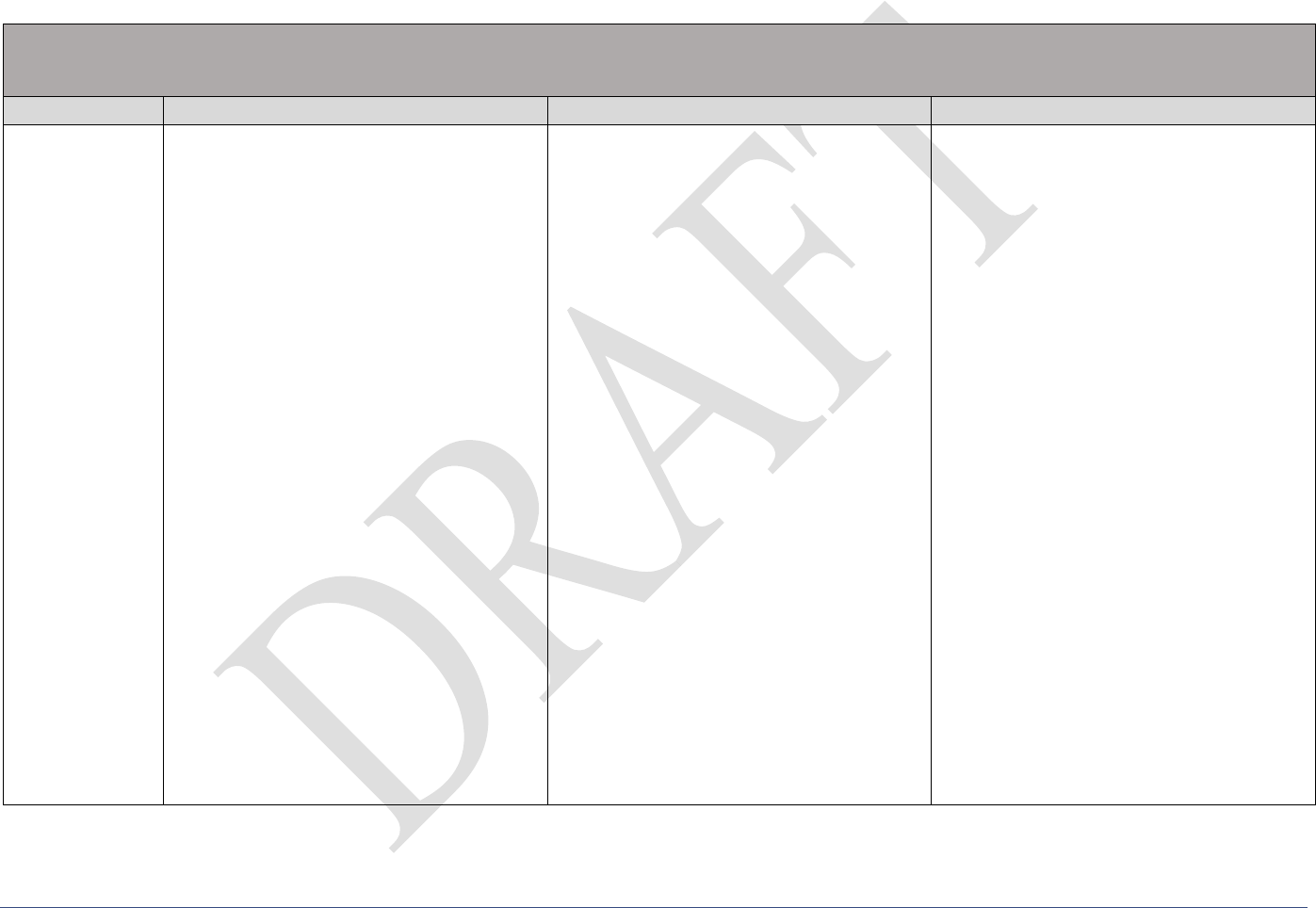
Algebra 1 Reporting Category Statements
Disclaimer: This document is informational and is not for instructional purposes. The knowledge and skills described do not encompass all that a student is expected to learn in this grade.
Reporting Category Statements – B.E.S.T. Mathematics Standards 44
Office of Assessment Florida Department of Education
Algebra 1 Reporting Category Statements
Expressions, Functions, and Data Analysis
See Benchmarks for Excellent Student Thinking 912.NSO.1.1, 912.NSO.1.2, 912.NSO.1.4, 912.AR.1.1, 912.AR.1.2, 912.F.1.1, 912.F.1.2, 912.F.1.3,
912.F.1.6, 912.F.1.8 (including 912.FL.3.4), 912.F.2.1, 912.DP.1.2 (including 912.DP.1.1), 912.DP.1.4, 912.DP.3.1
Indicator
Below Expectations
At/Near Expectations
Above Expectations
What These
Results Mean
For example, your learner may be able to:
• Identify equivalent numerical or
algebraic expressions involving
rational exponents using a single Law
of Exponents.
• Add or subtract radicals with the same
radicand.
• Identify parts of an equation or
expression in a mathematical context.
• Identify and classify function types
when given the graph of a function.
• Calculate the average rate of change
over a specified interval when given a
table.
• Complete two-way frequency tables.
• Compare graphs of linear and
nonlinear functions.
For example, your learner may be able to:
• Apply one or more of the Laws of
Exponents to evaluate numerical
expressions, as well as generate
equivalent numerical and algebraic
expressions involving rational
exponents.
• Perform one or more of the following
operations with radicals: add, subtract,
or multiply.
• Rearrange formulas that require two
steps to form a new formula.
• Identify the graph of a function after a
transformation.
• Evaluate a function when given
specific input/output values in a
mathematical context.
• Calculate the average rate of change
over a specified interval from the
function when represented graphically
or in an input/output table.
• Find joint and marginal frequencies
from a two-way frequency table.
• Identify and classify function types
when given the equation of a function.
• Compare equations of linear and
nonlinear functions.
For example, your learner may be able to:
• Apply more than one of the Laws of
Exponents to evaluate numerical
expressions and generate equivalent
numerical expressions involving
rational exponents.
• Add, subtract, multiply, and divide
numerical radicals.
• Identify the function type and compare
key features of linear and nonlinear
functions when represented in multiple
forms.
• Interpret why a function type
corresponds to its real-world context,
as well as describe the effect of
transformations on a function.
• Evaluate and interpret the output of a
function in the context of a real-world
situation.
• Calculate and interpret the average rate
of change in a real-world situation.
• Understand that a function growing
exponentially will exceed the growth
of a function that grows linearly or
quadratically.
• Select an appropriate method to
represent a given data set, whether it is
univariate or bivariate.

Algebra 1 Mathematics Reporting Category Statements
Disclaimer: This document is informational and is not for instructional purposes. The knowledge and skills described do not encompass all that a student is expected to learn in this grade.
Reporting Category Statements – B.E.S.T. Mathematics Standards 45
Office of Assessment Florida Department of Education
Expressions, Functions, and Data Analysis
See Benchmarks for Excellent Student Thinking 912.NSO.1.1, 912.NSO.1.2, 912.NSO.1.4, 912.AR.1.1, 912.AR.1.2, 912.F.1.1, 912.F.1.2, 912.F.1.3,
912.F.1.6, 912.F.1.8 (including 912.FL.3.4), 912.F.2.1, 912.DP.1.2 (including 912.DP.1.1), 912.DP.1.4, 912.DP.3.1
Indicator
Below Expectations
At/Near Expectations
Above Expectations
Next Steps
For example, have your learner:
• Practice using the Laws of Exponents
to generate equivalent expressions.
• Identify and classify function types
when given an equation or an
input/output table. Evaluate functions
for a given input value.
• Identify and interpret factors, terms,
constants, coefficients, and variables in
real-world problems.
• Explore problems involving joint and
marginal frequencies from a two-way
frequency table.
For example, have your learner:
• Generate fluency using multiple Laws
of Exponents and operations with
radicals.
• Rearrange formulas that involve
multiple steps to create a new formula.
• Identify and classify function types
represented in multiple forms (graphs,
equations, tables, and written
descriptions). Interpret the output of a
function in a real-world context.
• Calculate the average rate of change in
a real-world context.
• Write explanations and justifications
when solving problems involving
topics such as transformations on a
graph; relationships between linear,
quadratic, and exponential functions;
or data analysis.
For example, have your learner:
• Analyze errors in worked examples
and make appropriate corrections.
• Compare key features of functions
represented in multiple forms (graphs,
equations, tables, and written
descriptions). Interpret key features in
a real-world context.
• Compare and interpret factors, terms,
constants, coefficients, and variables in
equivalent expressions and equations in
a real-world context.
• Use linear and exponential functions to
analyze real-world financial situations
such as loans, savings accounts, and
investments.
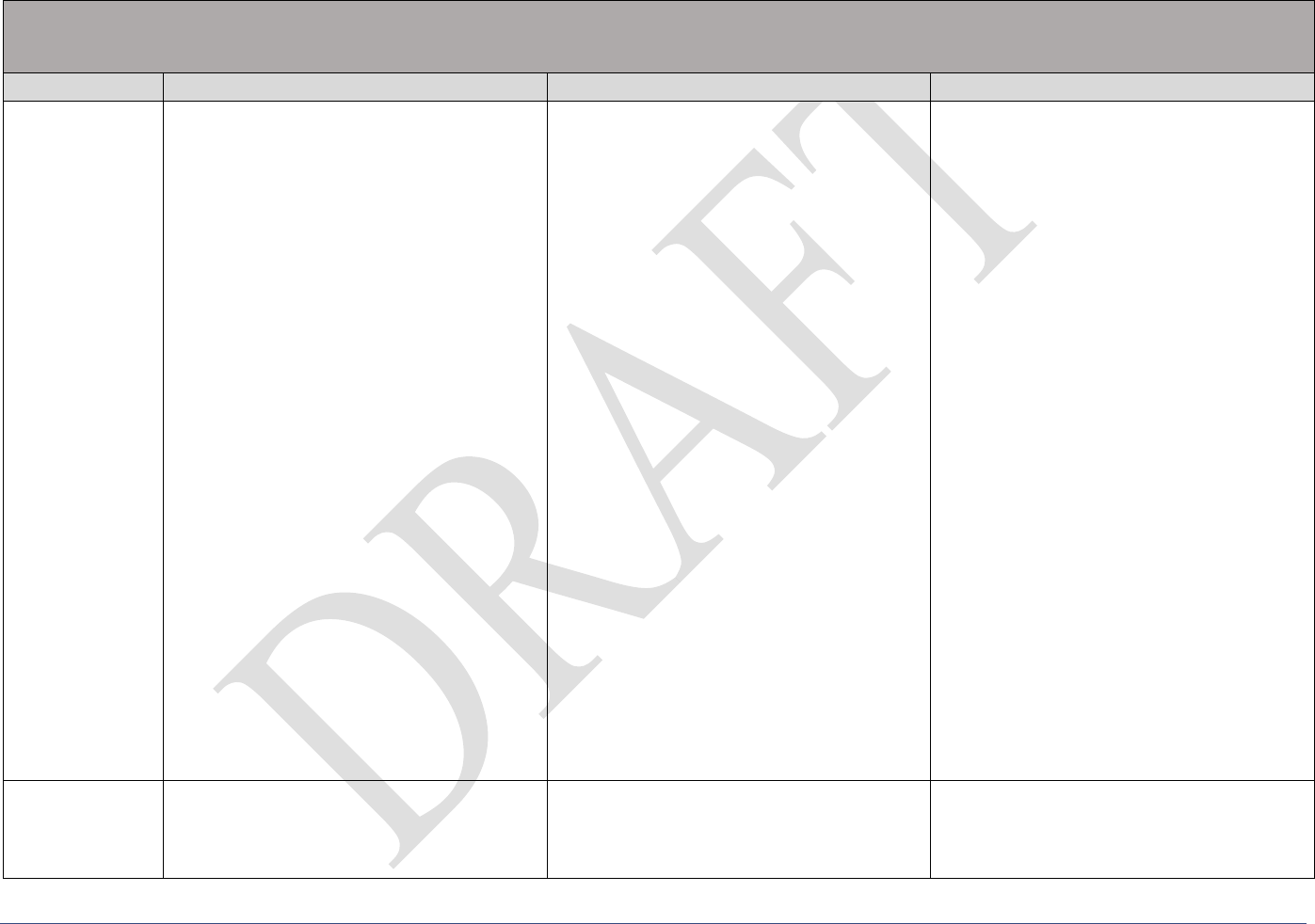
Algebra 1 Mathematics Reporting Category Statements
Disclaimer: This document is informational and is not for instructional purposes. The knowledge and skills described do not encompass all that a student is expected to learn in this grade.
Reporting Category Statements – B.E.S.T. Mathematics Standards 46
Office of Assessment Florida Department of Education
Linear Relationships
See Benchmarks for Excellent Student Thinking 912.AR.2.1, 912.AR.2.2, 912.AR.2.3, 912.AR.2.4, 912.AR.2.5, 912.AR.2.6, 912.AR.2.7, 912.AR.2.8,
912.AR.9.1, 912.AR.9.4, 912.AR.9.6, 912.F.1.5, 912.DP.2.4, 912.DP.2.6 (including 912.DP.1.3)
Indicator
Below Expectations
At/Near Expectations
Above Expectations
What These
Results Mean
For example, your learner may be able to:
• Solve one-variable multistep linear
equations represented in a real-world
context and one-variable multi-step
linear inequalities represented in a
mathematical context.
• Identify the solutions and graphs of
mathematical problems that are
modeled with linear functions.
• Identify from a graph or a set of
equations when two lines are parallel
or perpendicular.
• Compare key features between two
graphed linear functions.
• Identify the graph that represents the
solution set of a two-variable
inequality or a system of two-variable
inequalities.
• Solve systems of two-variable
equations when given in a
mathematical context.
For example, your learner may be able to:
• Identify and solve one variable, multi-
step linear equations in a real-world
context.
• Write and solve one variable, multistep
linear inequalities and represent their
solutions on a number line.
• Write a linear, two-variable equation in
a mathematical context when given a
graph, a written description, or a table
of values.
• Identify the graph of a linear function
and key features such as domain and
range when given an equation in slope-
intercept or point-slope form.
• Write equations of lines parallel and
perpendicular to a given line through a
given point when represented on a
graph.
• Compare key features of linear
functions when represented graphically
or algebraically.
• Write, graph, and identify the solution
set to a two-variable linear inequality.
• Identify and solve systems of two-
variable equations and inequalities
when given in a mathematical or real-
world context.
For example, your learner may be able to:
• Write, solve, and interpret solutions of
linear equations, linear inequalities,
systems of linear equations, and
systems of linear inequalities.
• Analyze and correct errors in linear
equations and inequalities.
• Analyze solutions as viable or not
viable in systems of equations and
inequalities.
• Fit a linear function to data and use it
to solve real-world problems and make
predictions in terms of the context of
the data.
Next Steps
For example, have your learner:
• Write and solve one-variable multi-step
linear equations and inequalities from
real-world contexts.
For example, have your learner:
• Extend knowledge of linear
relationships to problems represented
in real-world contexts.
For example, have your learner:
• Analyze errors in worked examples
and make appropriate corrections.
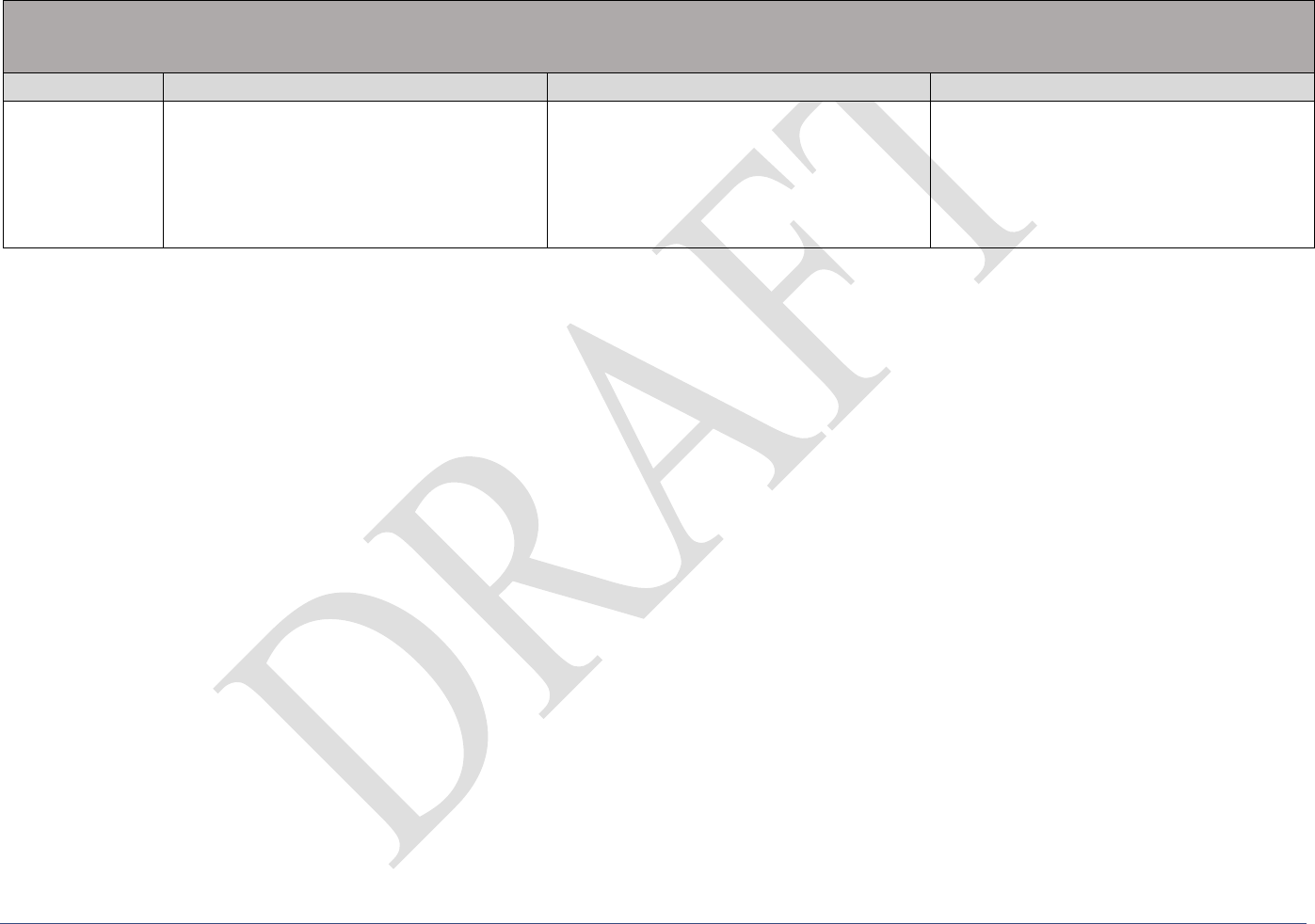
Algebra 1 Mathematics Reporting Category Statements
Disclaimer: This document is informational and is not for instructional purposes. The knowledge and skills described do not encompass all that a student is expected to learn in this grade.
Reporting Category Statements – B.E.S.T. Mathematics Standards 47
Office of Assessment Florida Department of Education
Linear Relationships
See Benchmarks for Excellent Student Thinking 912.AR.2.1, 912.AR.2.2, 912.AR.2.3, 912.AR.2.4, 912.AR.2.5, 912.AR.2.6, 912.AR.2.7, 912.AR.2.8,
912.AR.9.1, 912.AR.9.4, 912.AR.9.6, 912.F.1.5, 912.DP.2.4, 912.DP.2.6 (including 912.DP.1.3)
Indicator
Below Expectations
At/Near Expectations
Above Expectations
• Write and graph a linear two-variable
equation to represent relationships
between quantities.
• Write and solve systems of two-
variable equations and inequalities.
• Interpret solutions and/or constraints to
write linear relationships.
• Analyze data with linear associations.
• Explore graphs of systems of nonlinear
equations and make comparisons to
systems of linear equations.
• Use learned knowledge and apply it to
situations in other fields (arts, science,
technology, etc.).
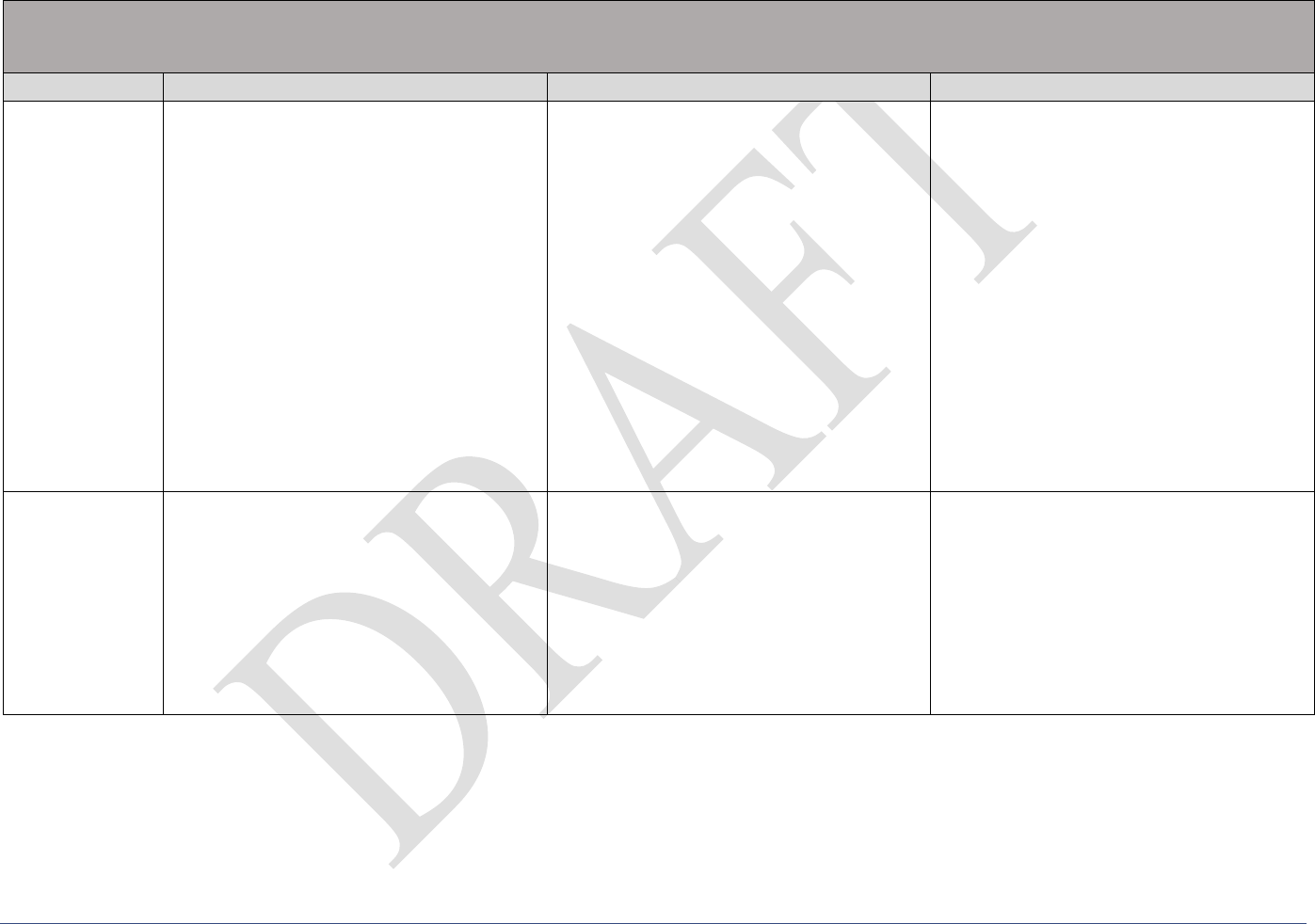
Algebra 1 Mathematics Reporting Category Statements
Disclaimer: This document is informational and is not for instructional purposes. The knowledge and skills described do not encompass all that a student is expected to learn in this grade.
Reporting Category Statements – B.E.S.T. Mathematics Standards 48
Office of Assessment Florida Department of Education
Nonlinear Relationships
See Benchmarks for Excellent Student Thinking 912.AR.1.3, 912.AR.1.4, 912.AR.1.7, 912.AR.3.1, 912.AR.3.4, 912.AR.3.5, 912.AR.3.6, 912.AR.3.7,
912.AR.3.8, 912.AR.4.1, 912.AR.4.3, 912.AR.5.3, 912.AR.5.4, 912.AR.5.6, 912.FL.3.2
Indicator
Below Expectations
At/Near Expectations
Above Expectations
What These
Results Mean
For example, your learner may be able to:
• Relate a quadratic function in vertex
form to its graph or table and identify
the intercepts, domain, range, and
vertex.
• Identify the solution(s) of a quadratic
equation from its graph.
• Identify the domain and range of an
exponential function given a graph and
classify the function as growth or
decay.
• Add and subtract binomial expressions
with integer coefficients.
• Factor a common monomial from a
polynomial.
• Solve simple quadratic equations.
For example, your learner may be able to:
• Add, subtract, and multiply expressions
with integer coefficients.
• Divide a binomial by a monomial.
• Factor expressions as a product of
linear binomial relationships.
• Solve and graph quadratic equations.
• Identify a quadratic function when
given intercepts of the function.
• Determine the domain, range, y-
intercept, constant rate of change, and
interval behavior given the graph of an
exponential, quadratic, or absolute-
value equation.
For example, your learner may be able to:
• Add, subtract, and multiply expressions
with rational coefficients.
• Divide a polynomial by a monomial.
• Factor any polynomial.
• Solve and write quadratic functions
when given key features within
mathematical and real-world contexts.
• Graph quadratic, exponential, and
absolute value functions when given a
table, equation, or written description.
Next Steps
For example, have your learner:
• Multiply and factor binomial and
trinomial expressions.
• Divide polynomials by monomials.
• Solve quadratic equations by factoring.
• Write nonlinear functions from given
key features or criteria.
• Determine key features of exponential,
quadratic, and absolute value functions.
For example, have your learner:
• Perform operations with polynomial
expressions with rational coefficients.
• Factor any polynomial.
• Write and solve quadratic and
absolute-value equations using
multiple strategies.
For example, have your learner:
• Analyze errors in worked examples
and make appropriate corrections.
• Compare the merits of two investments
involving simple and compound
interest.
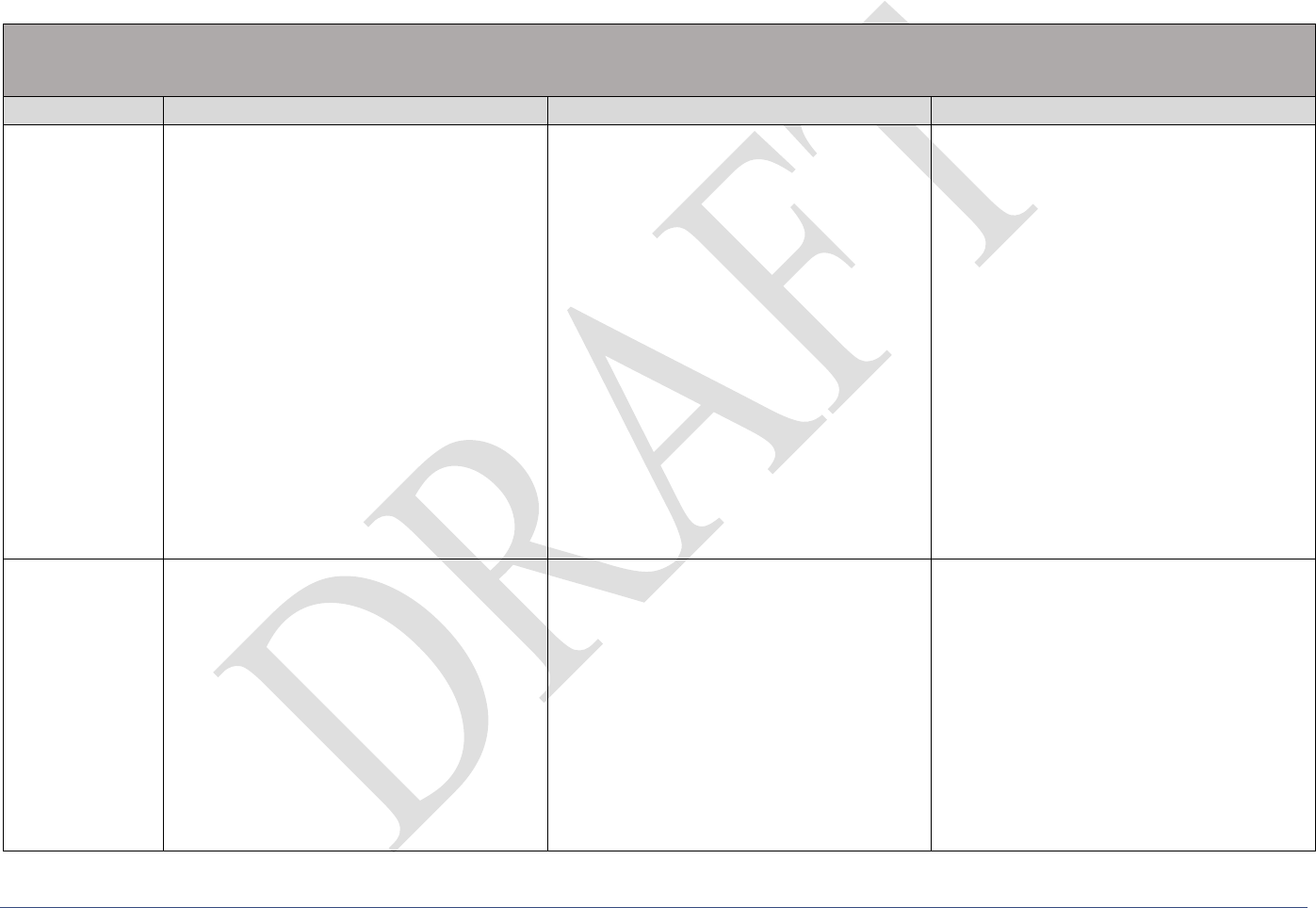
Geometry Reporting Category Statements
Disclaimer: This document is informational and is not for instructional purposes. The knowledge and skills described do not encompass all that a student is expected to learn in this grade.
Reporting Category Statements – B.E.S.T. Mathematics Standards 49
Office of Assessment Florida Department of Education
Geometry Reporting Category Statements
Logic, Relationships, and Theorems
See Benchmarks for Excellent Student Thinking 912.GR.1.1, 912.GR.1.2, 912.GR.1.3, 912.GR.1.4, 912.GR.1.5, 912.GR.6.1, 912.GR.6.2, 912.GR.6.3,
912.GR.6.4, 912.LT.4.3, 912.LT.4.10
Indicator
Below Expectations
At/Near Expectations
Above Expectations
What These
Results Mean
For example, your learner may be able to:
• Identify a missing statement or reason
when completing proofs about triangle
congruence and triangle similarity.
• Solve simple problems involving
numerical expressions regarding lines
and angles, triangles, parallelograms,
and trapezoids.
• Identify the hypothesis and conclusion
of a conditional statement.
For example, your learner may be able to:
• Identify up to two missing statements
and reasons when completing proofs
about lines and angles, triangle
congruence, triangle similarity,
parallelograms, and trapezoids.
• Solve multi-step problems with
algebraic and/or numerical expressions
set in mathematical contexts about
lines and angles, triangles,
parallelograms, trapezoids, angles
formed in circles, lengths of chords in
circles, areas of the sectors of circles,
and arc lengths.
• Identify the inverse and converse of a
conditional statement and write a
biconditional statement as two
conditional statements.
For example, your learner may be able to:
• Complete proofs about lines and
angles, triangle congruence, triangle
similarity, parallelograms, and
trapezoids.
• Solve real-world problems involving
algebraic expressions regarding lines
and angles, triangles, parallelograms,
trapezoids, angles formed in circles,
lengths of chords in circles, areas of the
sectors of circles, and arc lengths.
• Write the contrapositive of a
conditional statement and justify the
validity of arguments including using
counterexamples.
Next Steps
For example, have your learner:
• Complete proofs to show relationships
when given all statements and reasons.
• Use all triangle congruence or
similarity postulates or theorems.
• Solve multi-step algebraic and/or
numerical problems using lines, angles,
triangles, parallelograms, and
trapezoids using algebraic expressions
as measurements.
For example, have your learner:
• Practice completing proofs without all
steps represented leading to writing a
complete proof on their own.
• Solve real-world problems involving
lines, angles, triangles, parallelograms,
trapezoids, and circles.
• Judge the validity of arguments
including using counterexamples.
For example, have your learner:
• Analyze proofs to determine a potential
error and be able to justify that error
with a correct statement.
• Work toward creating equations or
expressions that represent relationships
involving arcs and related angles,
triangles or quadrilaterals inscribed in a
circle, and arc lengths and areas of
sectors of a circle.
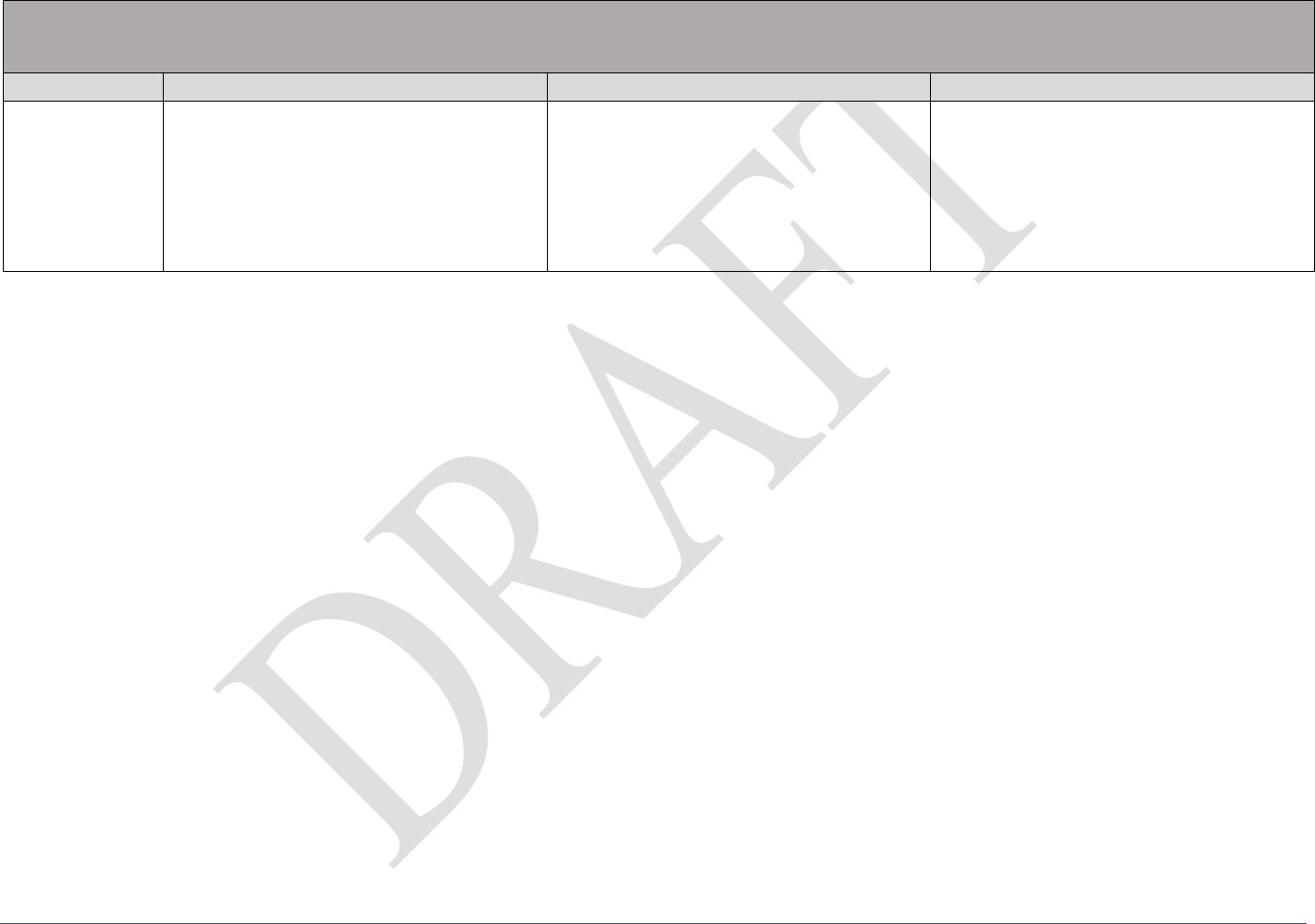
Geometry Reporting Category Statements
Disclaimer: This document is informational and is not for instructional purposes. The knowledge and skills described do not encompass all that a student is expected to learn in this grade.
Reporting Category Statements – B.E.S.T. Mathematics Standards 50
Office of Assessment Florida Department of Education
Logic, Relationships, and Theorems
See Benchmarks for Excellent Student Thinking 912.GR.1.1, 912.GR.1.2, 912.GR.1.3, 912.GR.1.4, 912.GR.1.5, 912.GR.6.1, 912.GR.6.2, 912.GR.6.3,
912.GR.6.4, 912.LT.4.3, 912.LT.4.10
Indicator
Below Expectations
At/Near Expectations
Above Expectations
• Identify and use counterexamples of a
statement in order to disprove an
invalid statement.
• Solve problems involving angles
formed in circles, lengths of chords in
circles, and areas of the sectors of
circles.
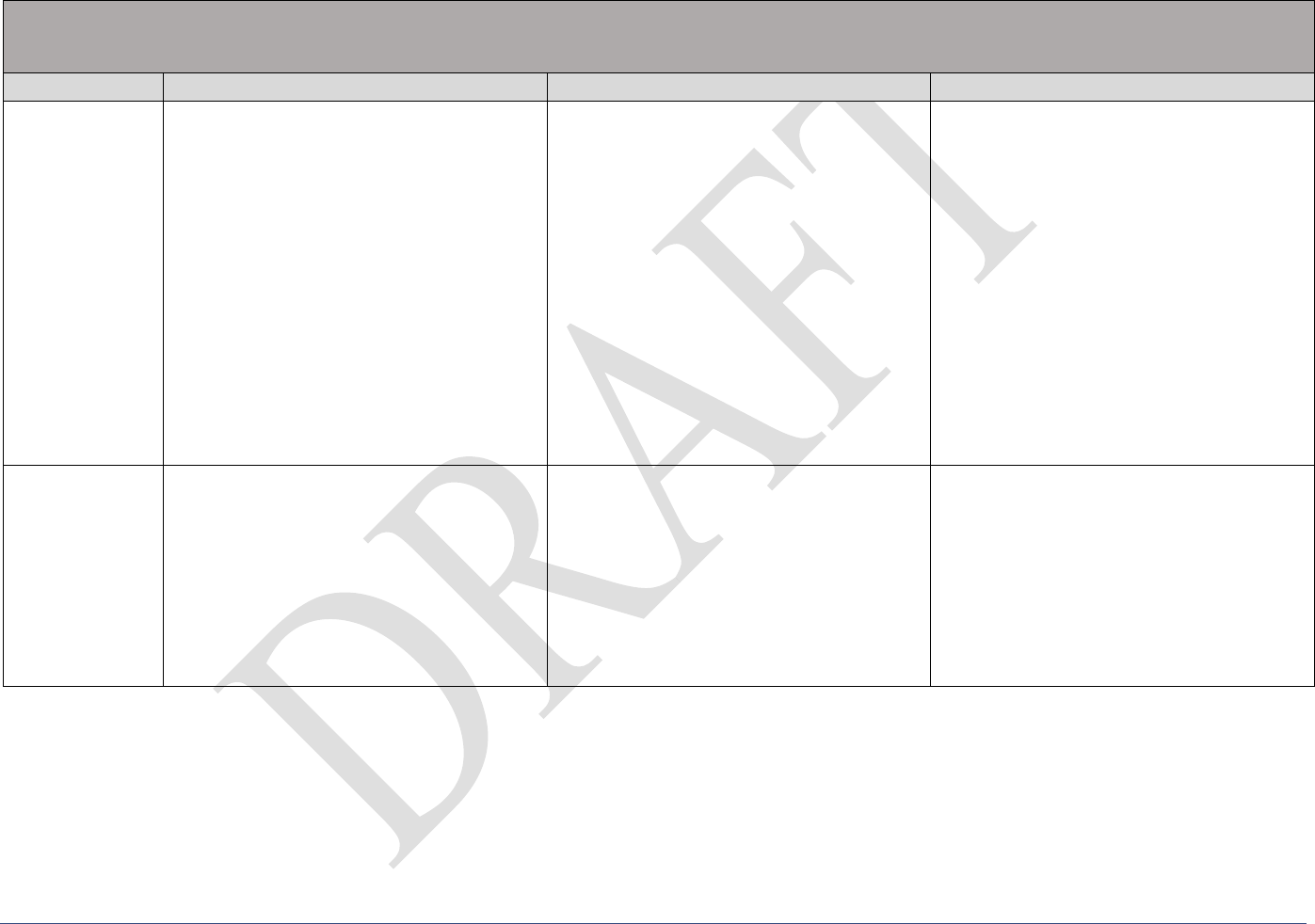
Geometry Reporting Category Statements
Disclaimer: This document is informational and is not for instructional purposes. The knowledge and skills described do not encompass all that a student is expected to learn in this grade.
Reporting Category Statements – B.E.S.T. Mathematics Standards 51
Office of Assessment Florida Department of Education
Congruence, Similarity, and Constructions
See Benchmarks for Excellent Student Thinking 912.GR.1.6, 912.GR.2.1, 912.GR.2.2, 912.GR.2.3 (including 912.GR.2.6 and 912.GR.2.8), 912.GR.2.5,
912.GR.4.3, 912.GR.5.1, 912.GR.5.2, 912.GR.5.3
Indicator
Below Expectations
At/Near Expectations
Above Expectations
What These
Results Mean
For example, your learner may be able to:
• Solve congruence and similarity
problems that include one algebraic
expression set in a mathematical
context.
• Determine the dilation scale factor
given the area of corresponding faces
or the surface area of a solid.
• Identify, describe, and represent
translations and reflections over axes
algebraically.
• Identify the result of a given geometric
construction.
For example, your learner may be able to:
• Solve congruence and similarity
problems that include algebraic
expressions set in a mathematical
context.
• Determine the effect of a dilation on
the area of two-dimensional figures
and the surface area of three-
dimensional figures.
• Identify and describe missing steps of a
given geometric construction.
• Draw transformed figures on a
coordinate plane when given up to
three transformations (translations,
reflections, and rotations).
For example, your learner may be able to:
• Solve congruence and similarity
problems that include algebraic
expressions set in a real-world context.
• Determine the effect of a dilation on
the volume of three-dimensional
figures.
• Perform and describe a sequence of
transformations (translations,
reflections, rotations, and dilations).
• Complete geometric constructions.
• Analyze errors in worked examples
and make appropriate corrections.
Next Steps
For example, have your learner:
• Solve multi-step congruence and
similarity problems that include
algebraic expressions.
• Identify and perform all types of
transformations.
• Describe transformations with an
algebraic rule.
• Perform geometric constructions.
For example, have your learner:
• Solve real-world congruence and
similarity problems.
• Determine how dilations affect the
volume of three-dimensional figures.
• Identify and perform a sequence of
transformations, including when a
figure is reflected over a line other than
the axes.
For example, have your learner:
• Apply mathematical understandings to
real-world scenarios and analyze which
approaches are best for solving
problems.
• Apply learned knowledge and skills to
situations in other fields (arts, science,
technology, etc.).

Geometry Reporting Category Statements
Disclaimer: This document is informational and is not for instructional purposes. The knowledge and skills described do not encompass all that a student is expected to learn in this grade.
Reporting Category Statements – B.E.S.T. Mathematics Standards 52
Office of Assessment Florida Department of Education
Measurement and Coordinate Geometry
See Benchmarks for Excellent Student Thinking 912.GR.3.2, 912.GR.3.3 (including 912.GR.3.1), 912.GR.3.4, 912.GR.4.1, 912.GR.4.2, 912.GR.4.4,
912.GR.4.5, 912.GR.4.6, 912.GR.7.2, 912.GR.7.3, 912.T.1.2 (including MA.912.T.1.1)
Indicator
Below Expectations
At/Near Expectations
Above Expectations
What These
Results Mean
For example, your learner may be able to:
• Use coordinate geometry to:
• Classify triangles and right
quadrilaterals in mathematical
contexts.
• Solve mathematical problems
involving lines, triangles, and
midpoints of segments and slope.
• Identify two-dimensional cross
sections of right cylinders and right
rectangular prisms.
• Identify the equation of a circle given
the center and radius.
• Solve mathematical problems
involving the volume of right
cylinders, right pyramids, and right
prisms and the surface area of right
pyramids and right prisms.
• Use trigonometric ratios and the
Pythagorean Theorem to determine the
missing side of a right triangle.
For example, your learner may be able to:
• Use coordinate geometry to:
• Classify triangles and
quadrilaterals in mathematical
contexts.
• Calculate the area or perimeter of
polygons in both mathematical and
real-world contexts.
• Identify two-dimensional cross
sections of right cylinders and right
prisms.
• Solve mathematical and real-world
problems involving the area of
quadrilaterals or triangles, including
population density.
• Solve mathematical and real-world
problems about the volume and
surface area of right cylinders, right
pyramids, and right cones.
• Create an equation and graph a circle
when completing the square is not
required.
• Use trigonometric ratios to solve for
missing angles and/or sides of a right
triangle.
For example, your learner may be able to:
• Use coordinate geometry to:
• Solve problems involving triangles
and quadrilaterals in a real-world
context.
• Calculate the area of composite
polygons in both mathematical and
real-world contexts.
• Identify cross sections of three-
dimensional figures, including when
the cross section is not parallel or
perpendicular to the base of the figure.
• Solve mathematical and real-world
problems involving the area of two-
dimensional figures including
population density.
• Solve mathematical and real-world
problems about the volume and surface
area of three-dimensional figures,
including composite figures.
• Graph and solve real-world problems
using equations of circles.
• Use trigonometric ratios and the
Pythagorean Theorem to solve for
missing angles and/or sides of a right
triangle in a real-world context.
Next Steps
For example, have your learner:
• Use coordinate geometry to calculate
the area and perimeter of polygons.
• Create equations of circles using key
features such as radius and center.
For example, have your learner:
• Use coordinate geometry to calculate
the area and perimeter of composite
figures.
• Solve real-world problems involving
the volume and surface area of three-
For example, have your learner:
• Extend knowledge of trigonometry
functions to solve missing sides of non-
right triangles.

Geometry Reporting Category Statements
Disclaimer: This document is informational and is not for instructional purposes. The knowledge and skills described do not encompass all that a student is expected to learn in this grade.
Reporting Category Statements – B.E.S.T. Mathematics Standards 53
Office of Assessment Florida Department of Education
Measurement and Coordinate Geometry
See Benchmarks for Excellent Student Thinking 912.GR.3.2, 912.GR.3.3 (including 912.GR.3.1), 912.GR.3.4, 912.GR.4.1, 912.GR.4.2, 912.GR.4.4,
912.GR.4.5, 912.GR.4.6, 912.GR.7.2, 912.GR.7.3, 912.T.1.2 (including MA.912.T.1.1)
Indicator
Below Expectations
At/Near Expectations
Above Expectations
• Solve problems involving area, surface
area, and volume that are set in both
mathematical and real-world contexts.
• Use trigonometric ratios to solve for
missing angles of a right triangle.
dimensional figures, including
composite figures.
• Solve problems involving circles using
key features such as radius, diameter,
center, domain, and range.
• Solve real-world problems involving
trigonometric ratios and the
Pythagorean Theorem.
• Identify three-dimensional objects
generated by rotations of two-
dimensional figures.
• Apply learned knowledge and skills to
situations in other fields (arts, science,
technology, etc.).
